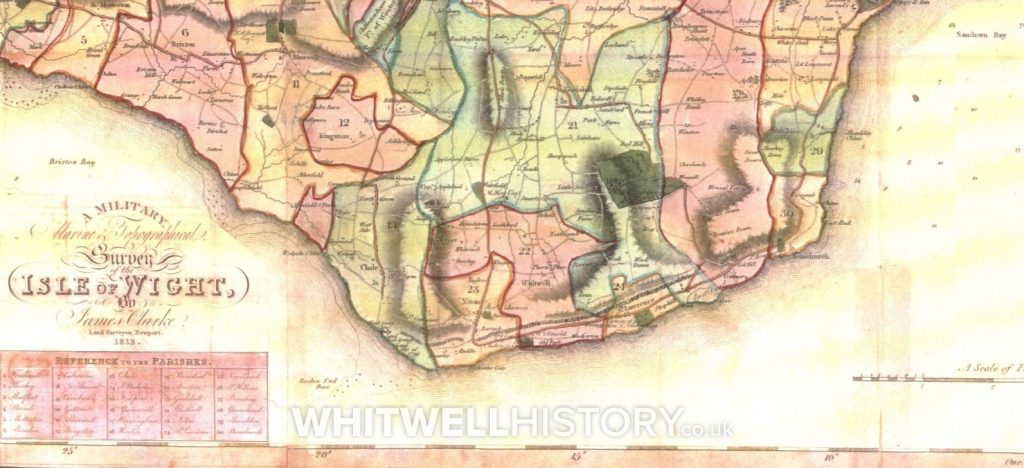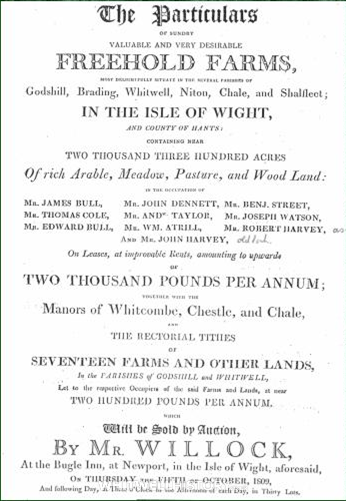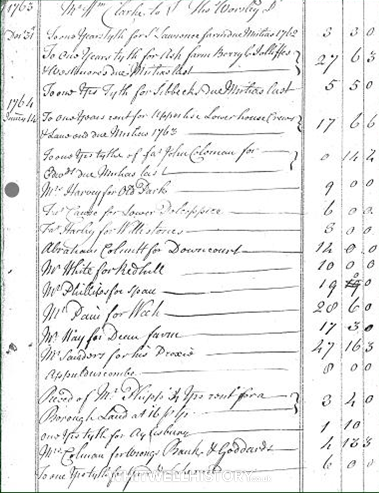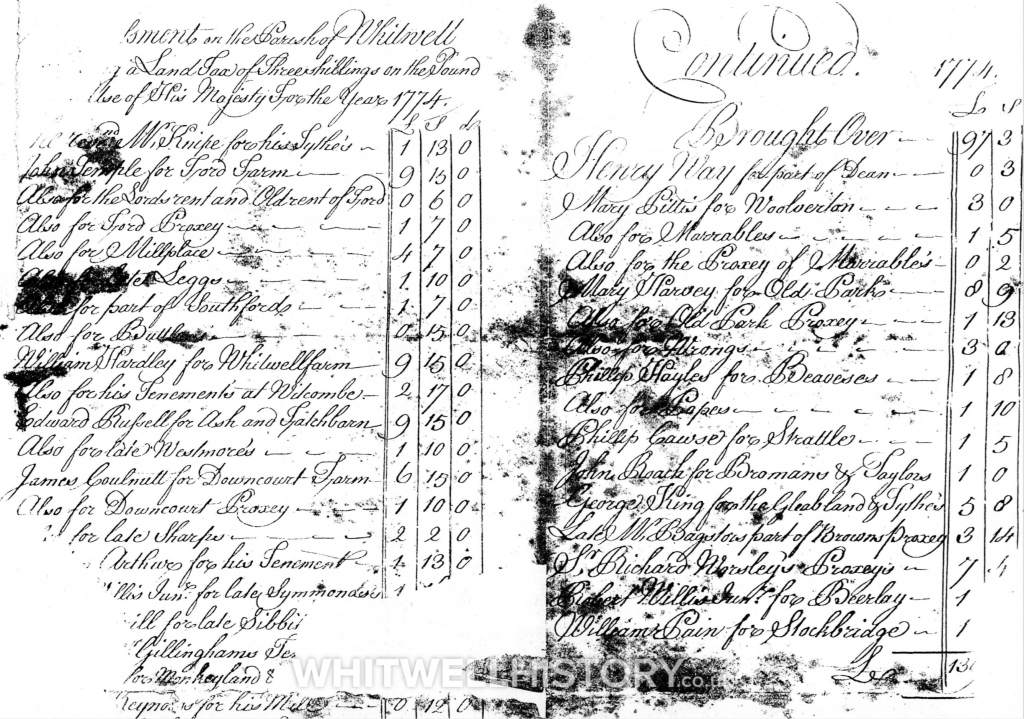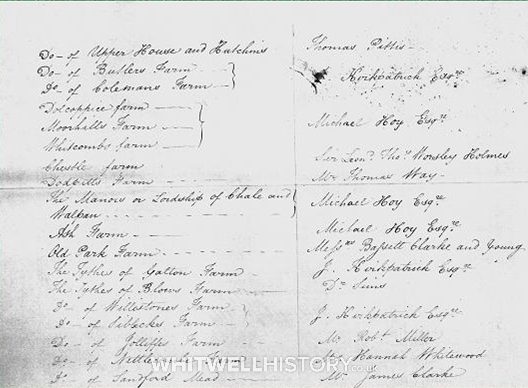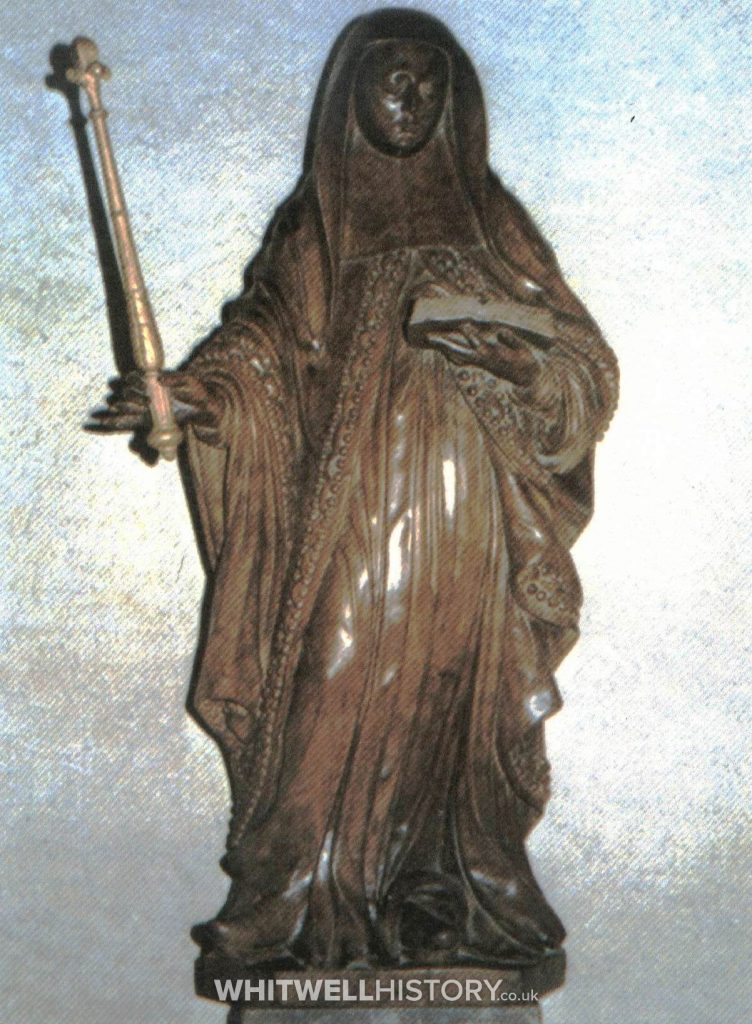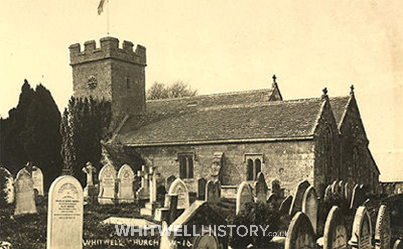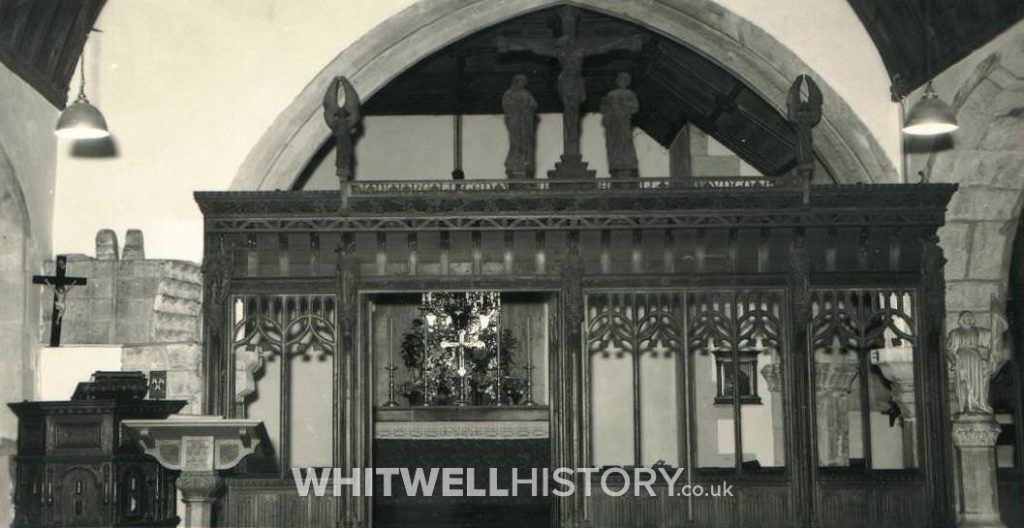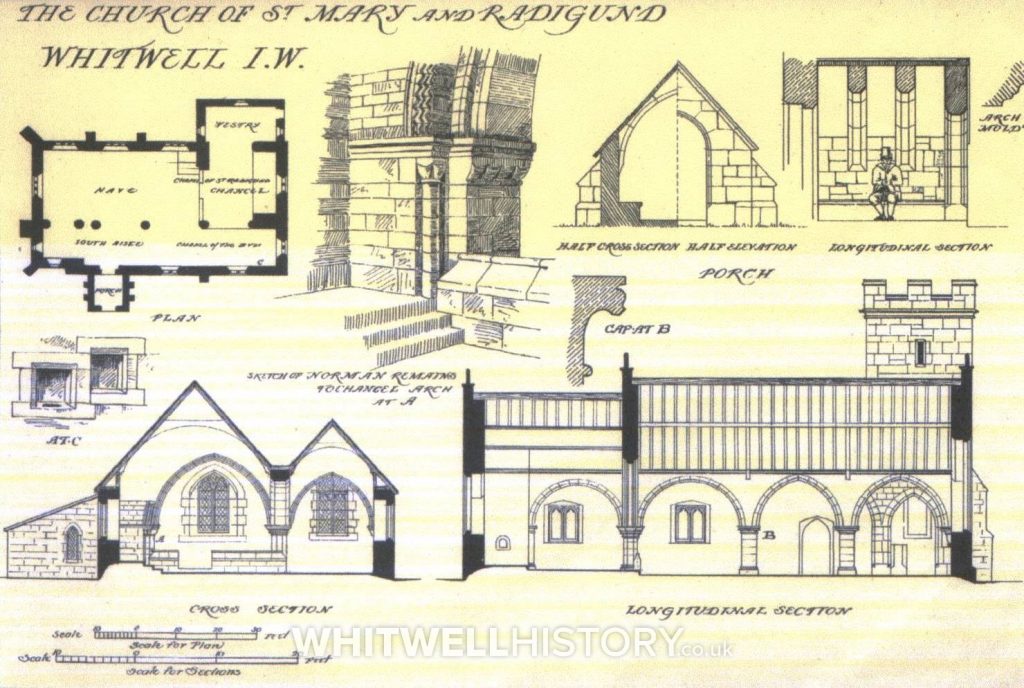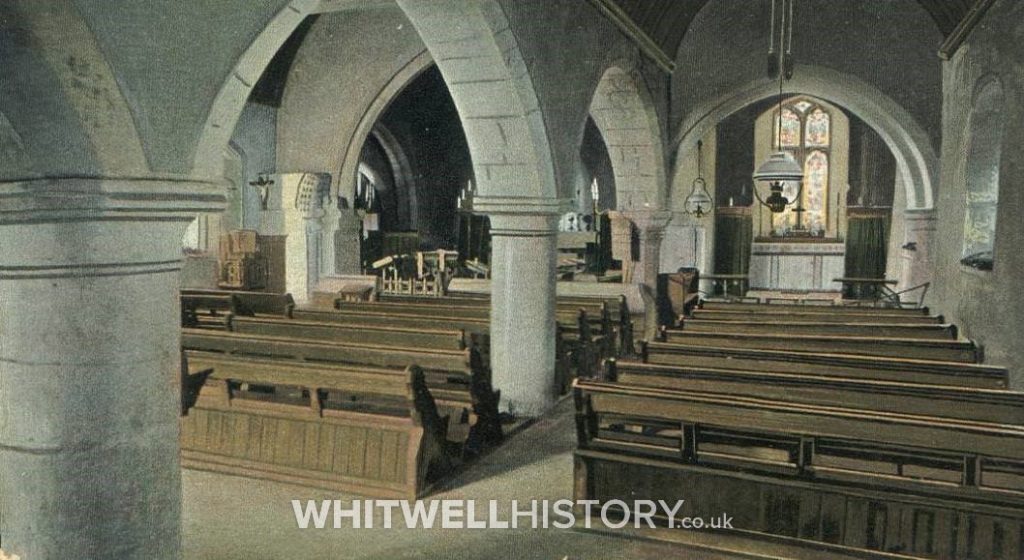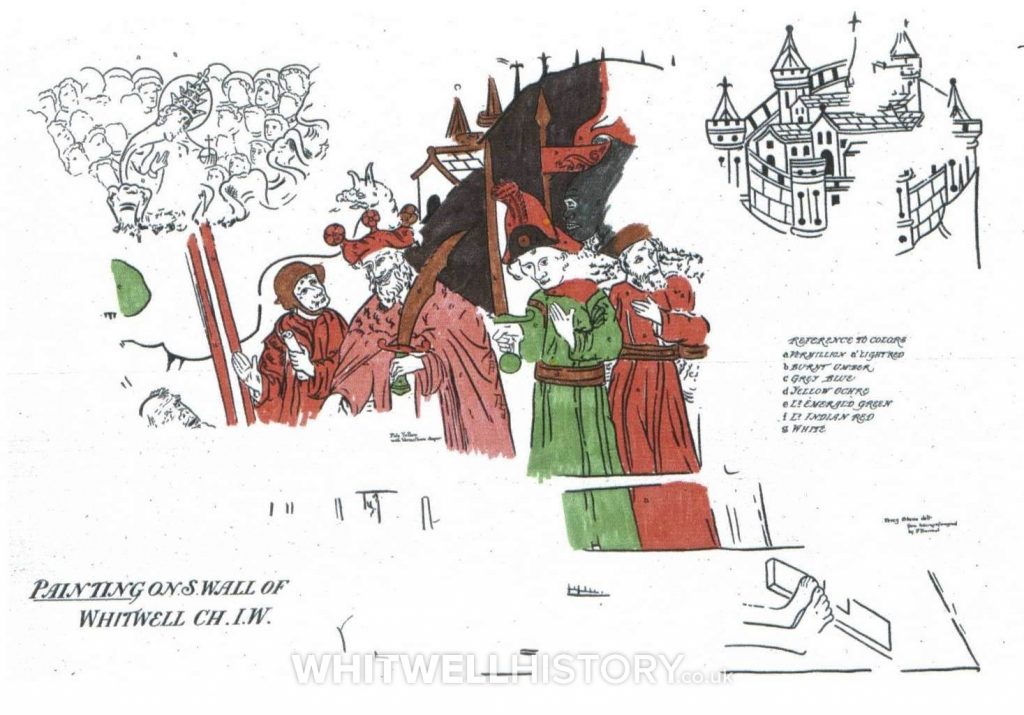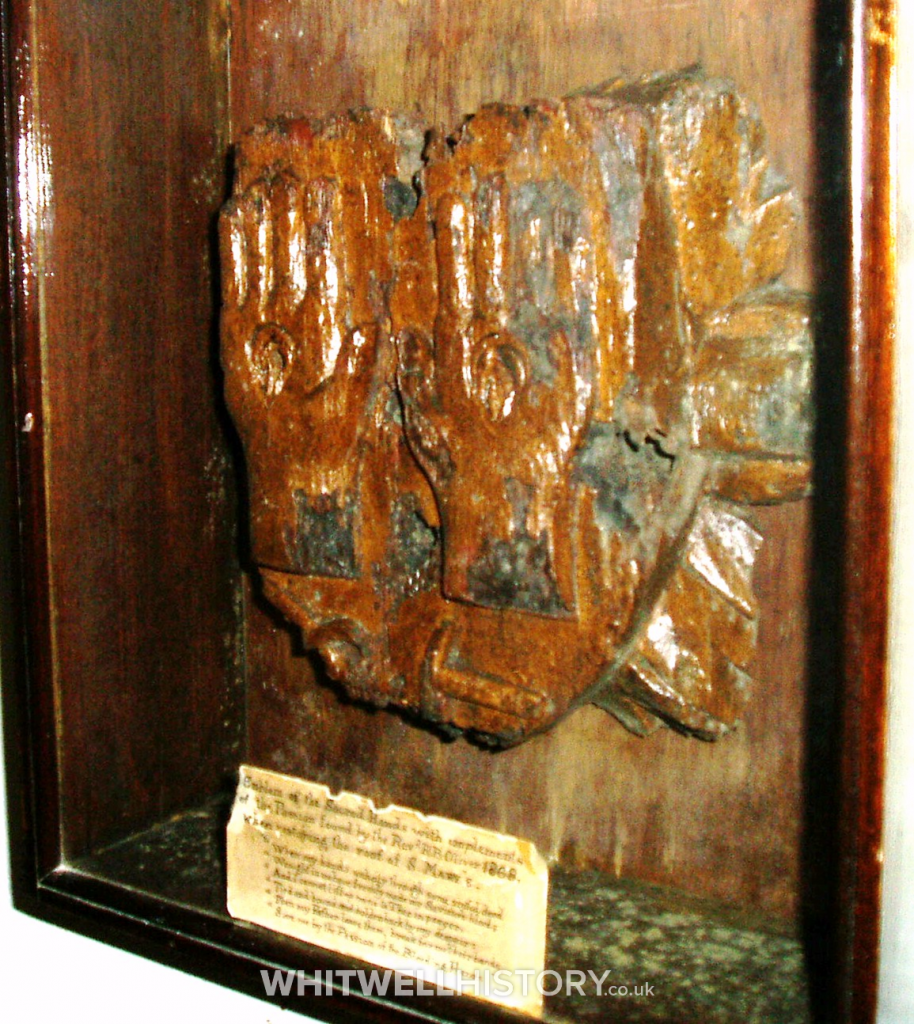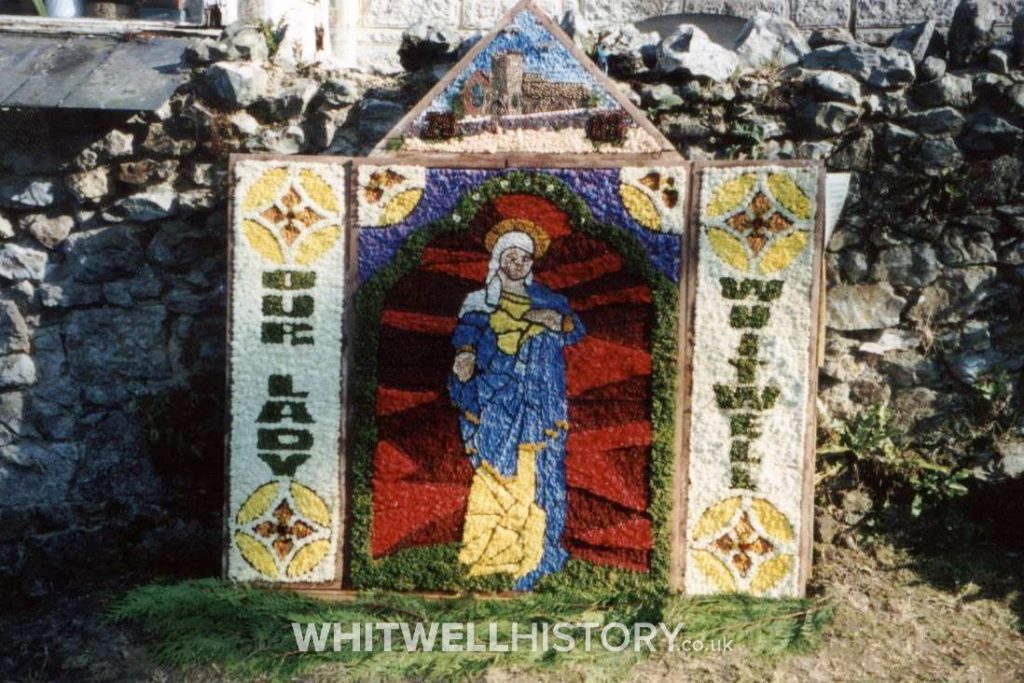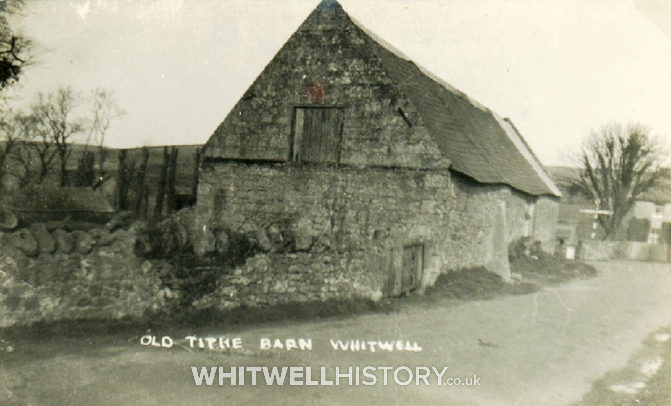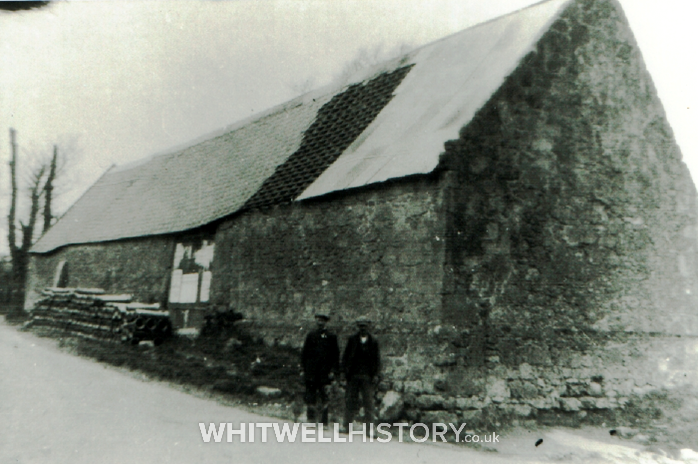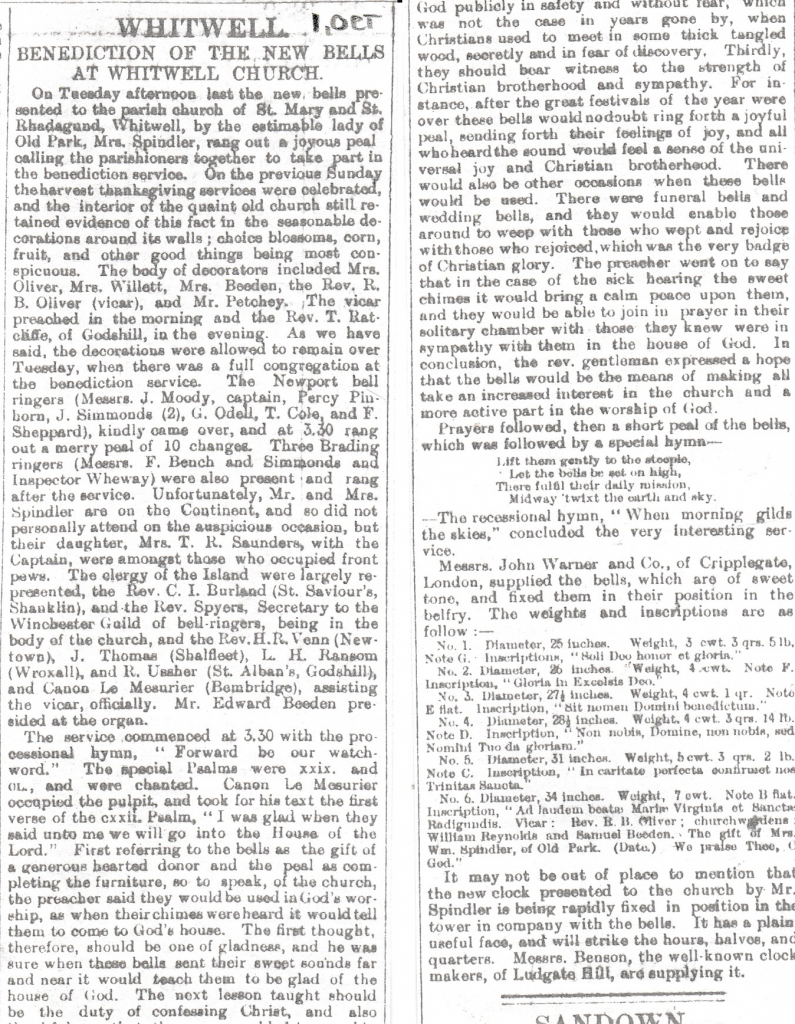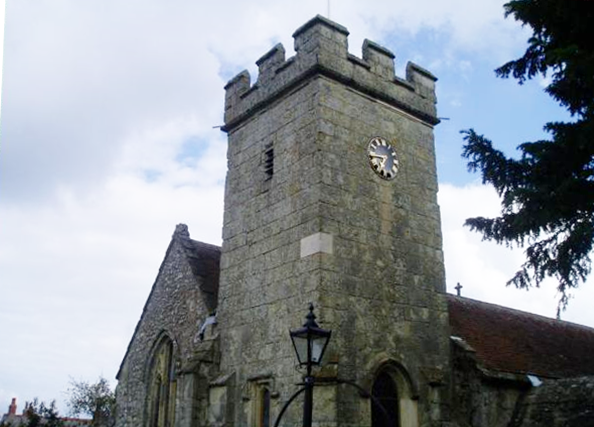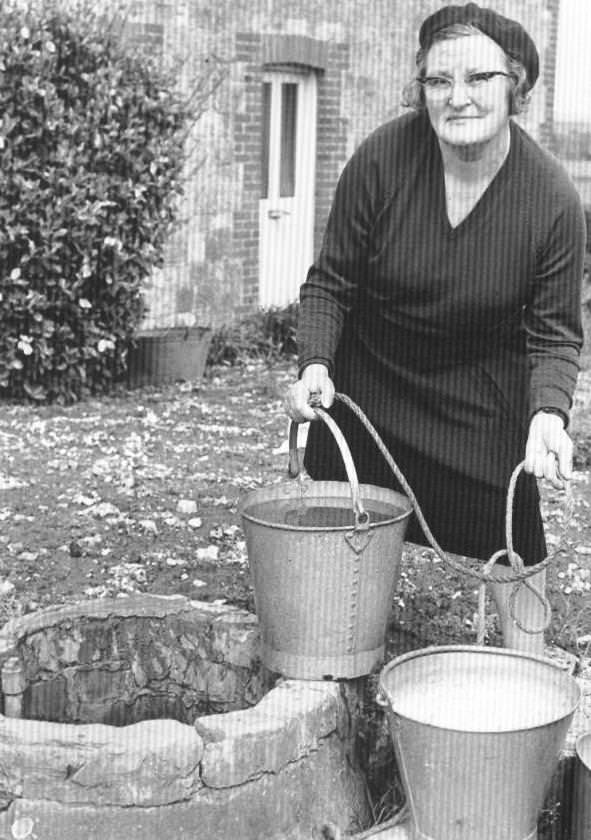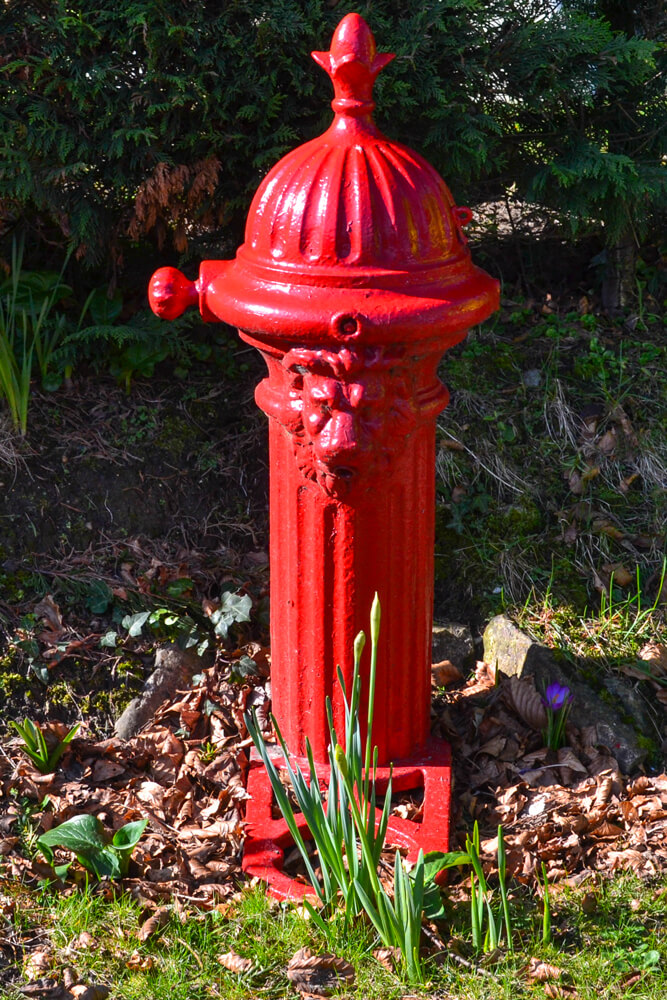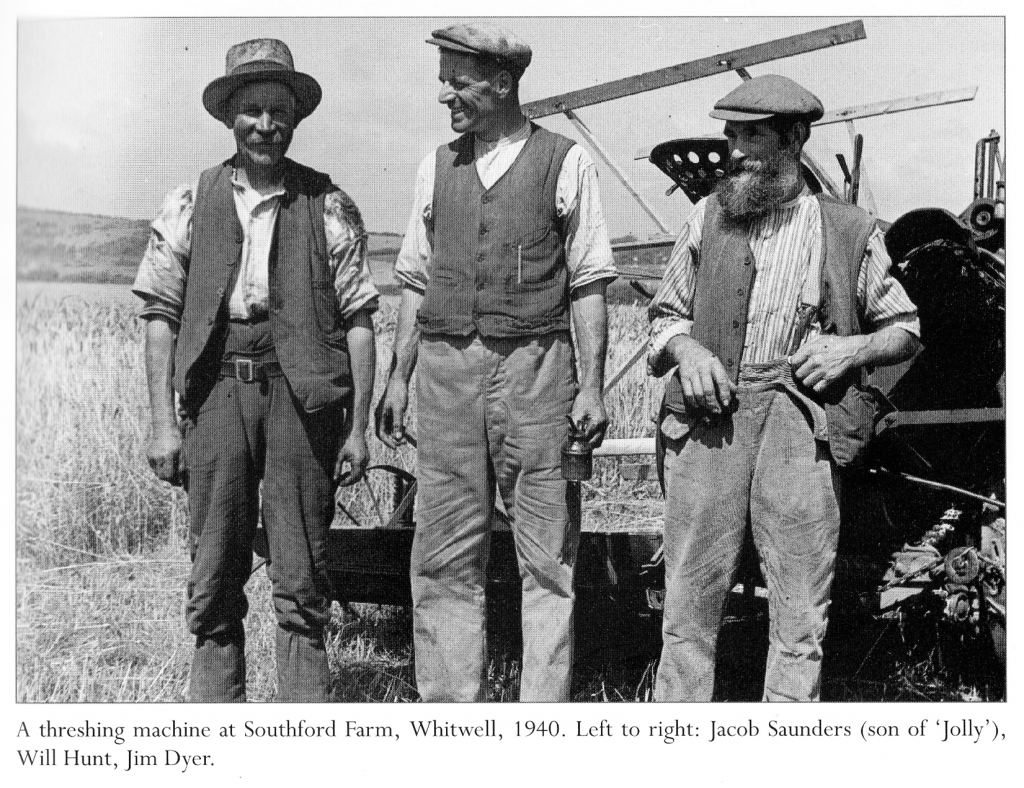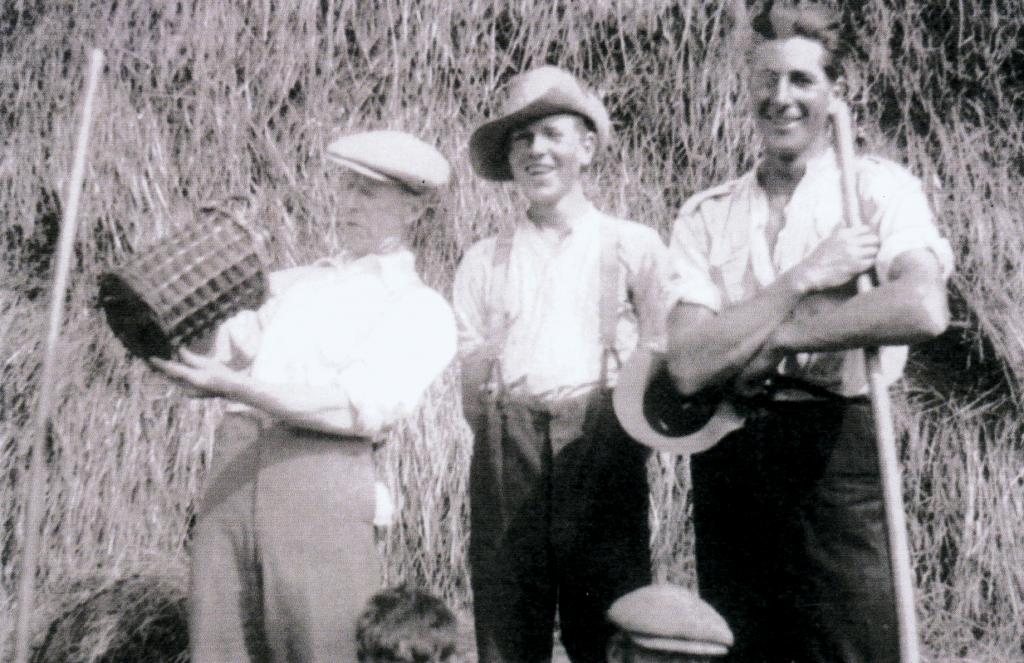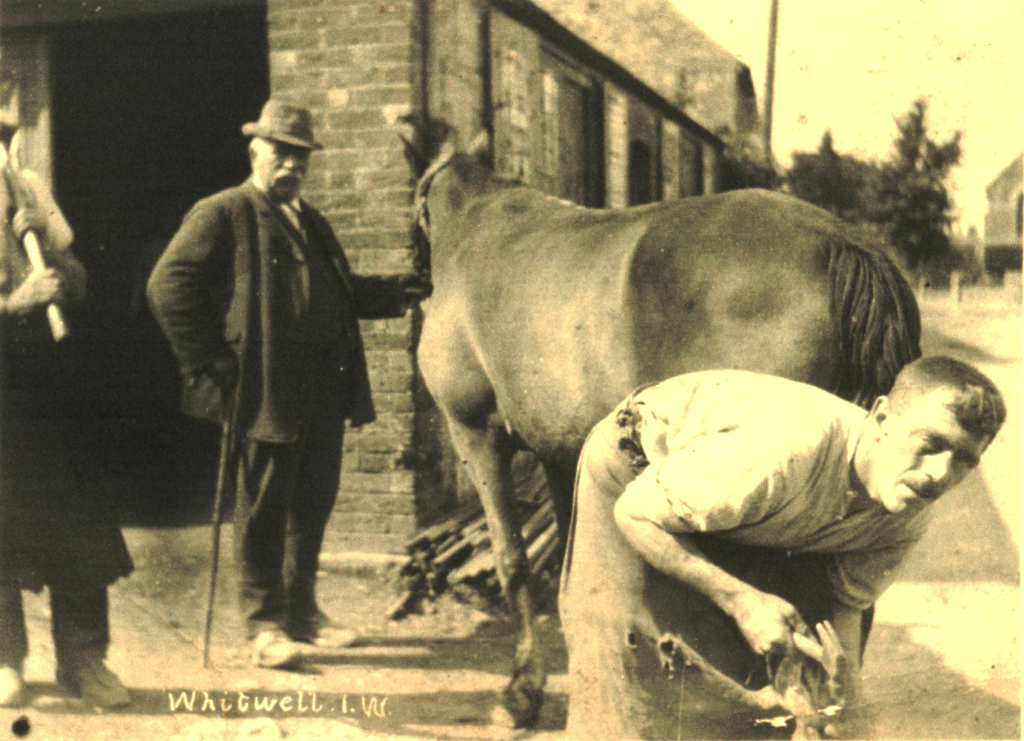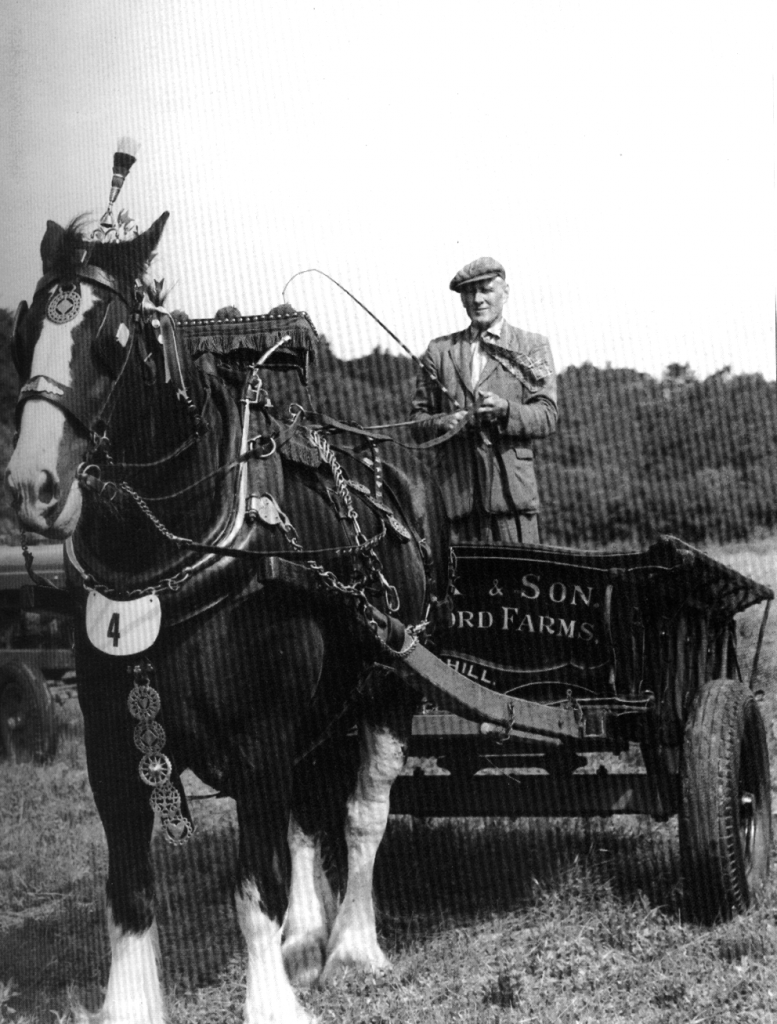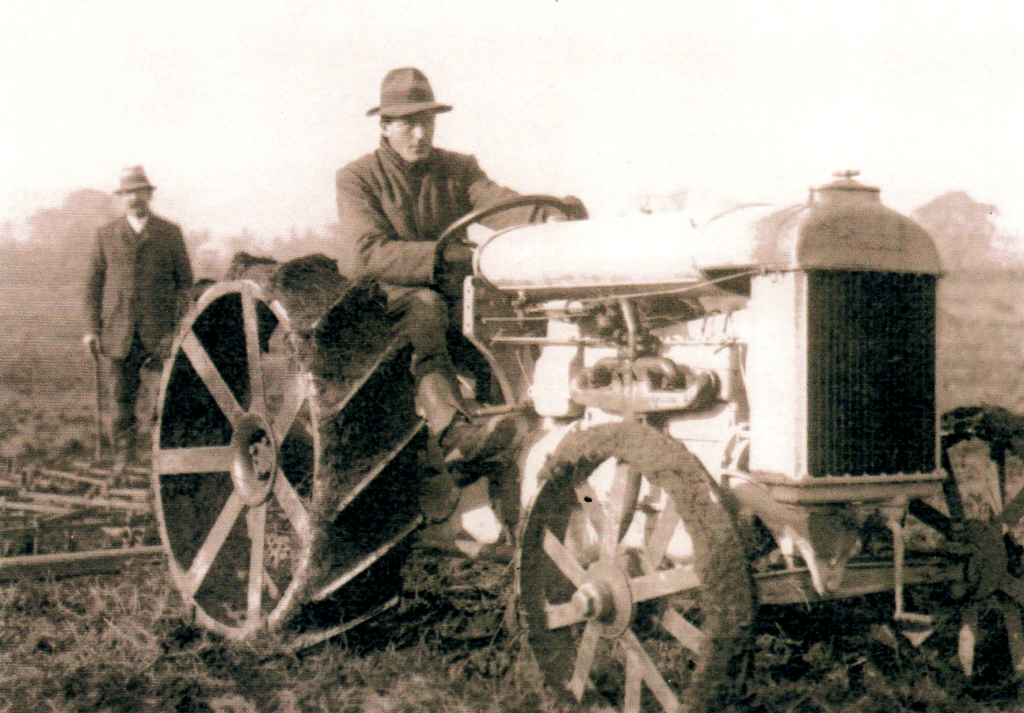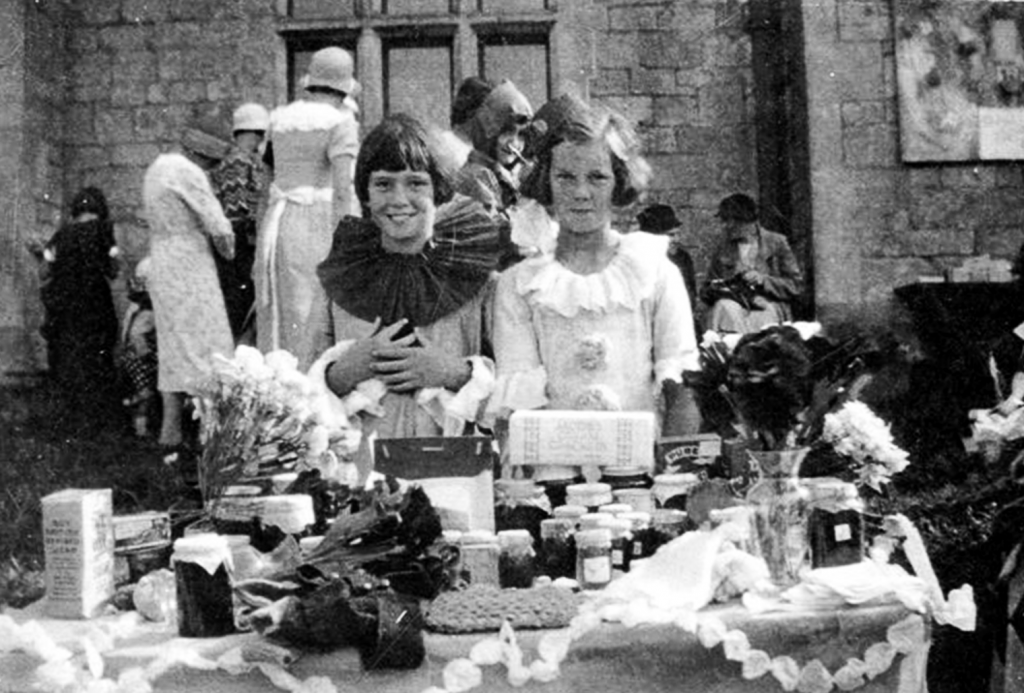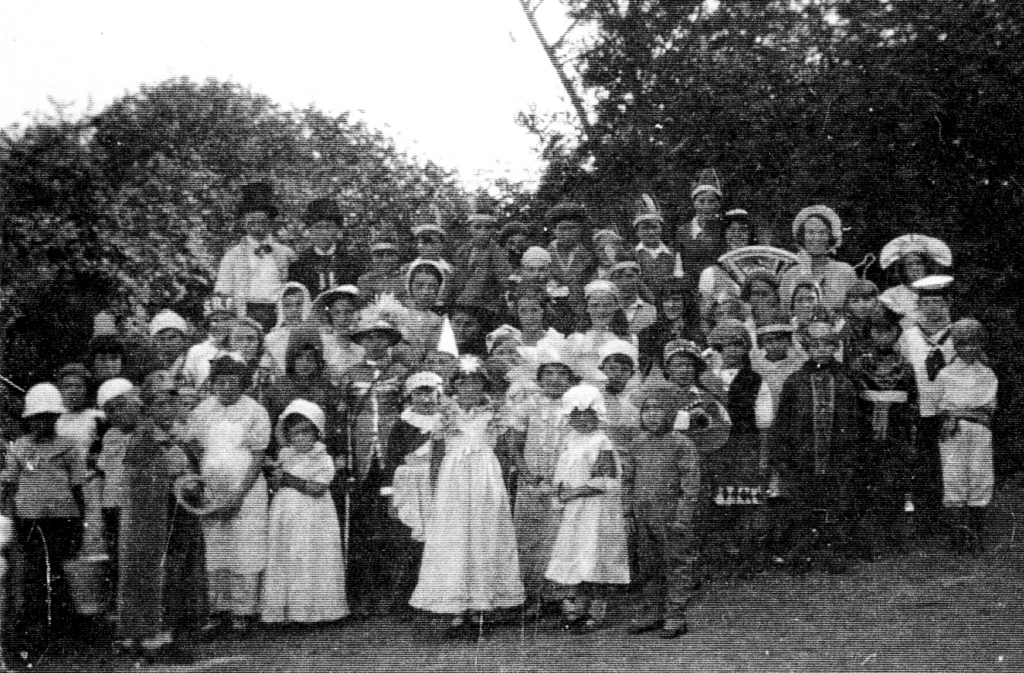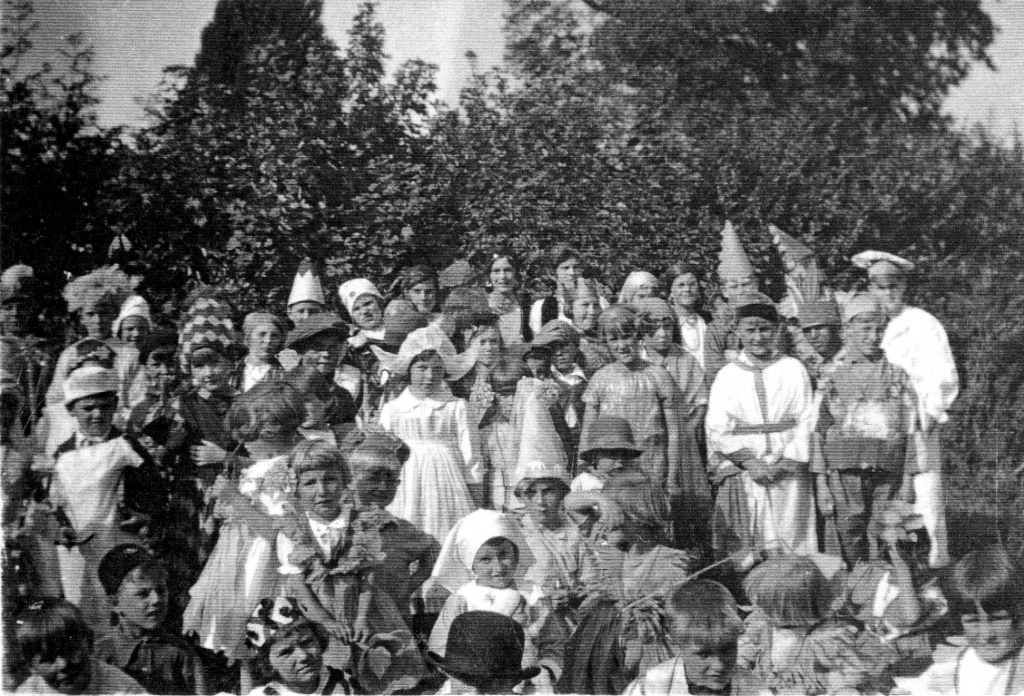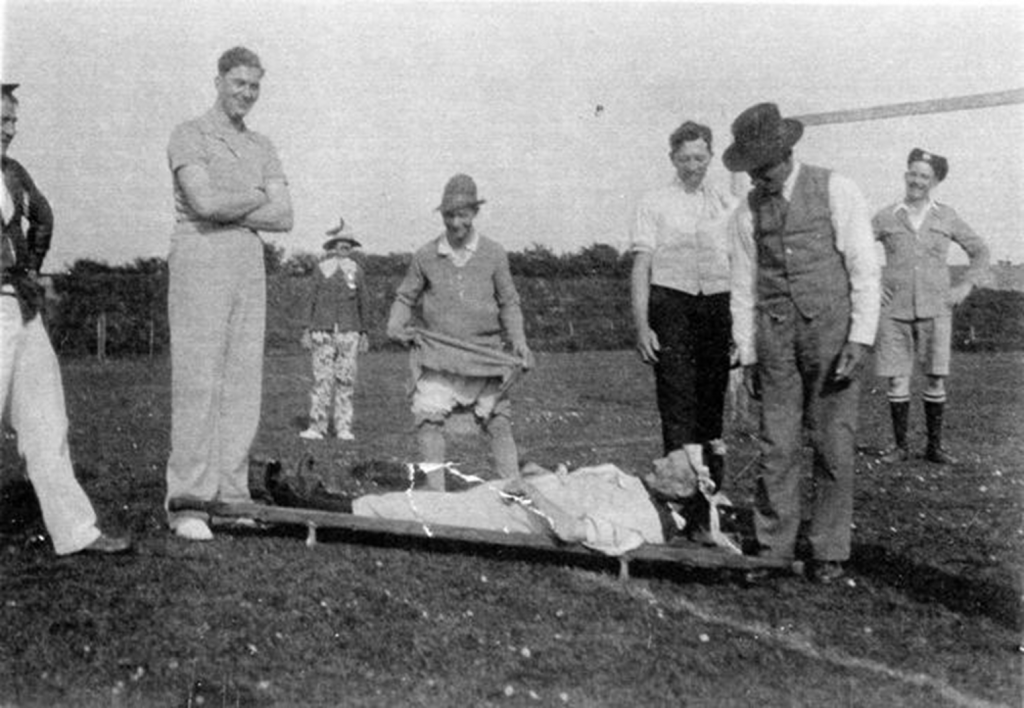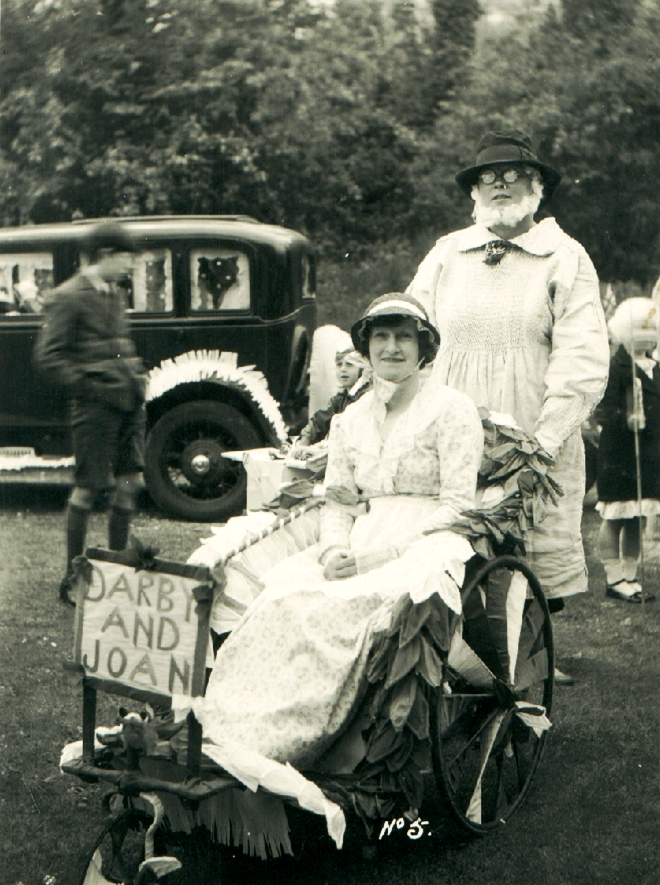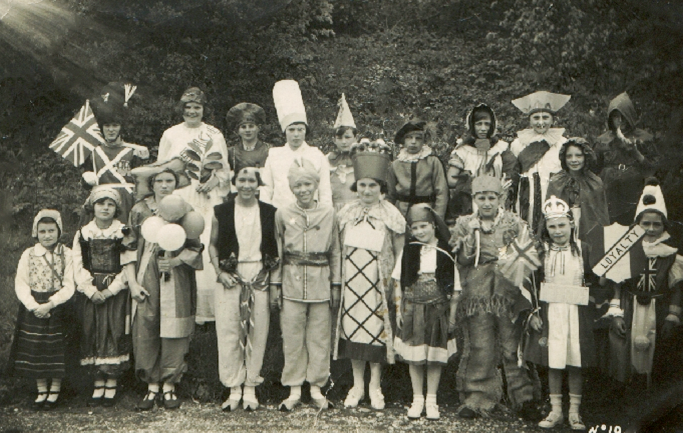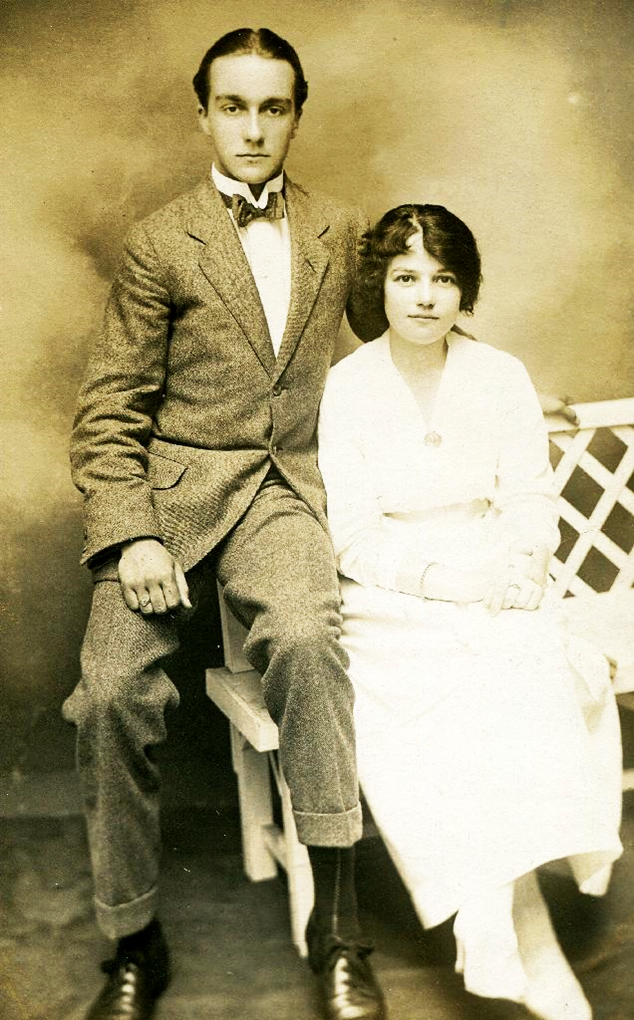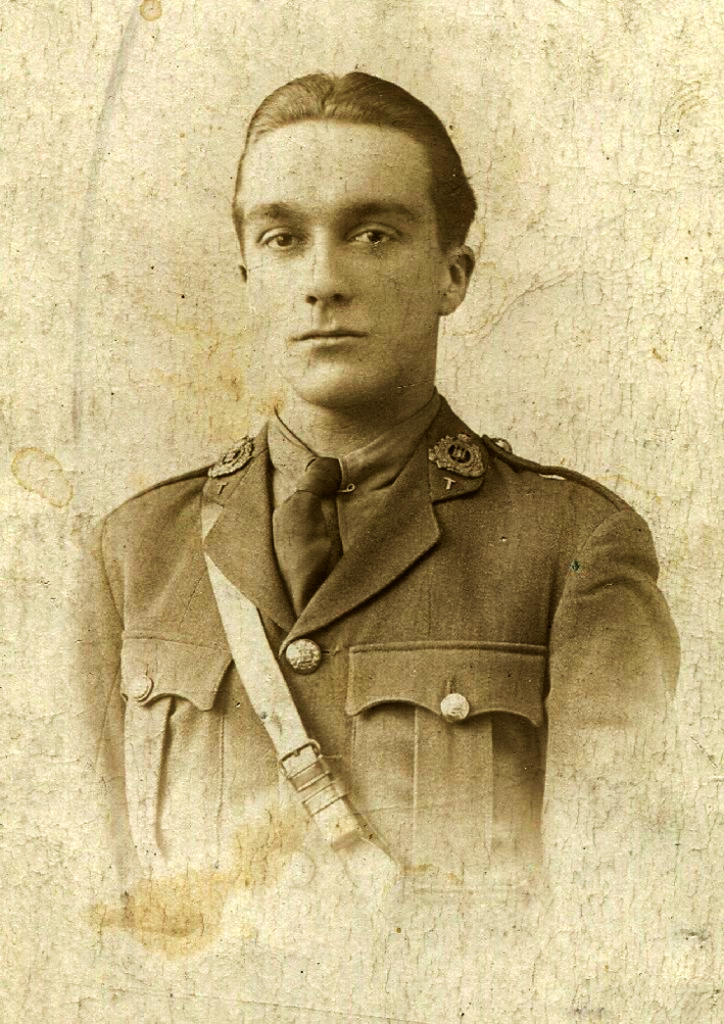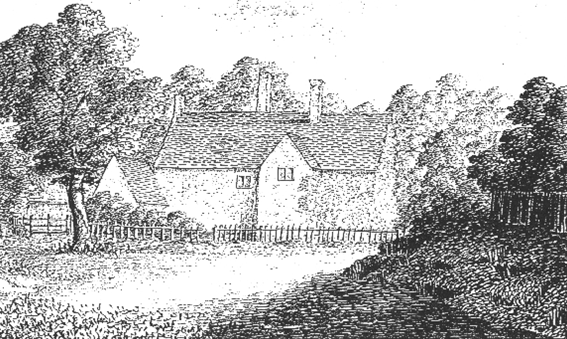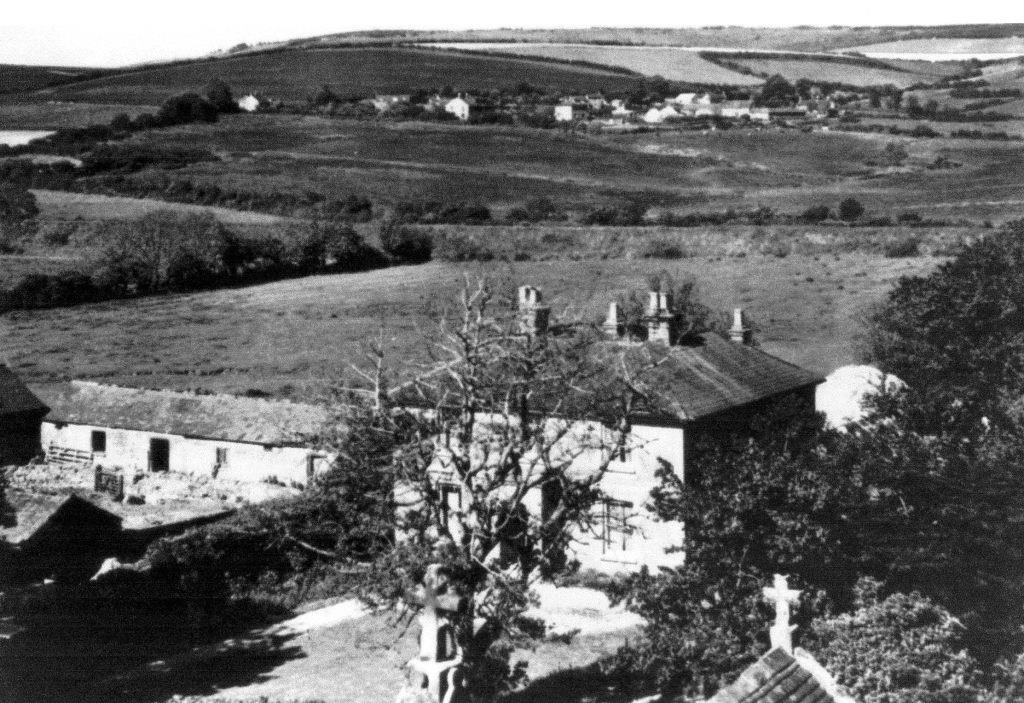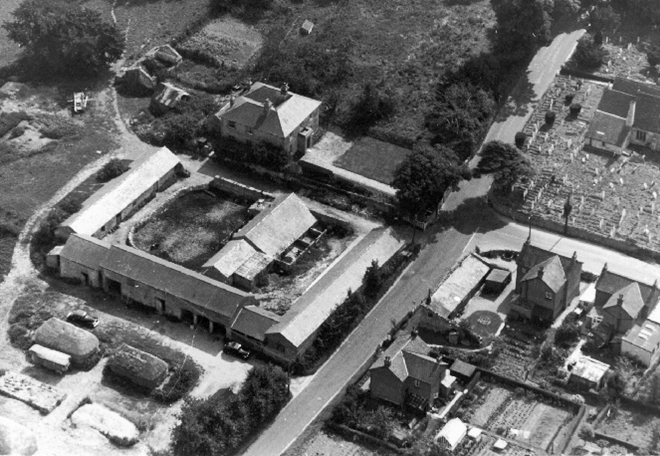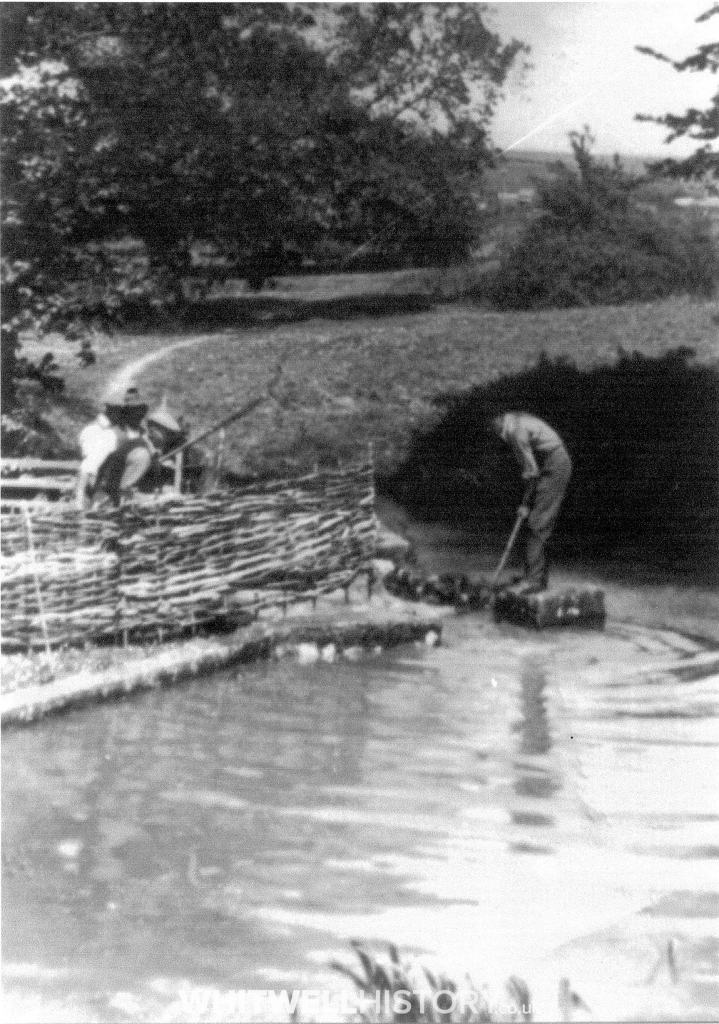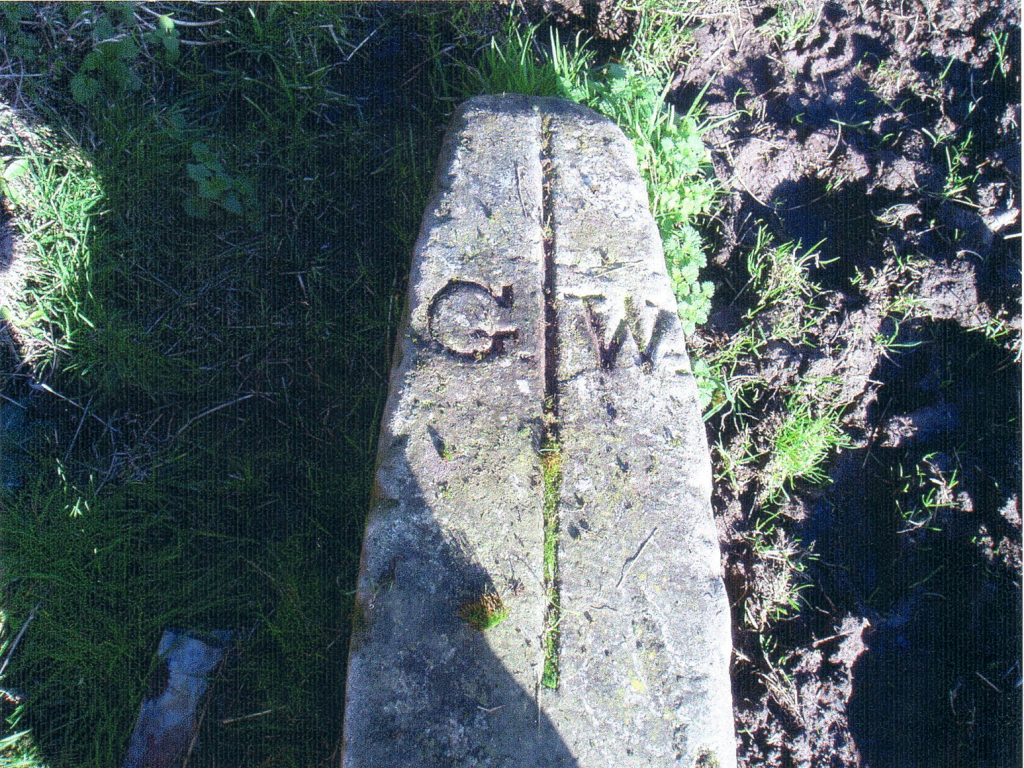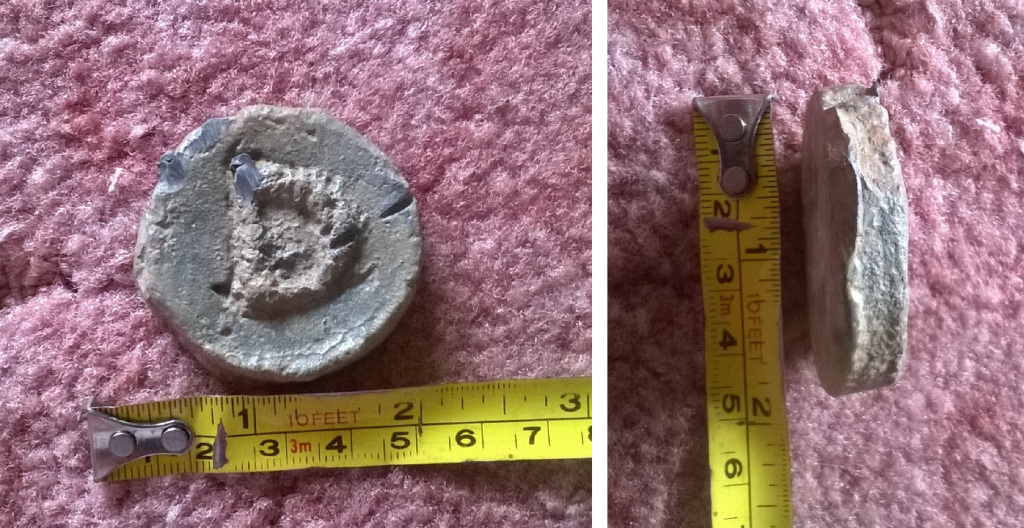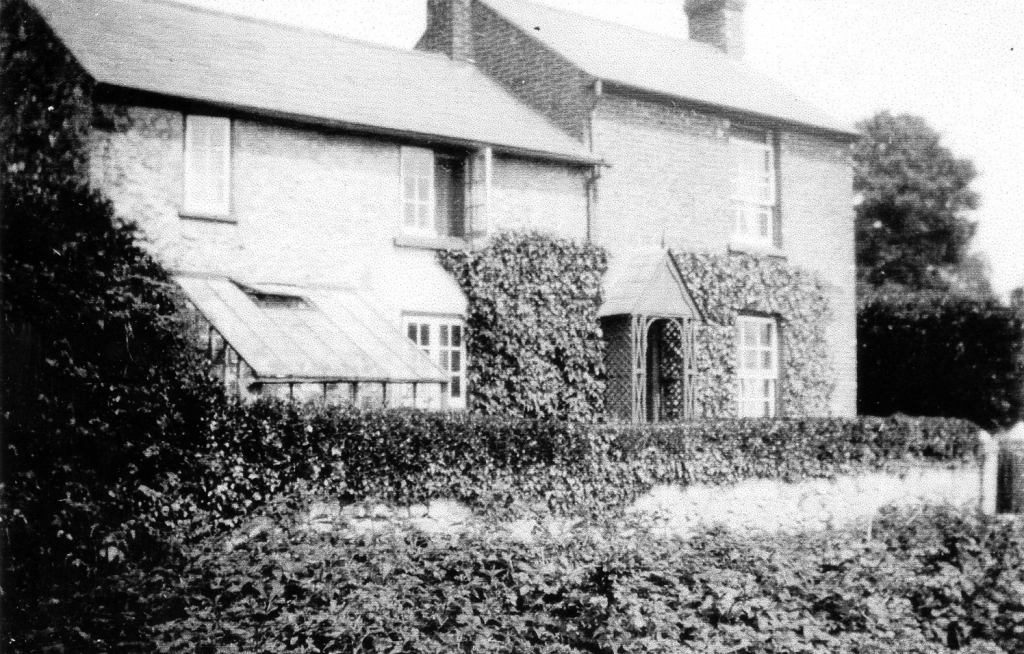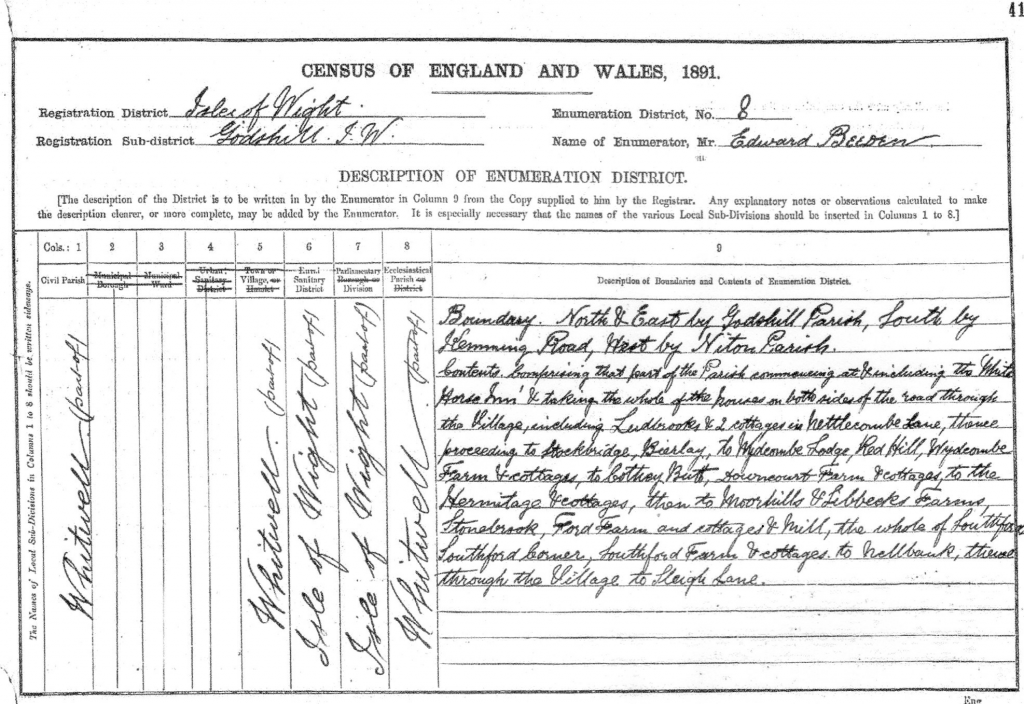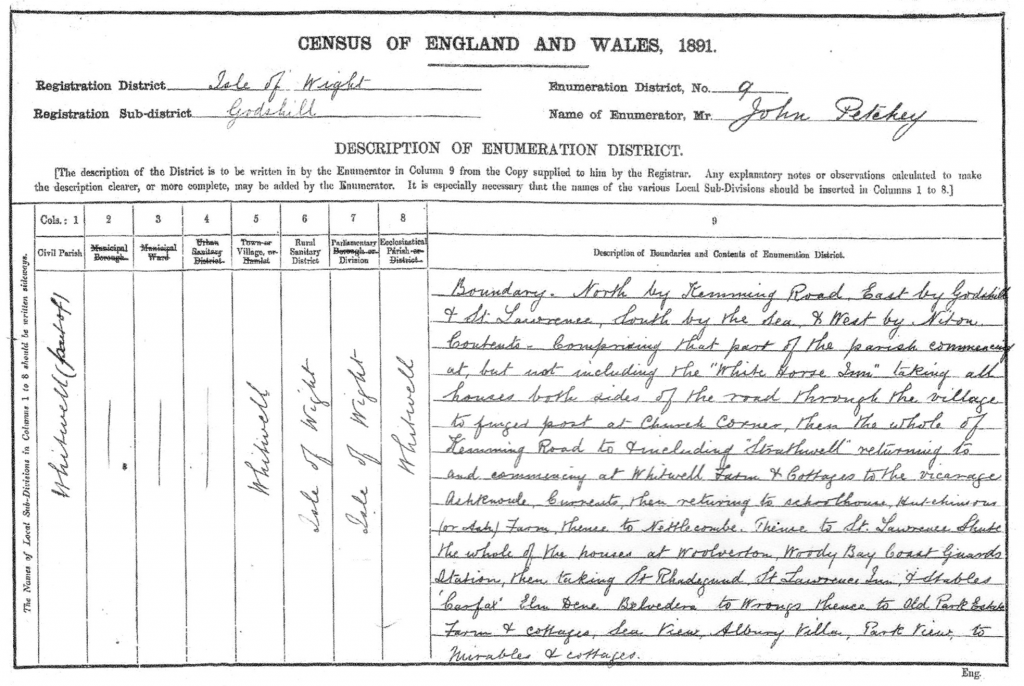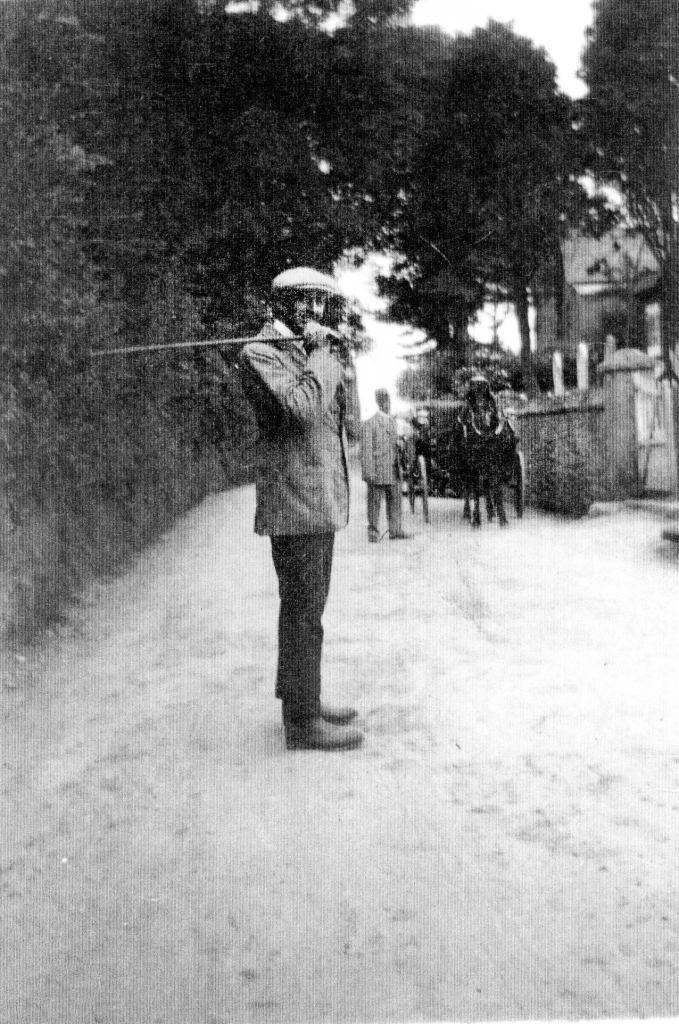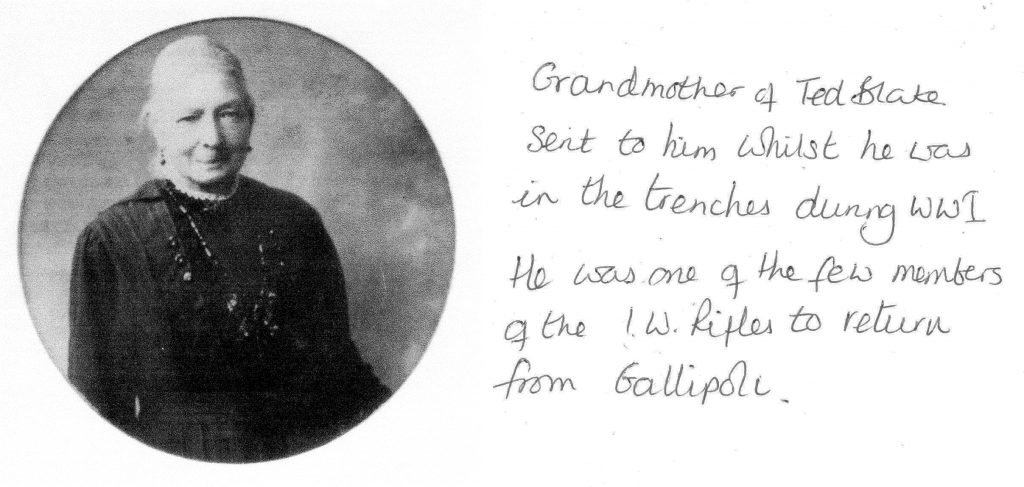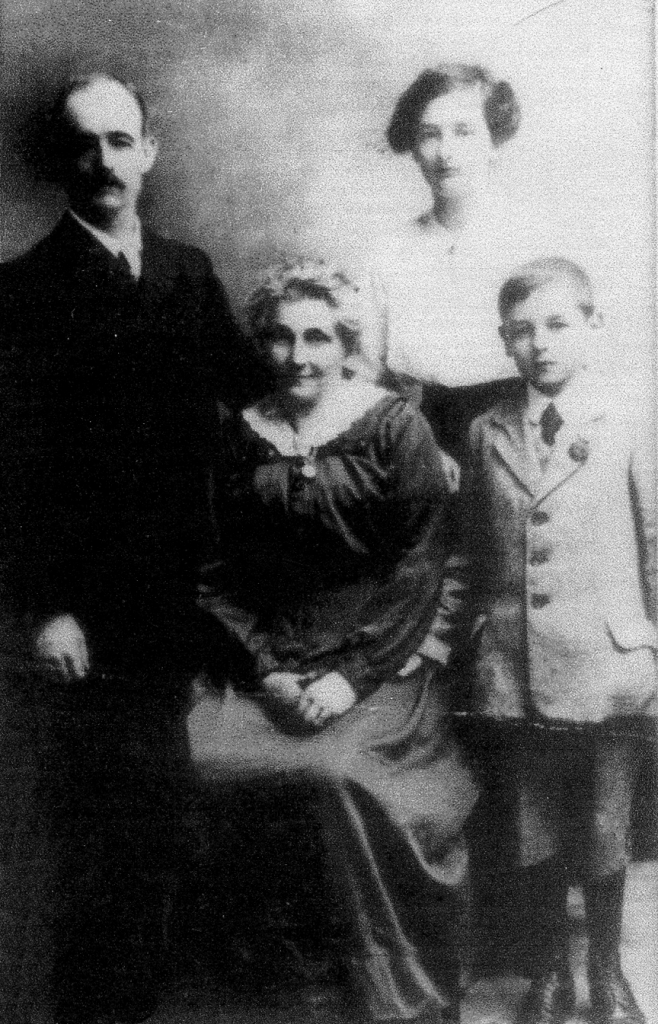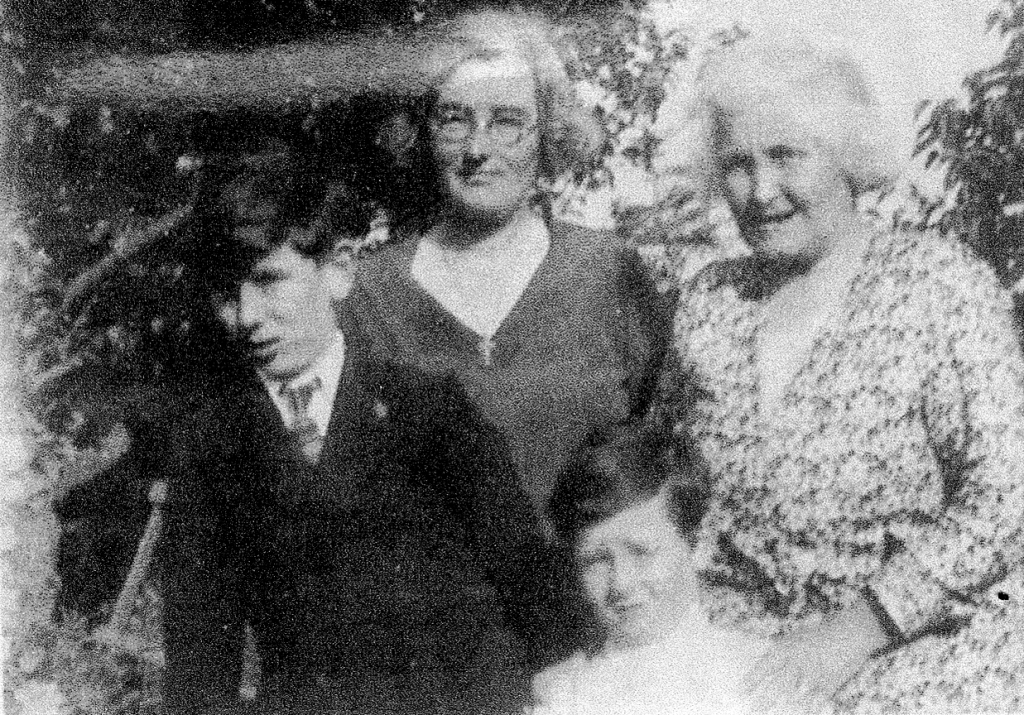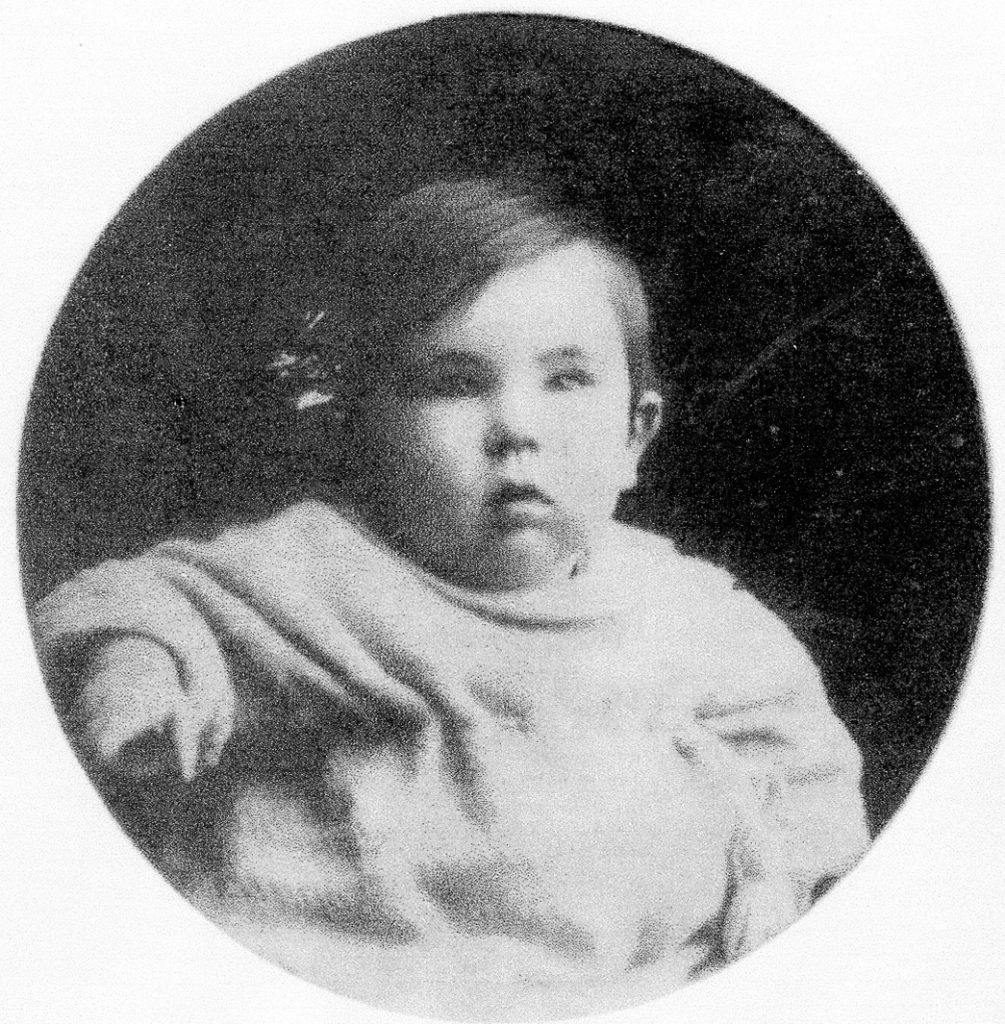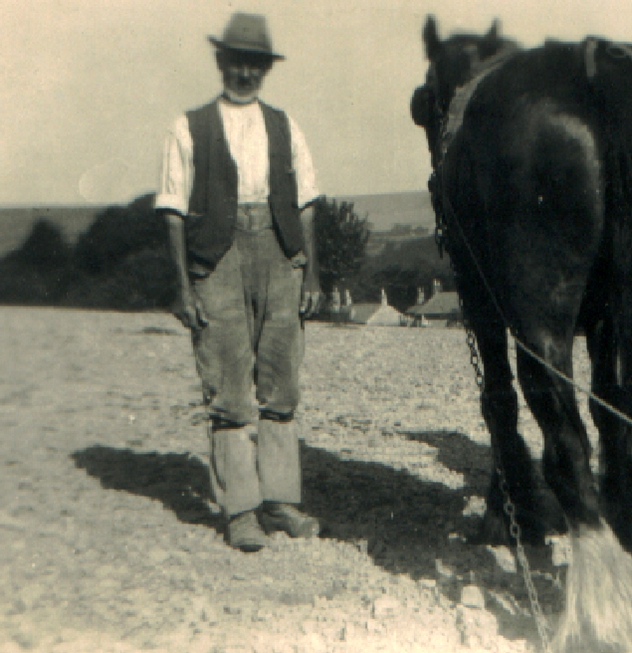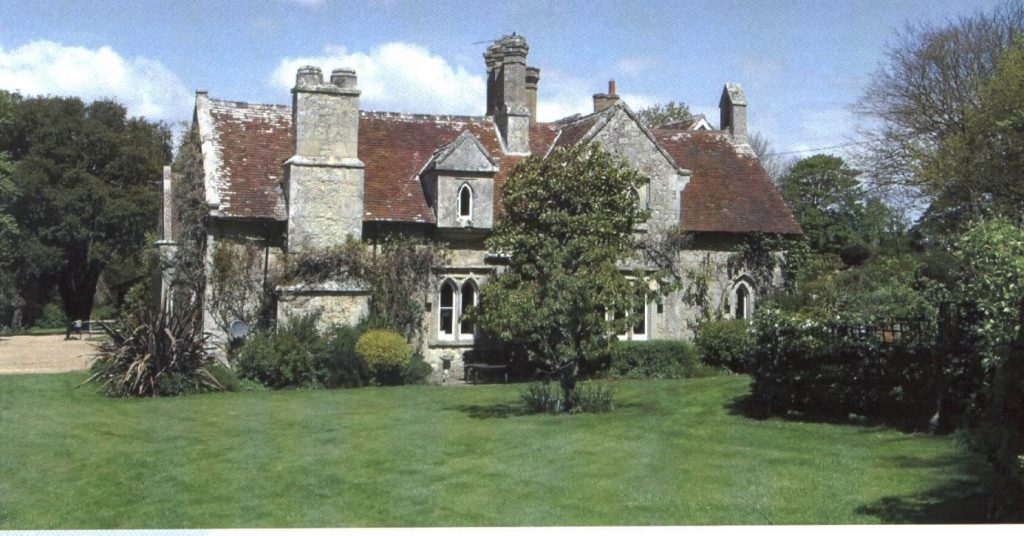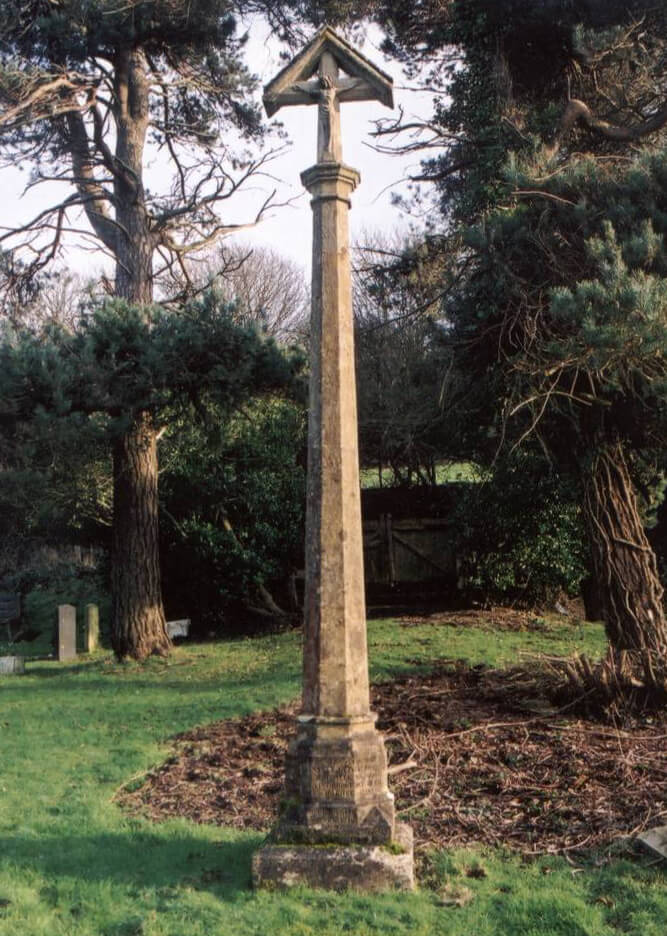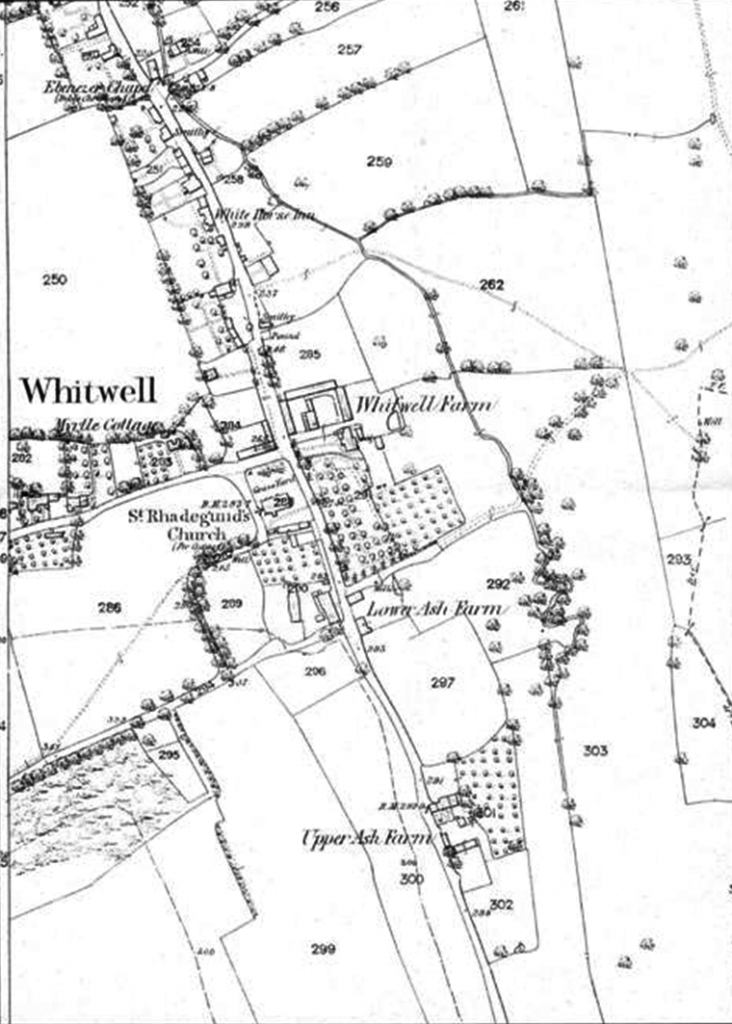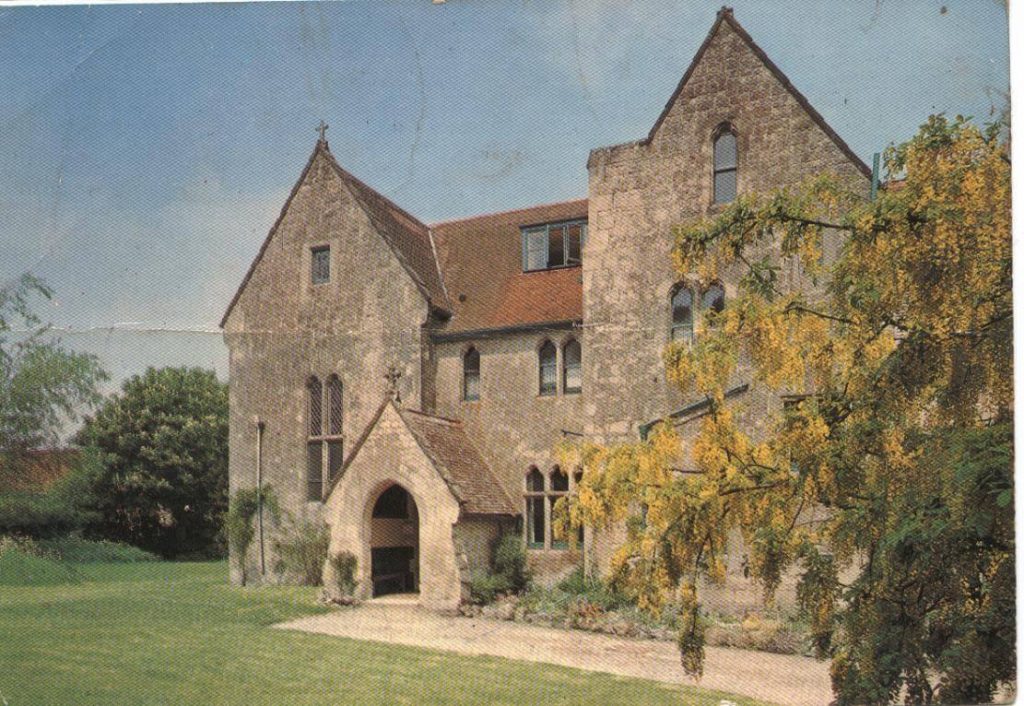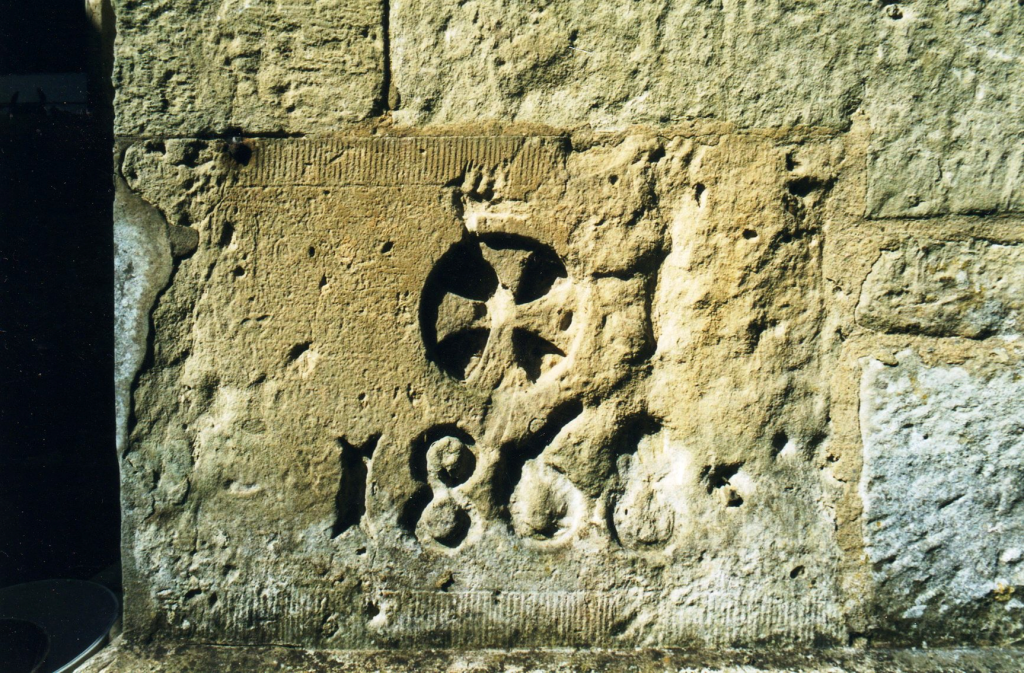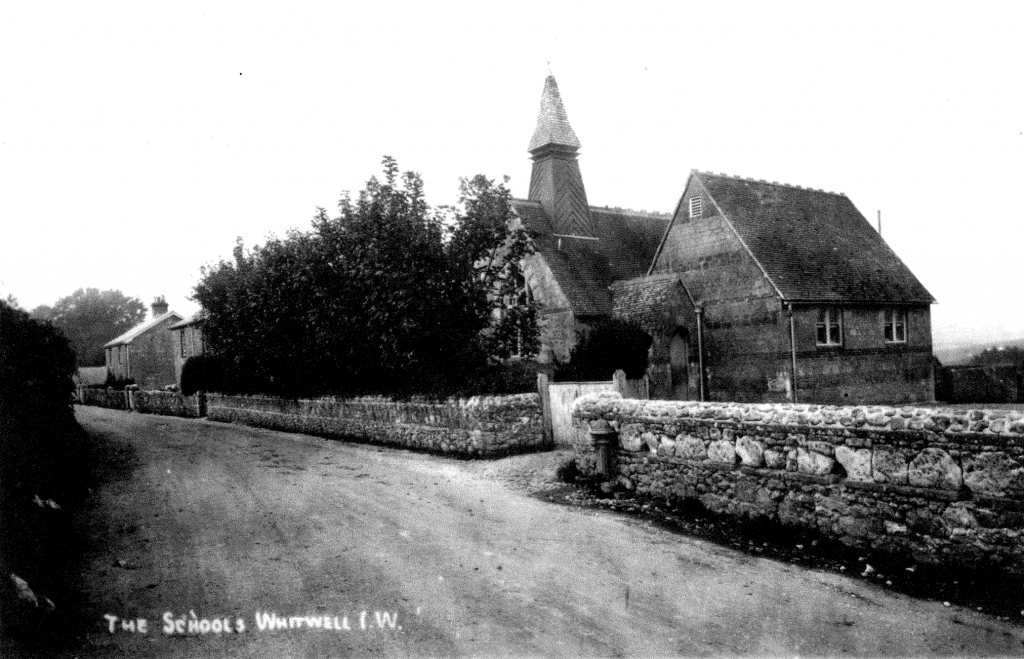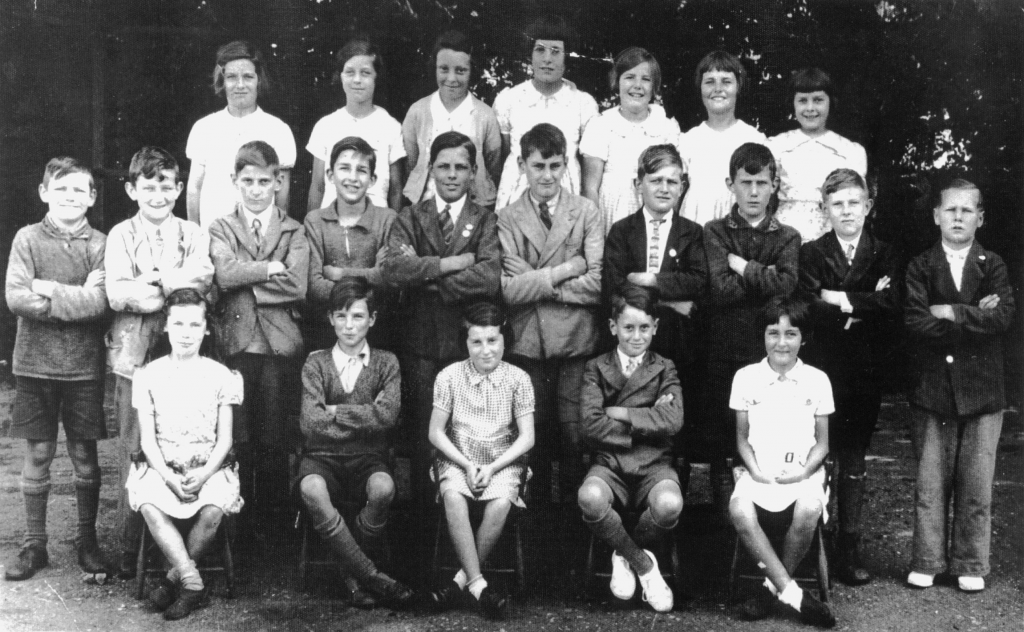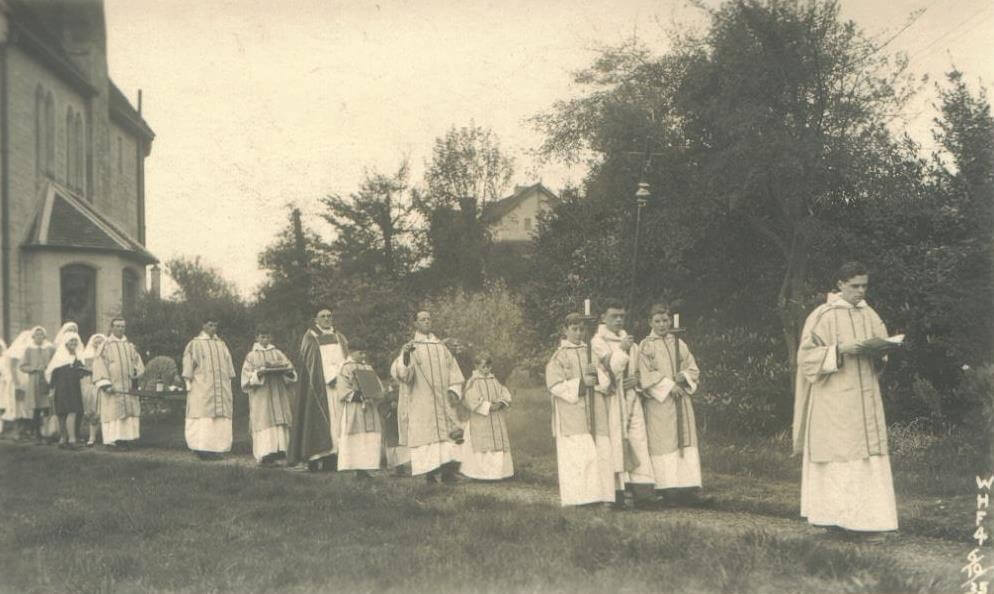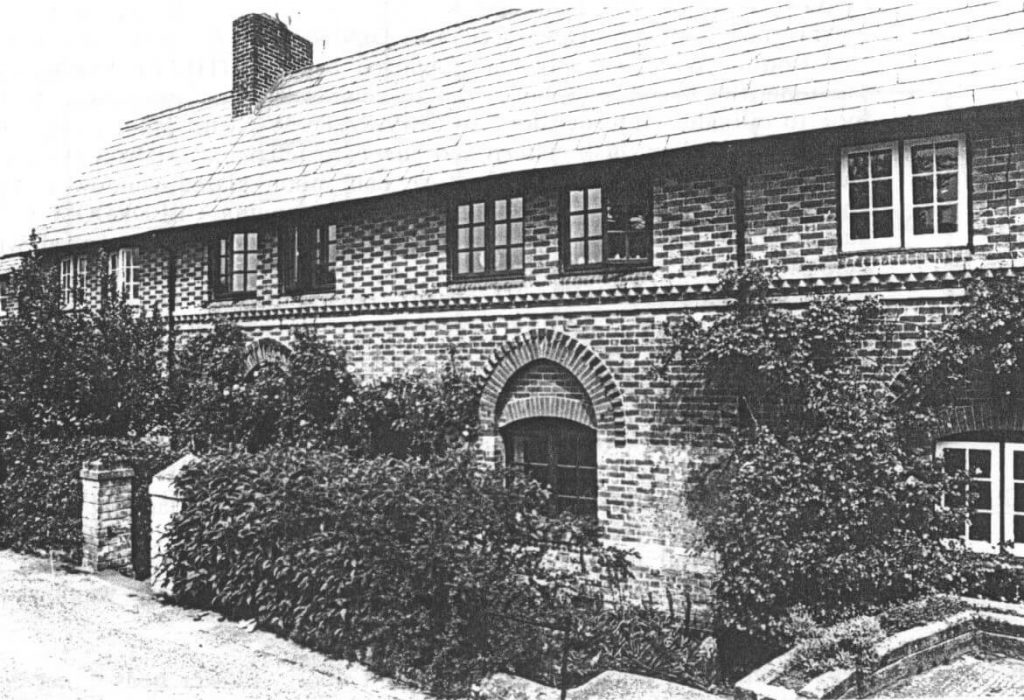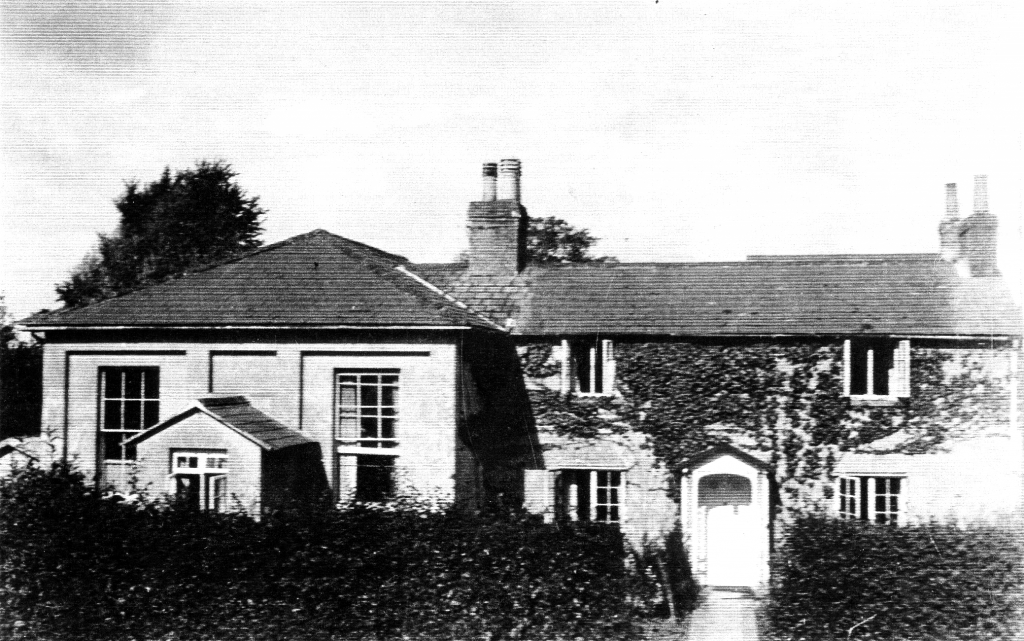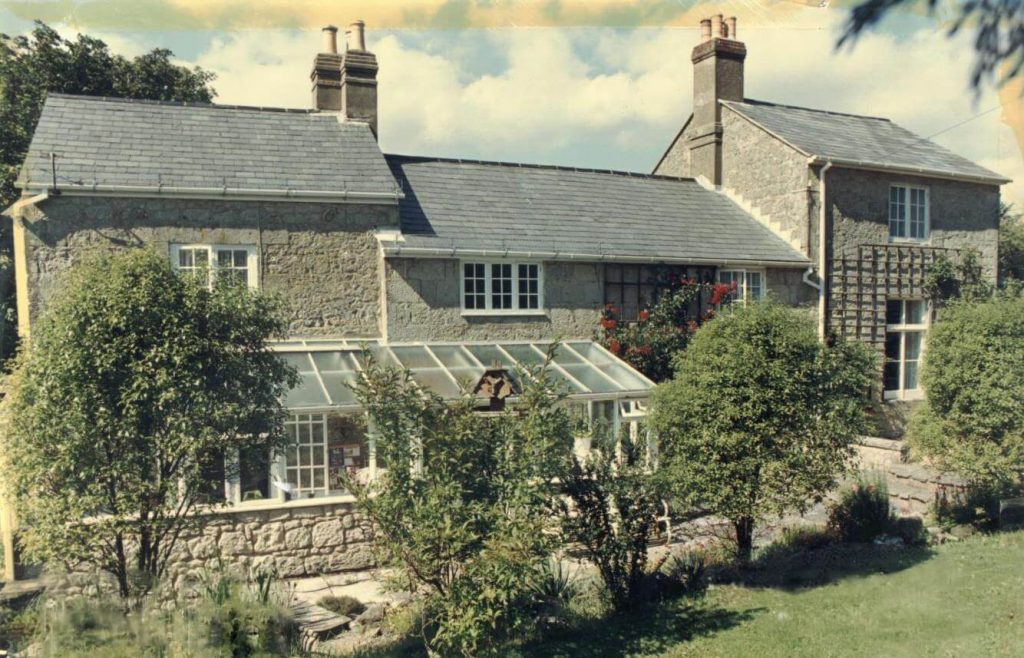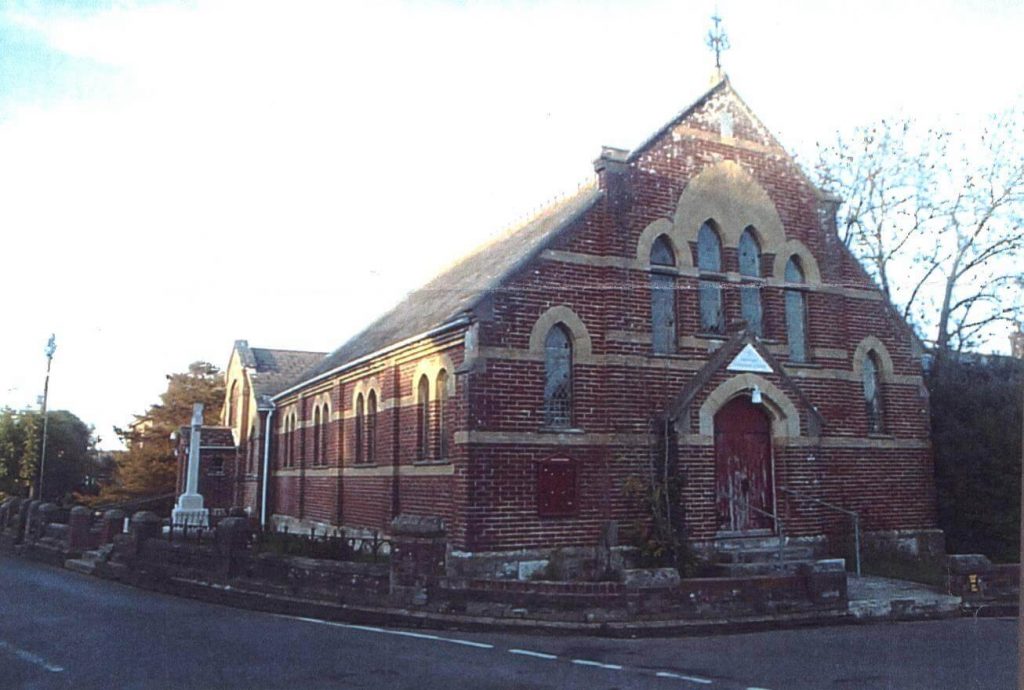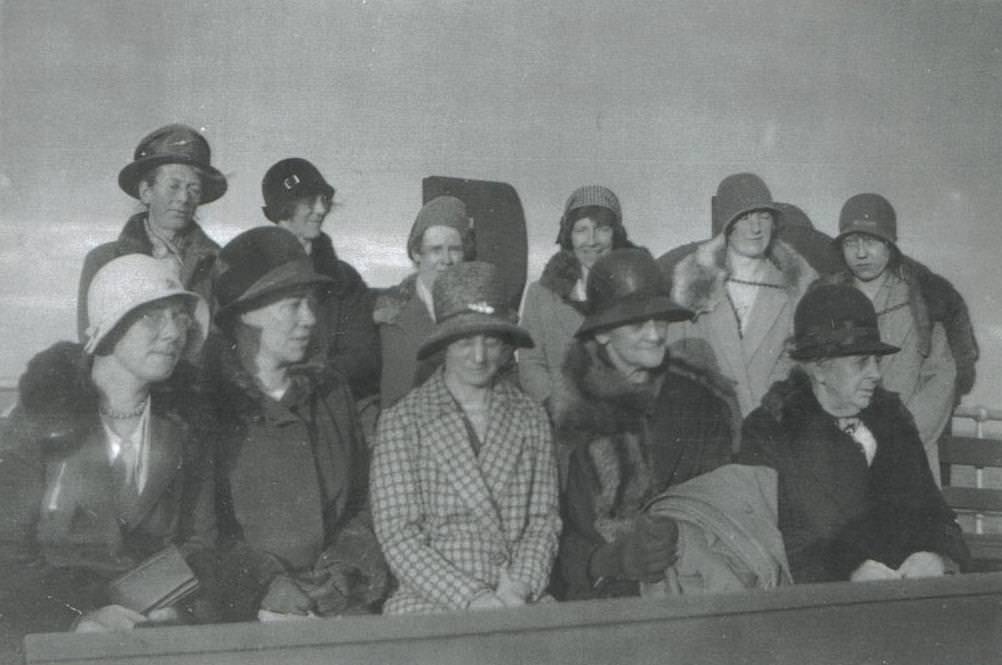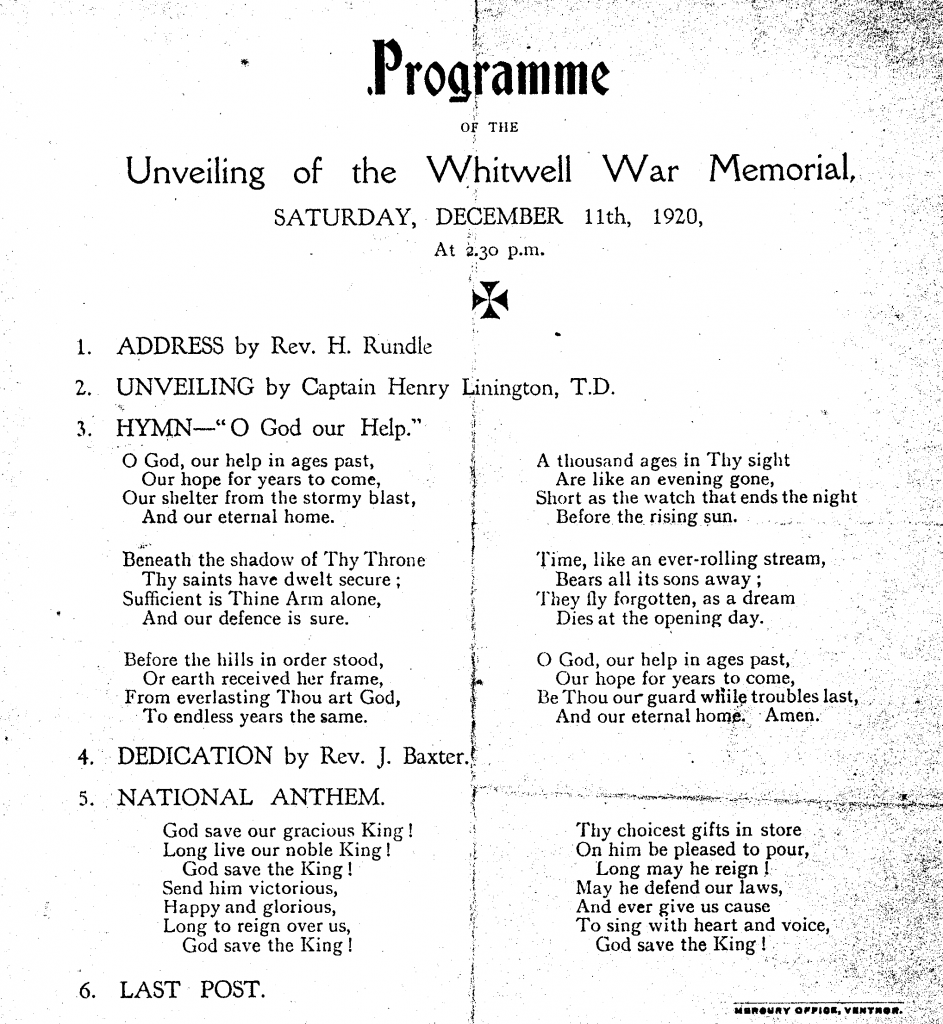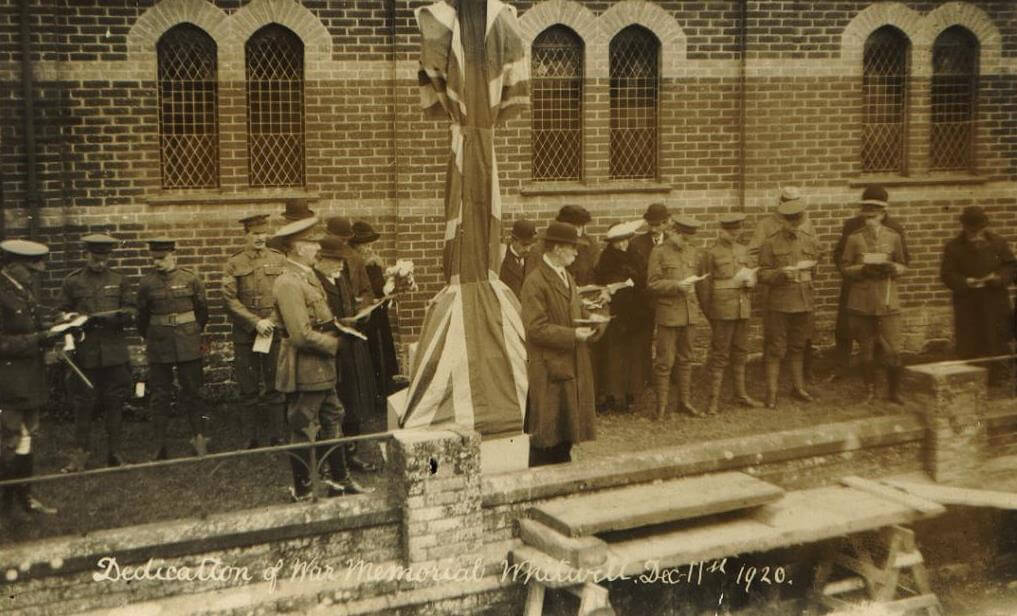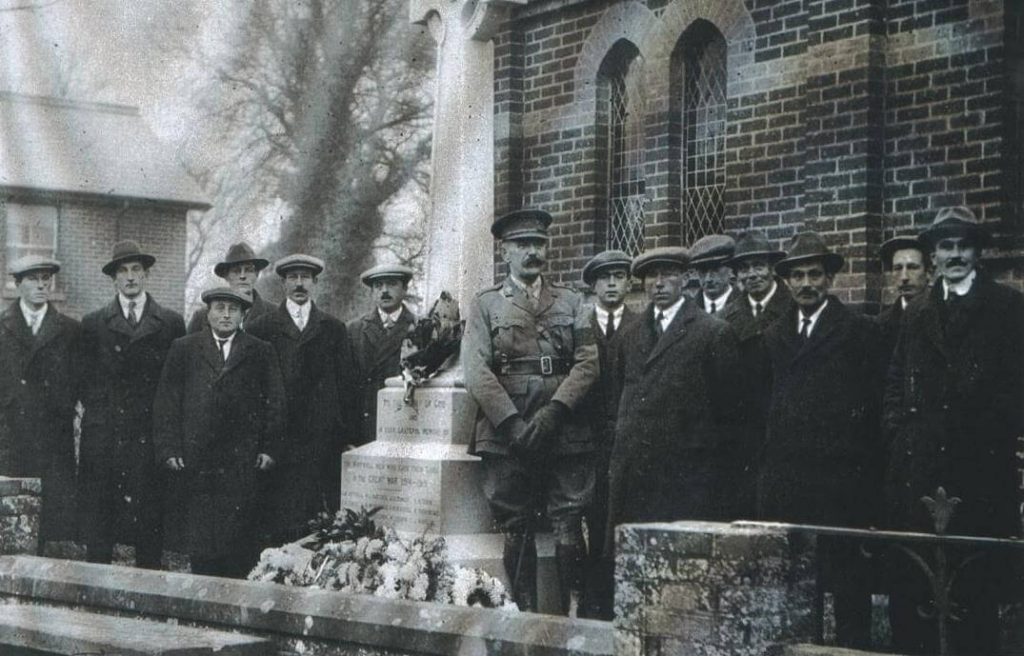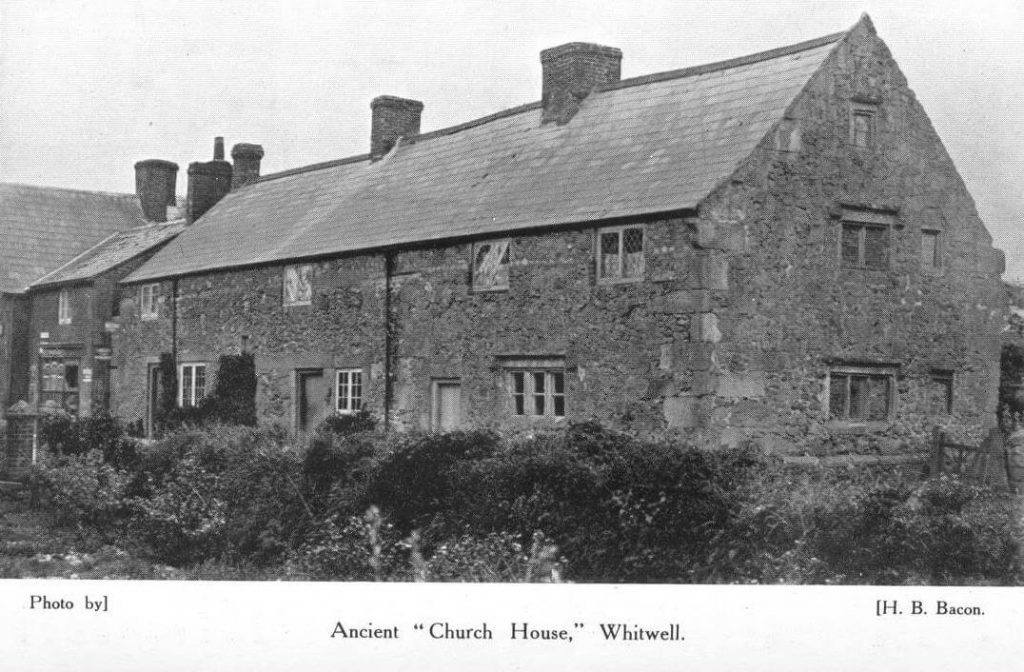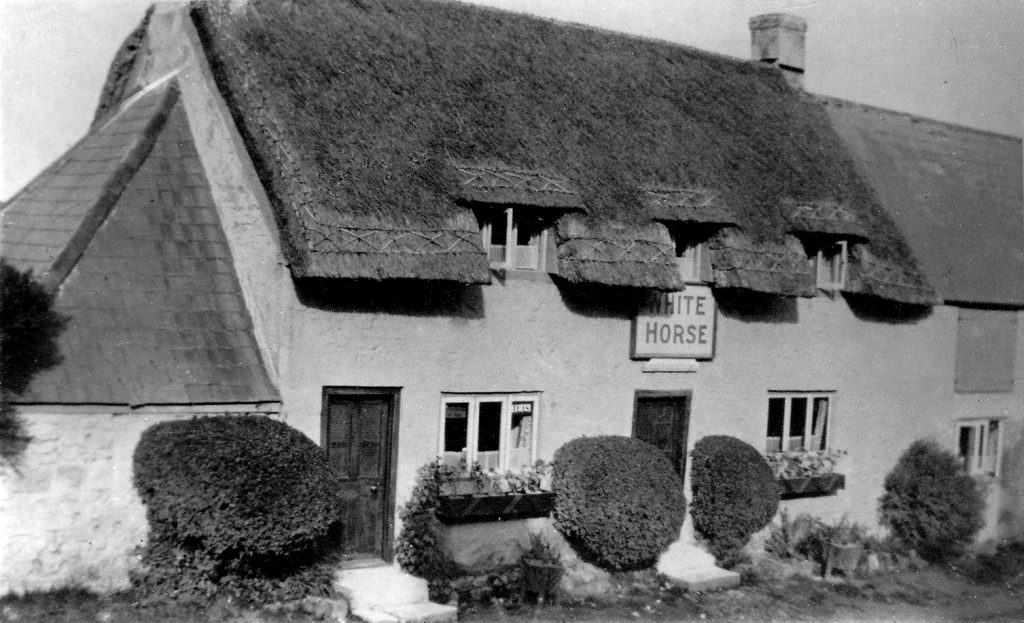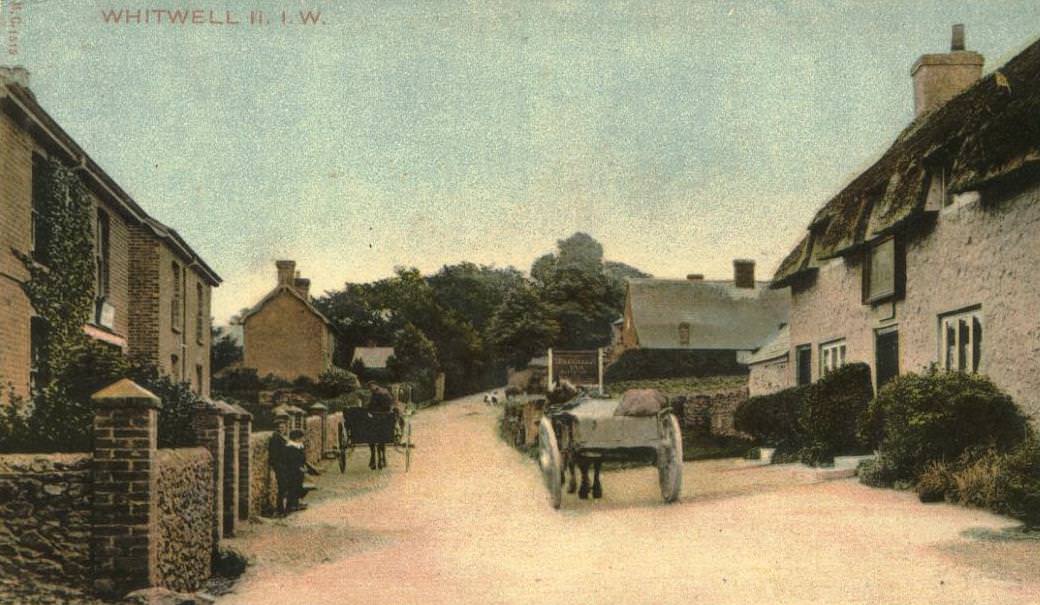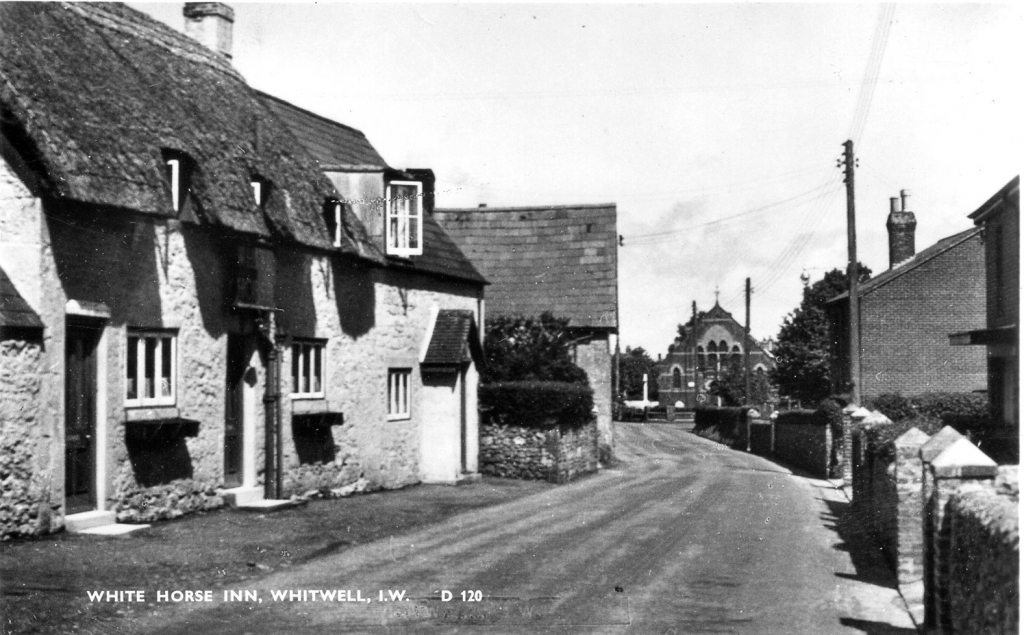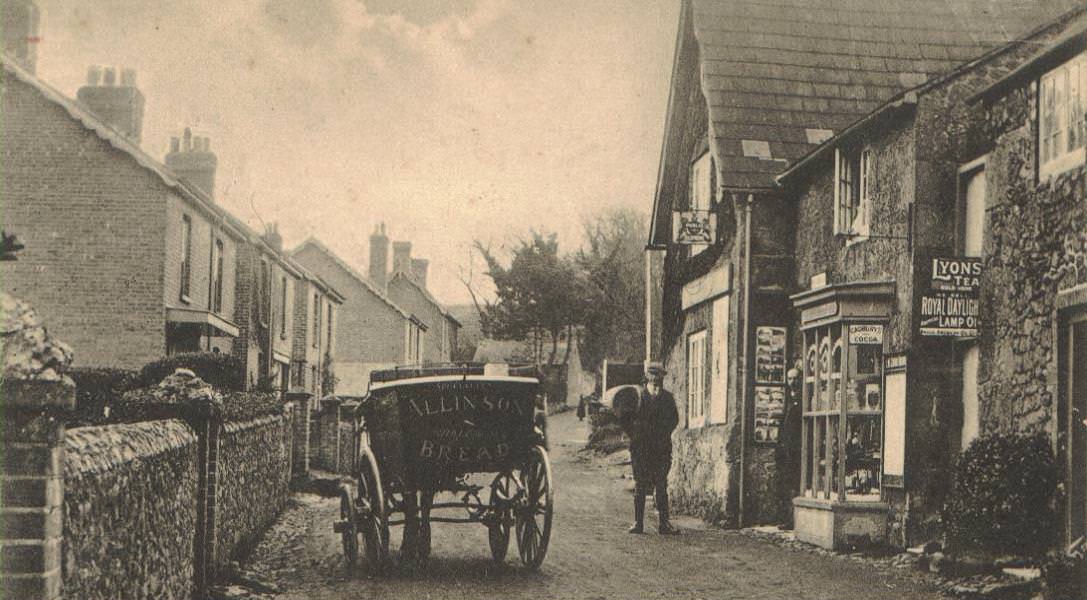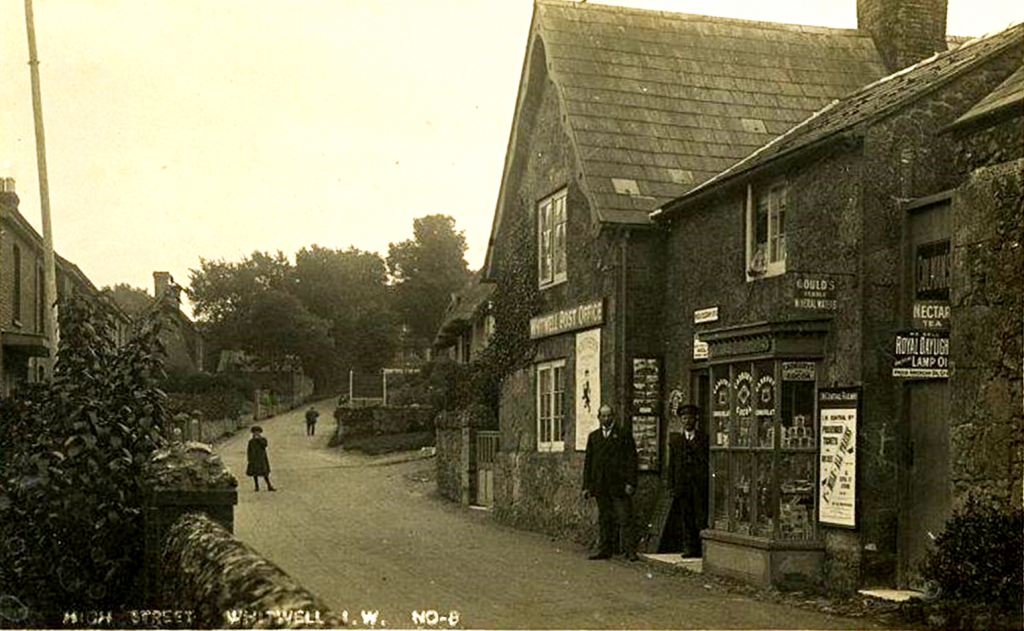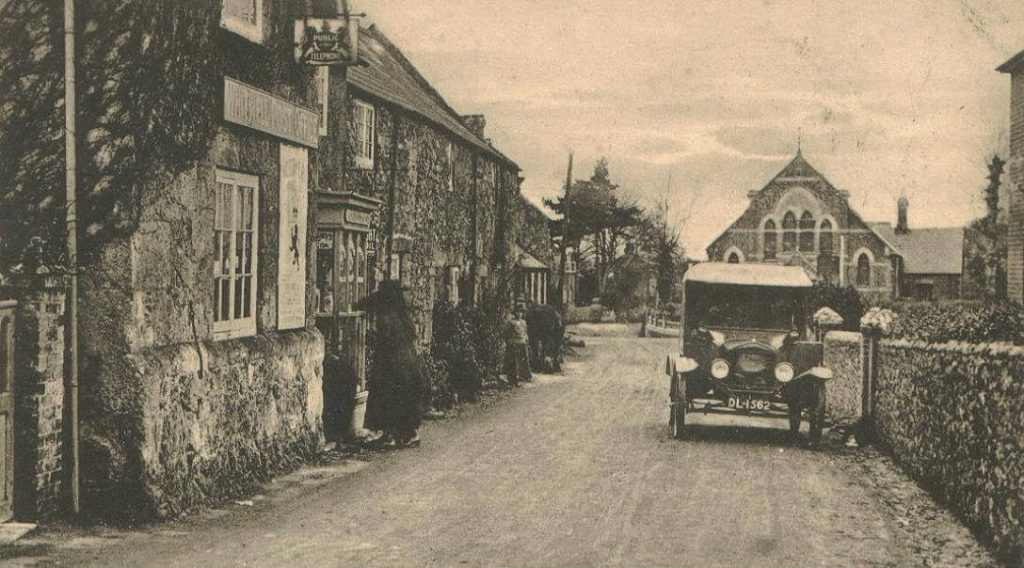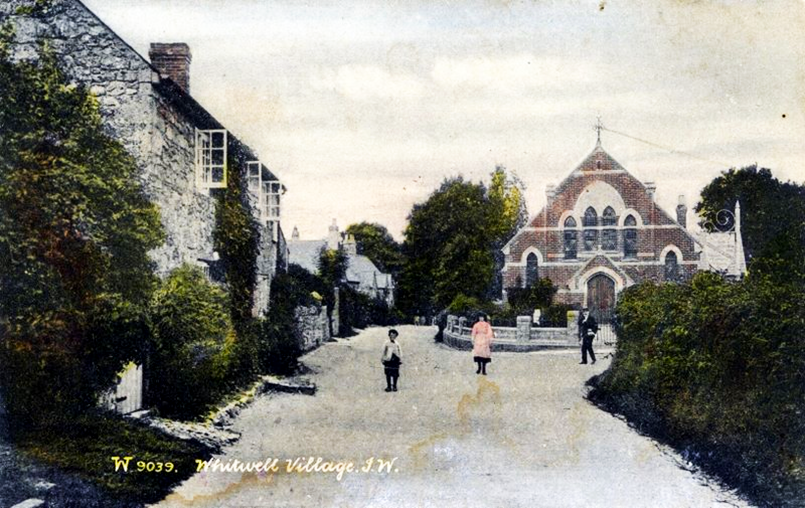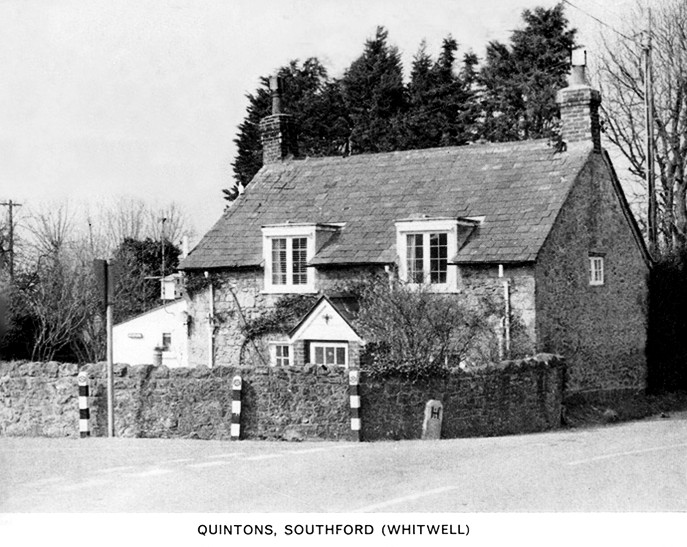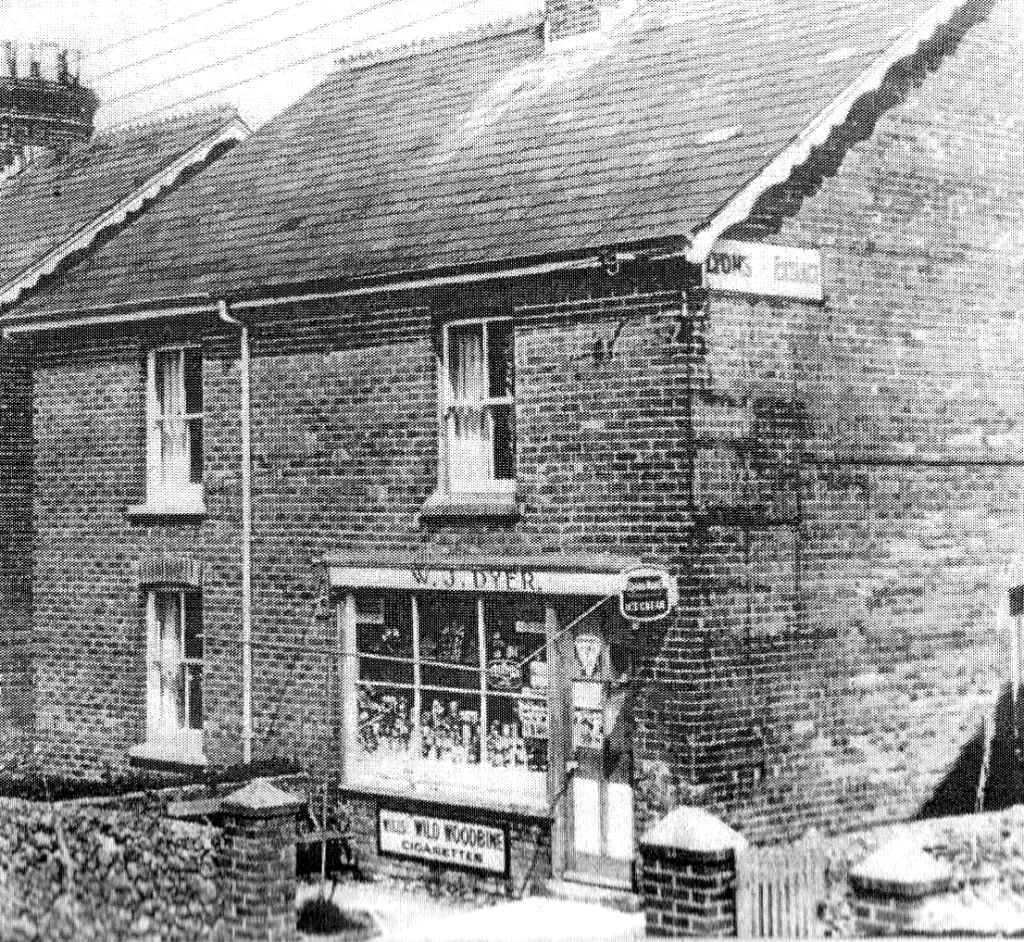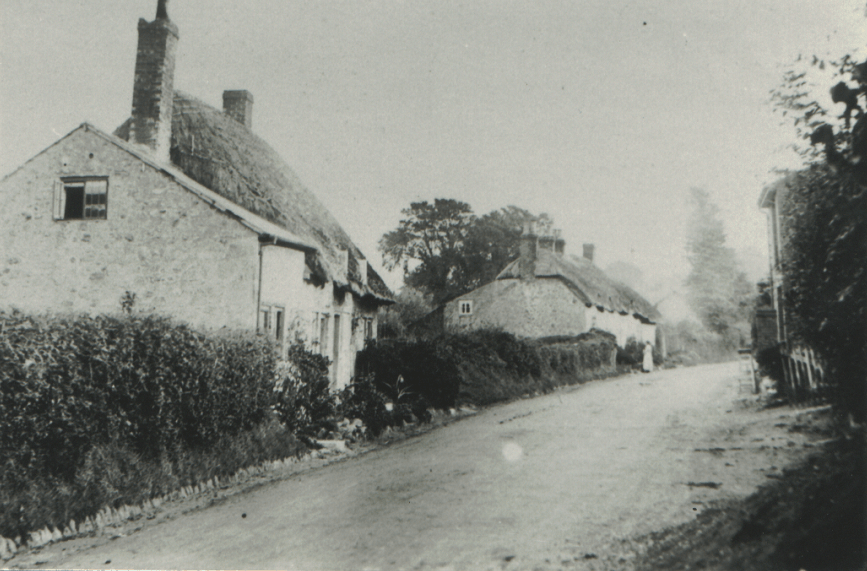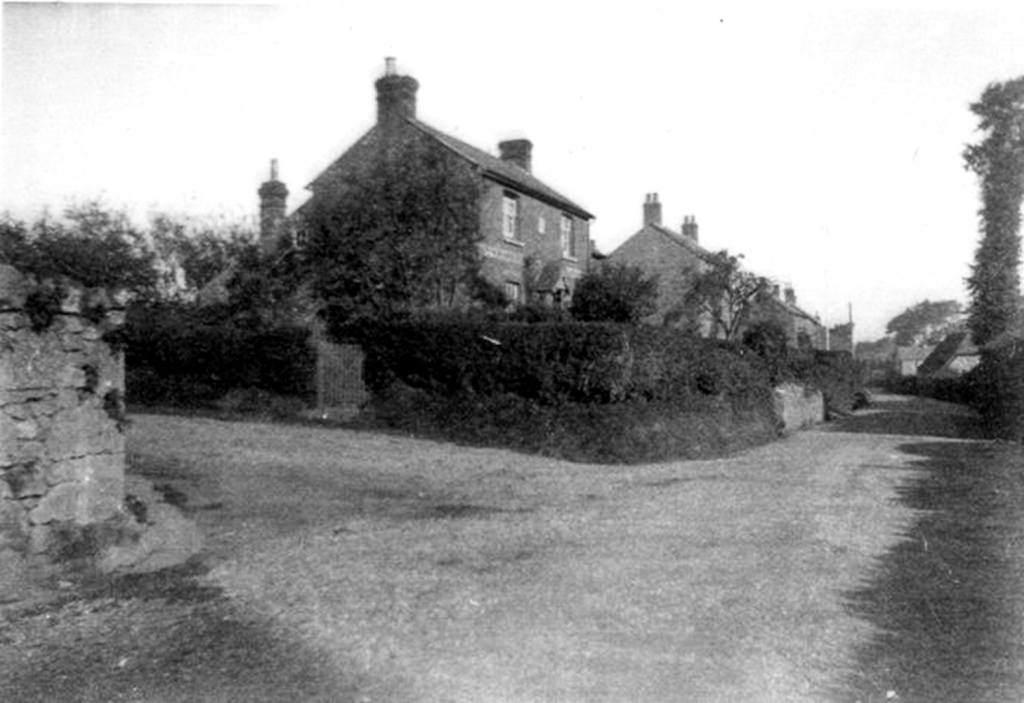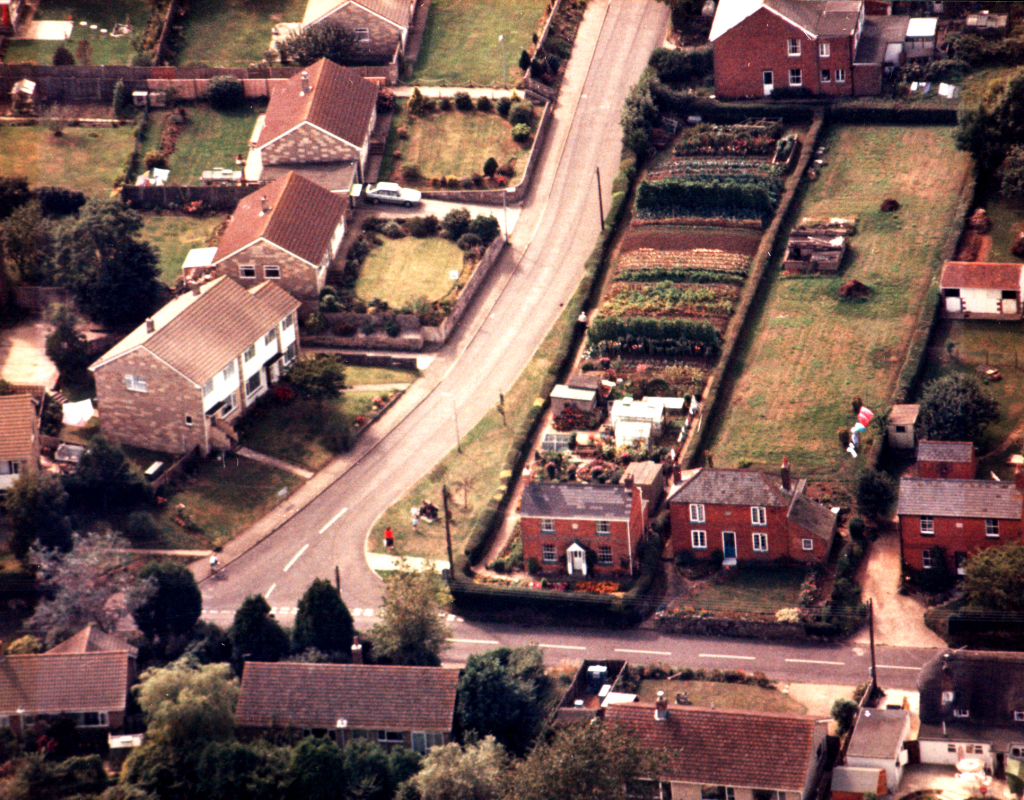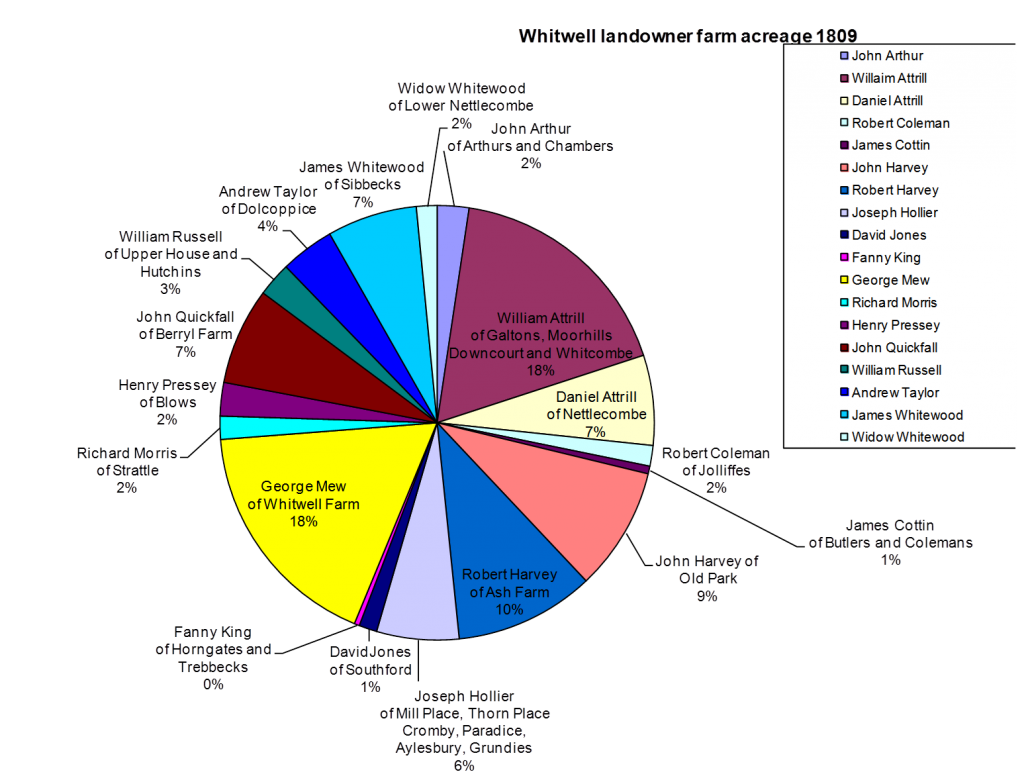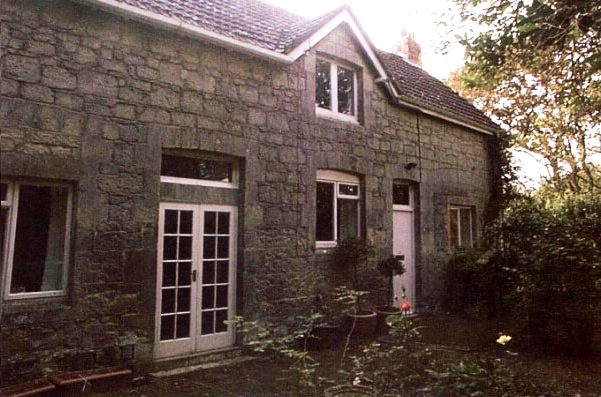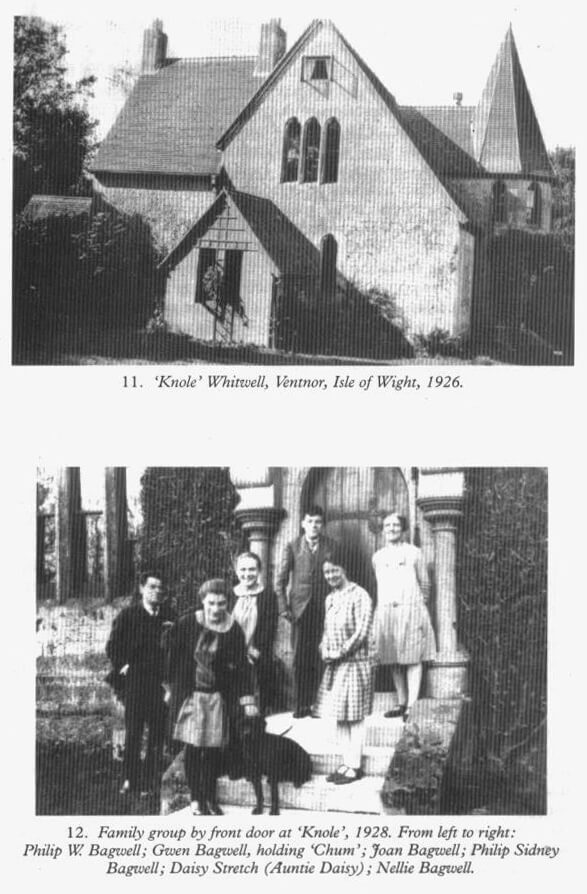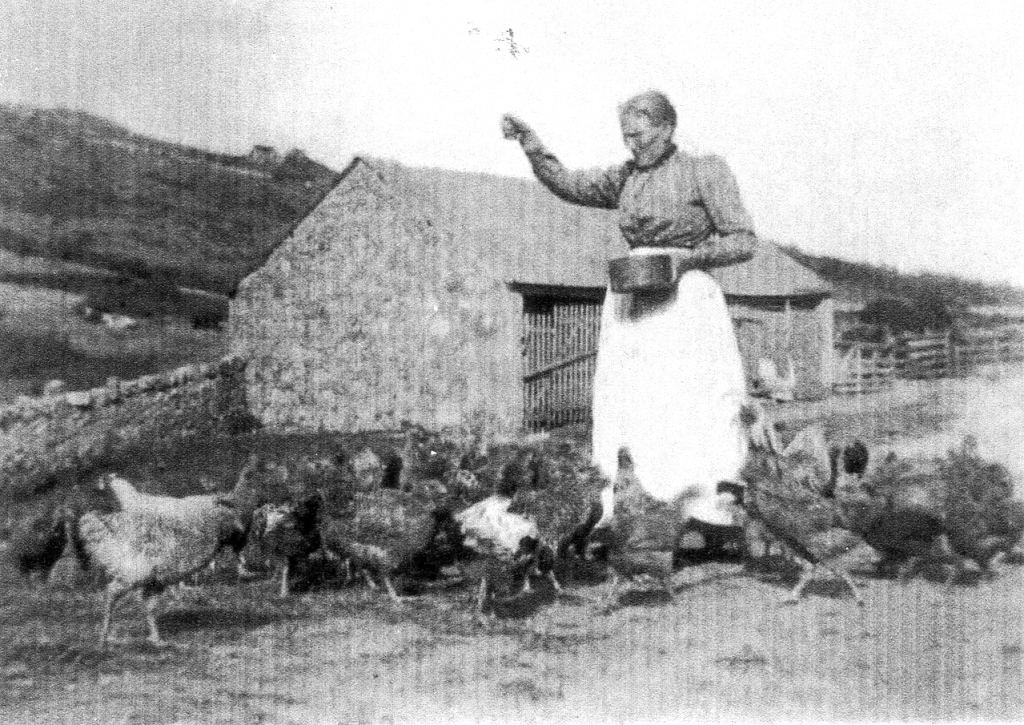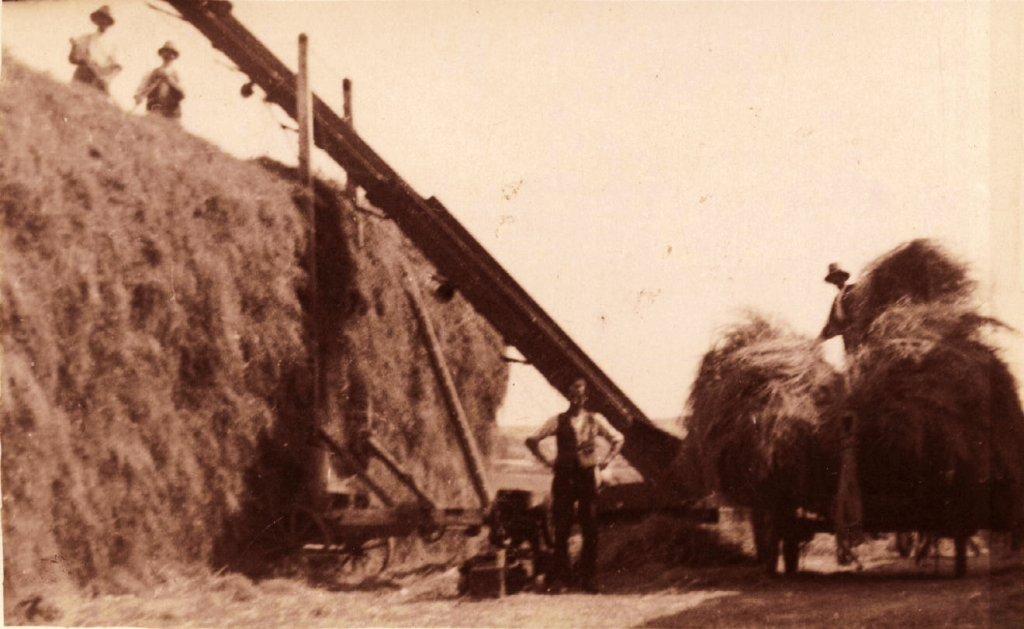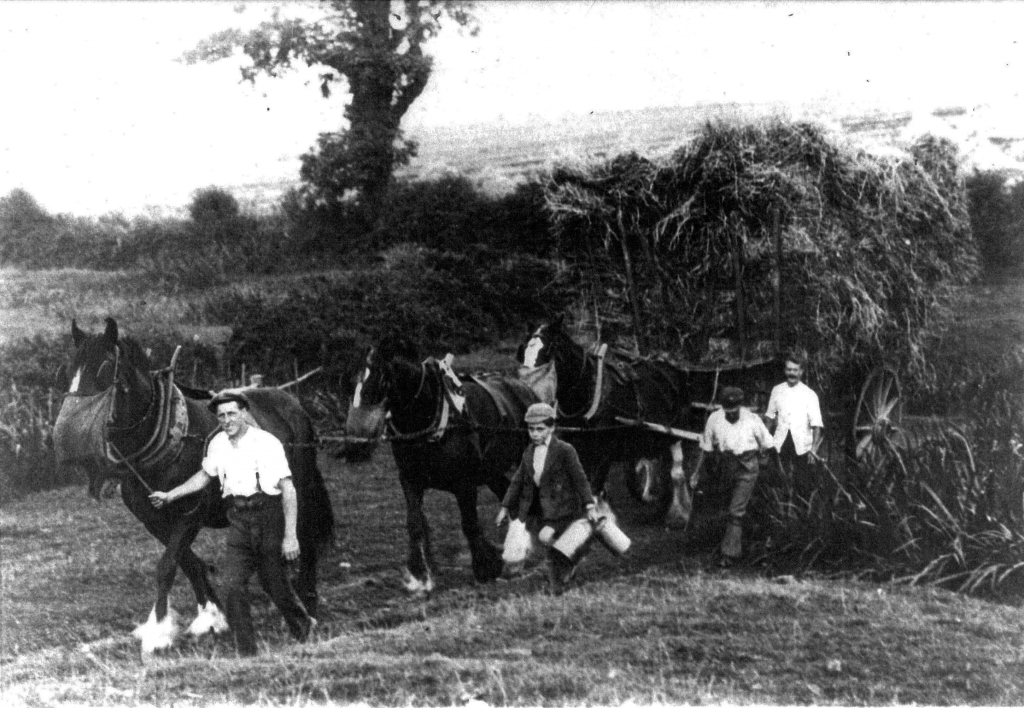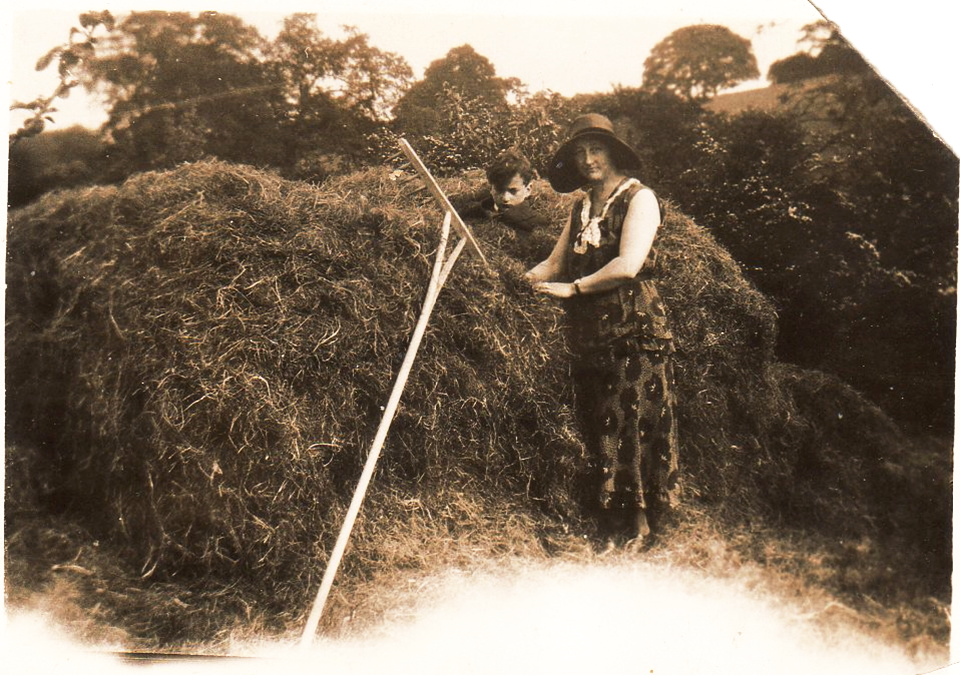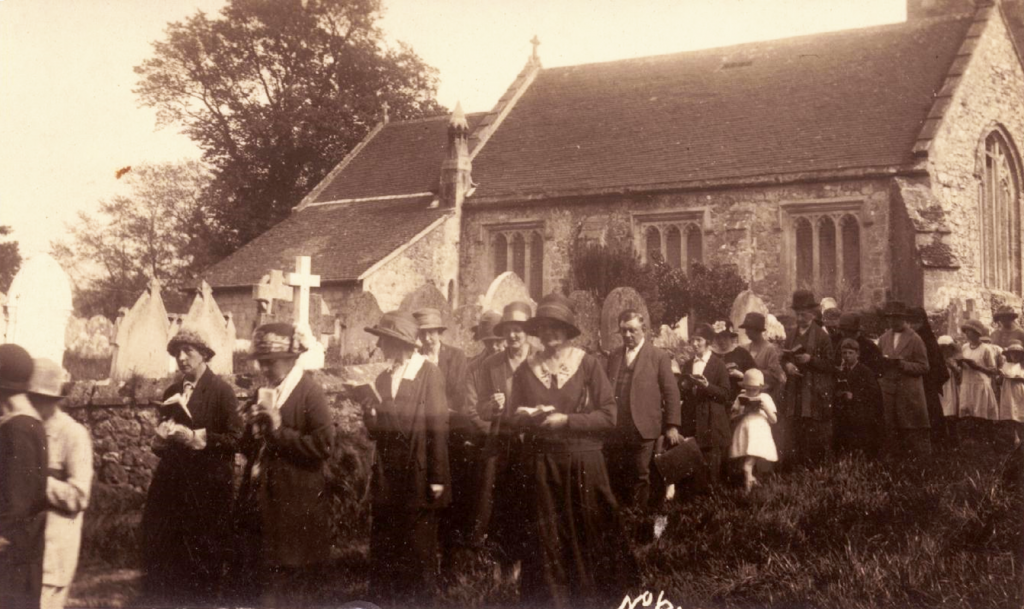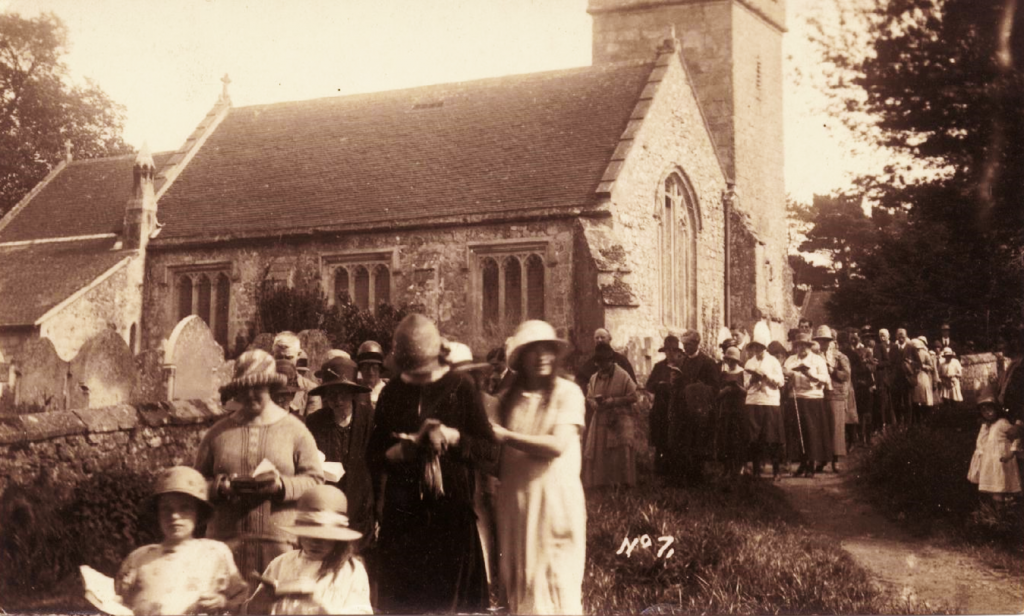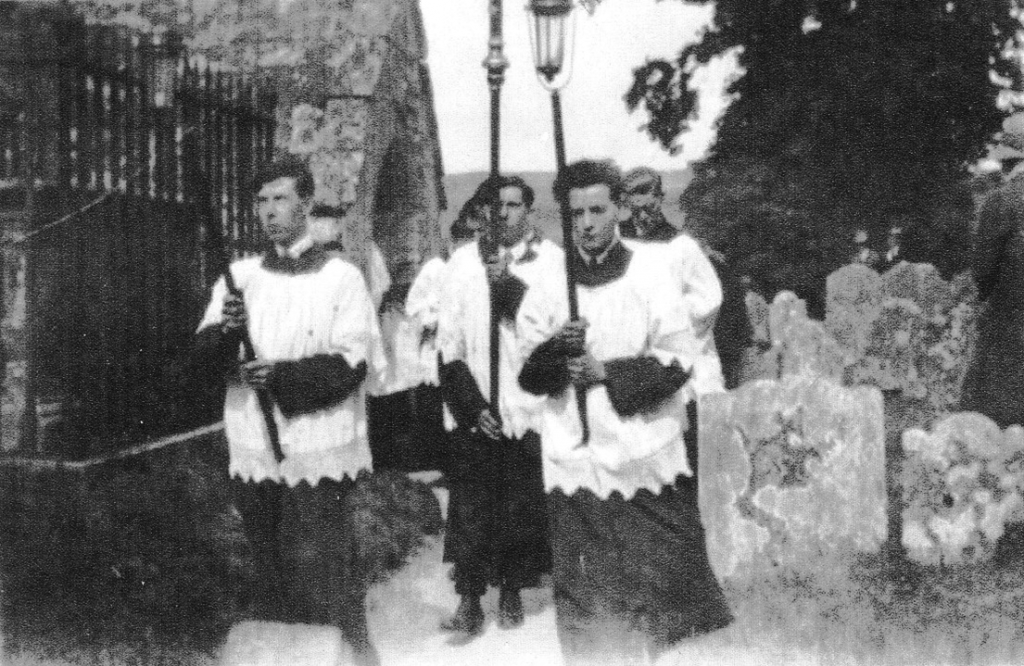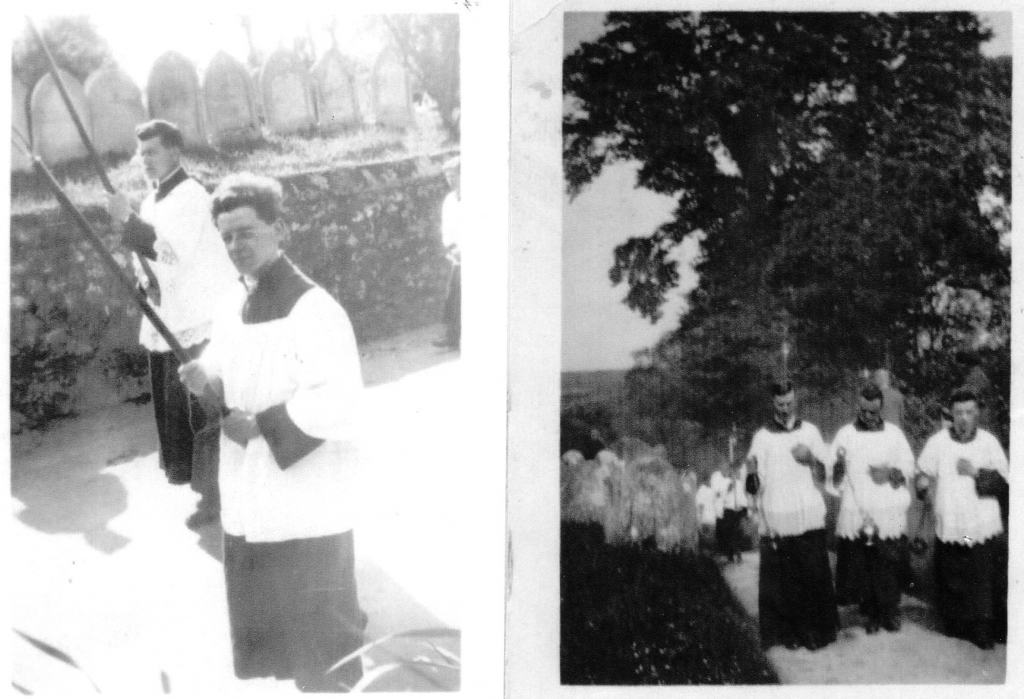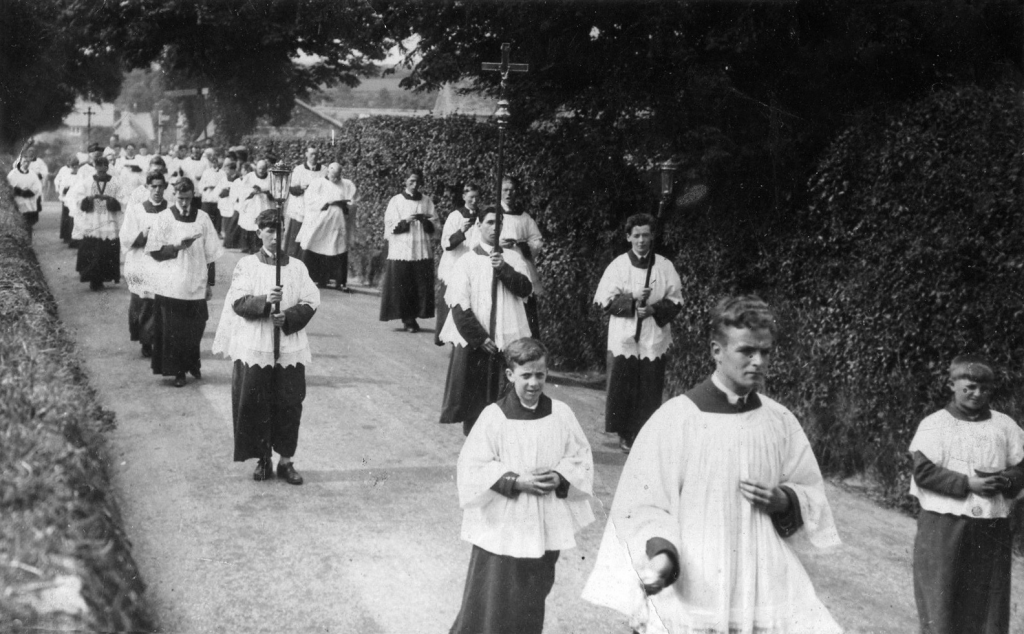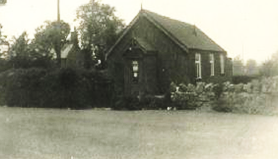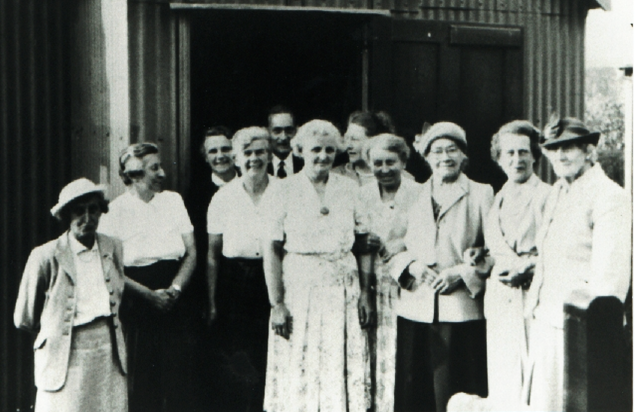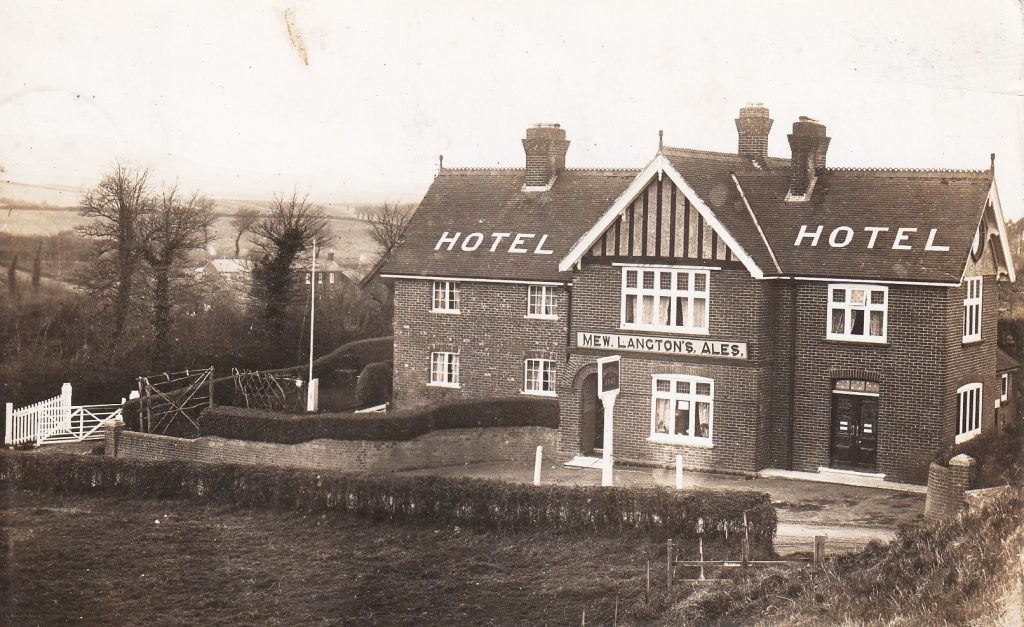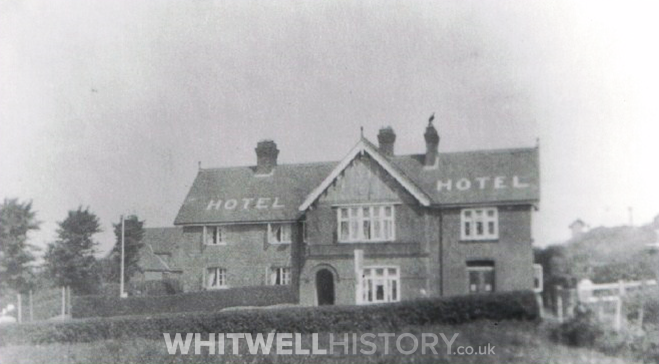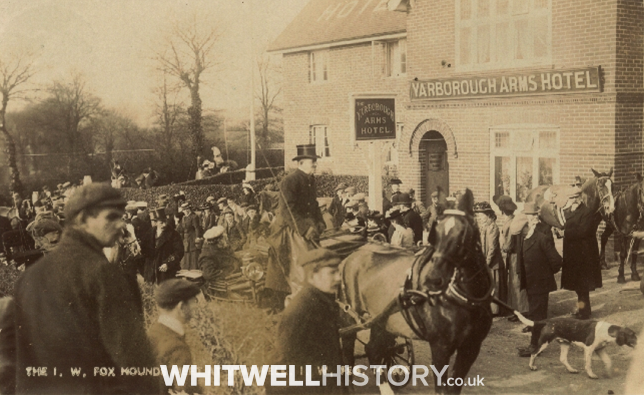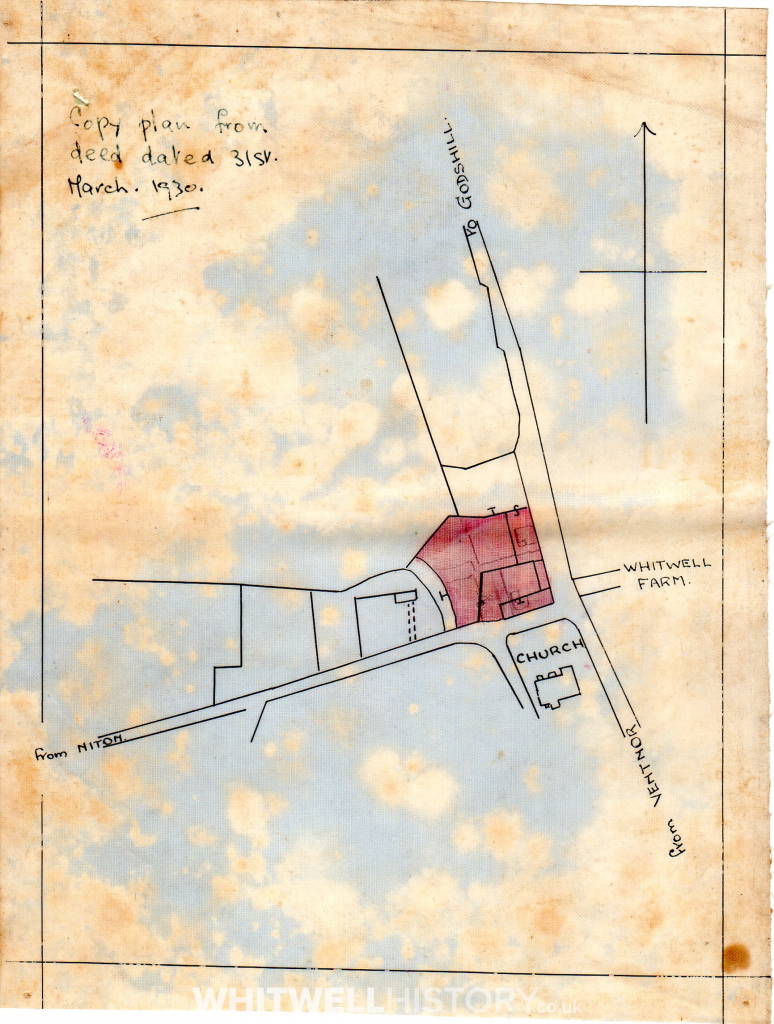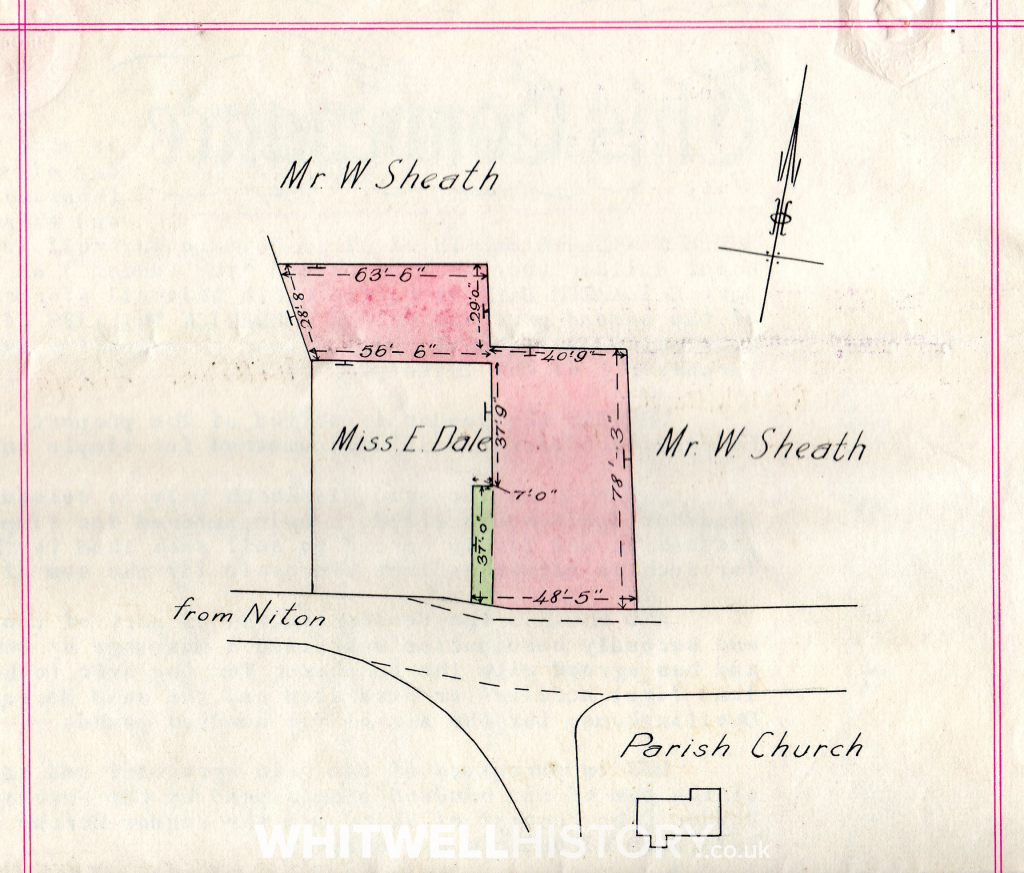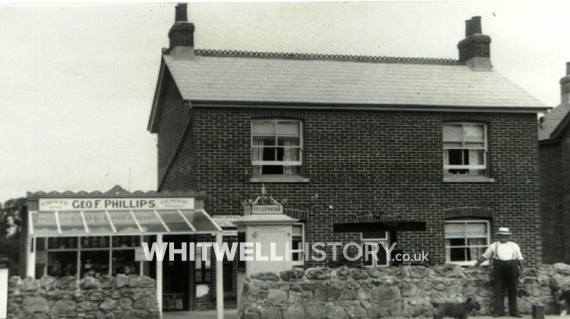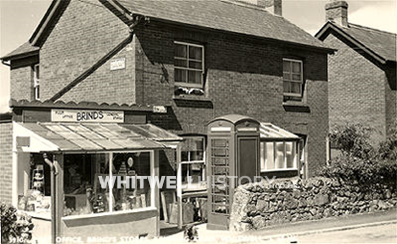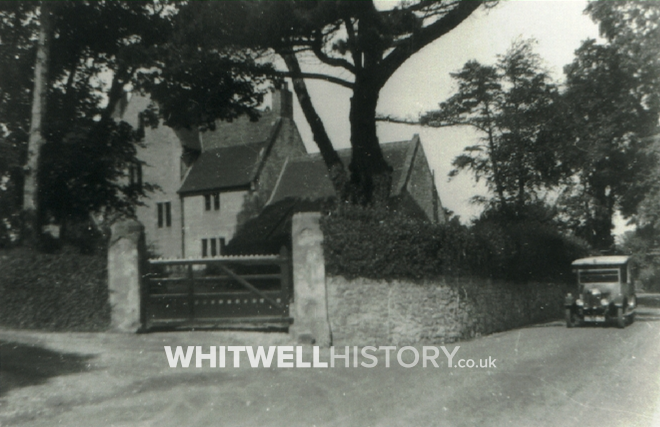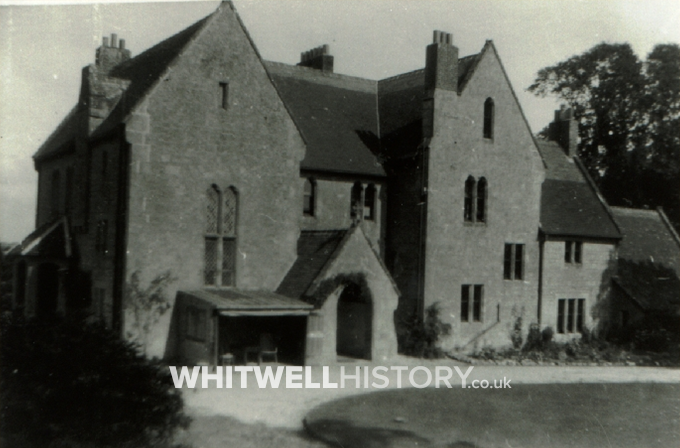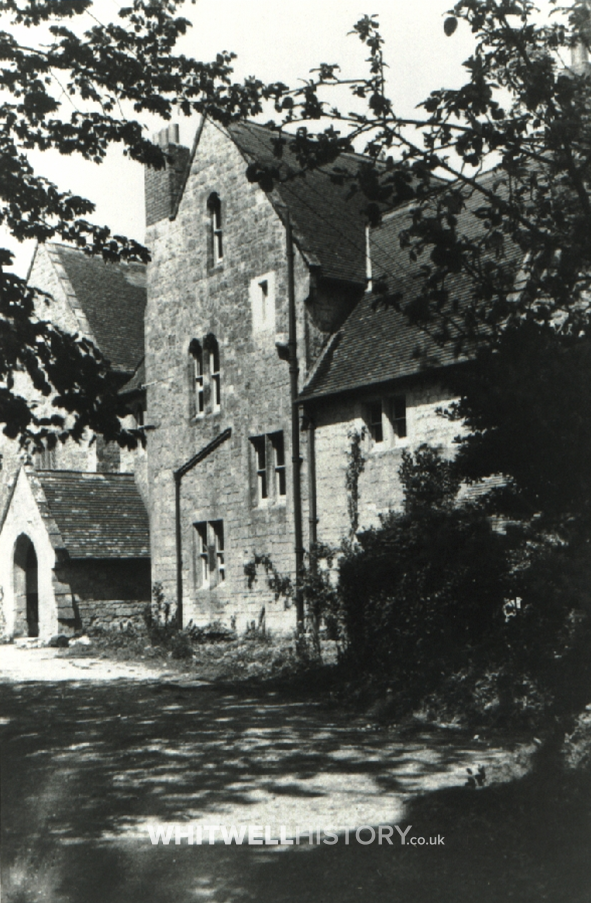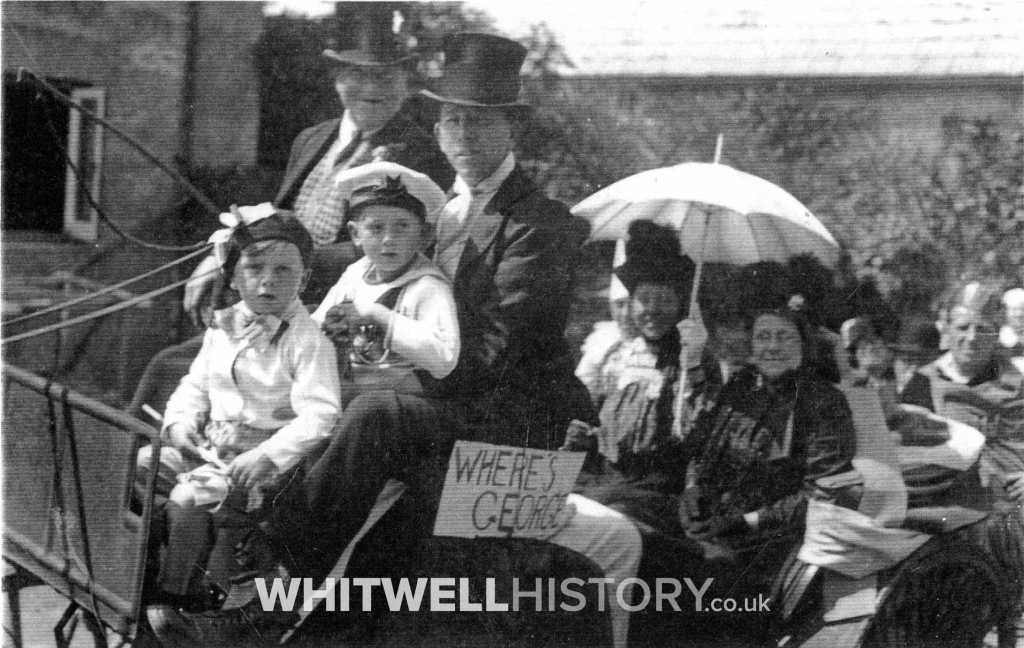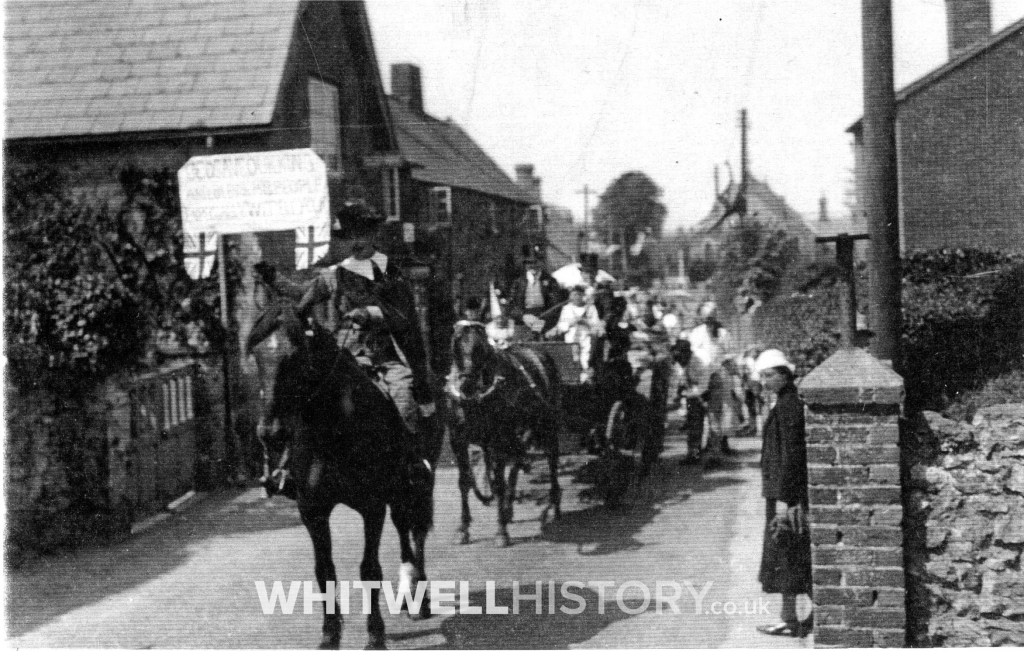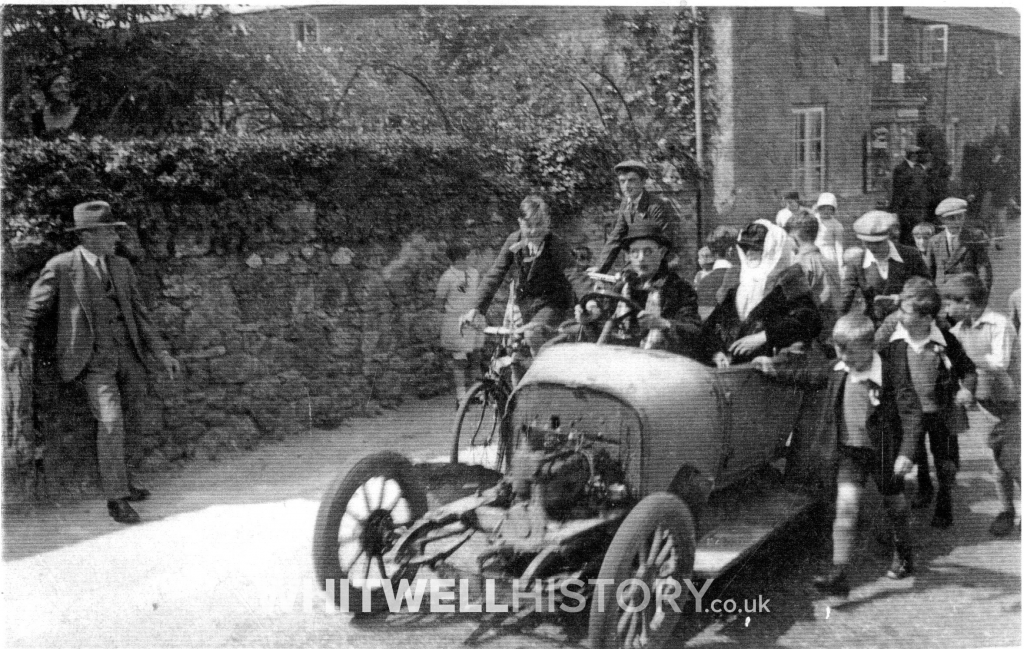Whitwell Origins
The Manor of Whitwell was anciently included in the manor of Gatcombe, which, in the Domesday Book, is said to have been possessed by three brothers in the time of Edward the Confessor. Each of these brothers had his hall or capital messuage. The first mention of Whitwell is found in the role of tenants, under the Countess Isabella Fortibus, where de Estur, Lord of Gatcombe, is said to hold the manor of Whitwell in demesne.
Whitwell, together with Gatcombe, came to the Lisle family by the marriage of Walter Lisle with Maud, the daughter and heiress of de Estur, who built and endowed the chapel of St. Rhadegund. It next came to John Bramshot, who married Lisle’s daughter, and left the property to two daughters, Elizabeth who married John Dudley, who was attained for high treason by Henry VIII, and his son John Dudley, made Duke of Northumberland, who was beheaded by Queen Mary, and Margaret, who married John Pakenham, whose son Edmund left two daughters, one married Richard Earnley, and the other married Sir Geoffrey Pole, the brother of Cardinal Pole.
From a decree of John Dowman, Vicar-general and Chancellor of Richard Fox, Bishop of Winchester, it appears that what is now called the church, consisted of two chapels, The Chapel of St. Mary and the Chapel of St. Rhadegund, the former supported by the parishioners of Godshill and the latter by the Vicar of Gatcombe.
Whitwell later came, by purchase, into the hands of the Worsley family until it was split up by the sales of 1809 and 1853
The soil is strong loam, with chalk subsoil and good freestone for building. The chief crops were wheat, barley and oats. The area is 1907 acres, a rateable value of £4715, the population in 1881 was 706.
The map below shows the 7 Parishes.
Chale | Niton | Whitwell | St.Lawrence | Godshill | Newchurch | Bonchurch
A Military Map by James Clarke 1812
Sale of part of the Worsley Estate 1809
At the time John Harvey was the tenant at Old Park Farm and remained until he died in 1818.
Worsley Rents 1763
During the latter half of the 18th Century, Mr William Clarke was responsible for collecting the rents for Thomas Worsley.
Whitwell Parish Properties
Land Tax charges of 3 shillings on the pound for the year 1774
Some of the purchasers of the 1809 sale:-
Note that Michael Hoy bought several properties.
A German Princess
A German Princess, Radegund, daughter of Bortaire, King of Thuringia, unwillingly, married at 18 to Clotaire, King of Soissons. She took the veil, A.D.594, at Poitiers. Spent large amounts building a Nunnery and looking after lepers. She lived nearly 70 years and is buried near the great monastery of the Holy Cross at Poitiers of which she had been Superior for 30 years.
Whitwell Church – St Mary & St Rhadegund
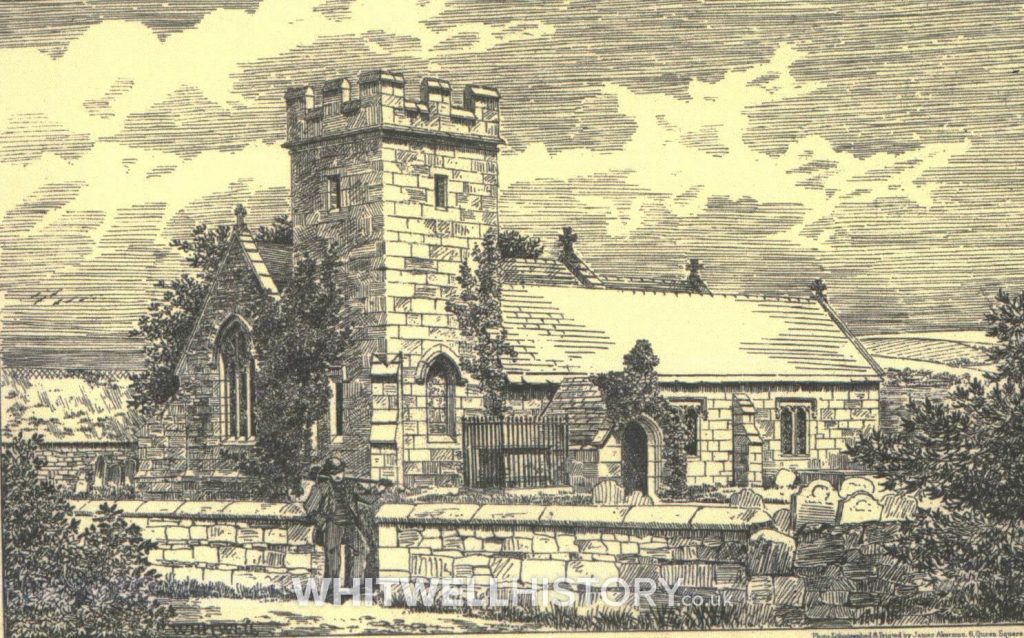 Drawing by Percy Stone from ” The Architectural Antiquities of the Isle of Wight” 1891
Drawing by Percy Stone from ” The Architectural Antiquities of the Isle of Wight” 1891
The Church originally consisted of two separate chapels. The earlier foundation was the Manorial Chapel, on the north side, built for the convenience of tenants of the Manor of Whitwell, whilst the south chapel was added in the reign of Henry III by the Lords of Stenbury, in Godshill, for the outlying tenants of St. Lawrence and Godshill. A 12th Century pier was brought to light during the 1868 restoration.
St. Rhadagund and St. Mary Church, Whitwell. C.1906
Viewed from the Southeast
The Rood Screen
This was erected by Rev. J. C. Orr (Vicar 1906-1931) and Friends, as a Memorial to those who fell in the 1914-18 War.
The Screen was made with timber from H.M.S. Thunderer. She had been refitted in December 1914 and she was present, with her squadron, at the Battle of Jutland on 31 May 1916, firing thirty-seven 13.5″ shells. She suffered no damage. However, in November 1926, Thunderer was sold for scrap.
Architectural Detail
Drawing by Percy Stone
The Interior
Before the Rood Screen was put in place, showing St. Rhadagund’s on the left and St. Mary’s on the right.
Medieval Painting
During the restoration of 1868, a wall painting was discovered under numerous coatings of whitewash. On removing the last coat, which was transparent, the colours appeared as bright as the day they were applied. Unfortunately, its discovery was its downfall, as on being exposed to air it literally crumbled away. Luckily, a Mr. Barraud, who was working on the glasswork at the time, took a tracing, from which the following drawing was made by Mr. Percy Stone in 1891. Whitwell Parish was separated from Niton on the 3rd August 1867, when the Rev. Hayton was Rector of Niton, Vicar of Whitwell and Vicar of Godshill. Whitwell Church was reopened after complete restoration on the 8th of Sept 1868. The sermon was preached by Dr. Jenner, Bishop of Dunedin, New Zealand.
Discovery During Restoration
During the restoration work of 1868, a carving of wooden hands was found in the roof.
Modern Artistry
One of the original wells is situated in Well Lane, just east of the Church, and a blessing takes place each year with members of the Church making a tableau out of flowers
£199,000 Roof Repairs 2019
The parish church received funding from a National Lottery grant to make essential repairs to the Church roof.
The following is an extract from an article in the Isle of Wight County Press.
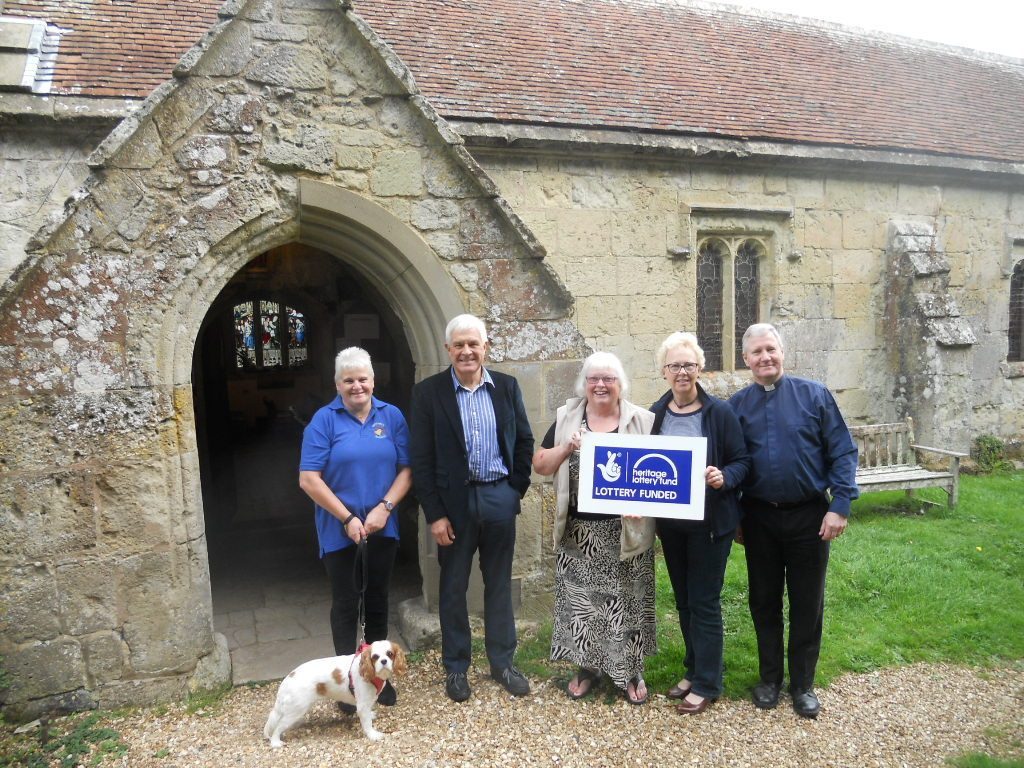
Photo: Isle of Wight County Press.
Left-Right: Sandy Thornton with Lily, Tim Sage, church architect, Maggie Smee and Ann Harris, churchwardens, and Rev Dr Nigel Porter.
Whitwell’s Parish Church, St Mary and St Rhadegund, has received a National Lottery grant of £199,000 for the Fabric Repair Heritage Project.
Thanks to money raised by the National Lottery, the Project aims to repair the roof, stonework and stained glass of the medieval Parish Church.
Supported through the Heritage Lottery Fund (HLF), the Project also intends to carry out essential conservation work, research and revise the Guidebook, and hold events to encourage people to visit and learn about the church.
An educational programme is also planned and volunteers will be given training so that they can help to guide visitors to our many heritage artefacts.
The church is a focal point in the community, used as a satellite Post Office two days a week as well as weekly worship.
Rector of Whitwell, Rev Dr Nigel Porter, said: “This amazing award from the National Lottery helps to safeguard and improve an important historic place of worship which is the centre and focal point of our village. It will continue to be a place where people meet and worship for decades to come.”
Rt Rev Christopher Foster, Bishop of Portsmouth, said the grant was wonderful news.
He added: “Whitwell Church is central to the life of the village and community as a place of worship and so much more. At the heart of village life and as a sacred space, it is wonderful to know that it will be secure for the future.”
Michelle Roffe, Head of HLF South East said: “We have been delighted to support St Mary & St Rhadegund to carry out urgent repairs and engage new audiences with this much-loved local landmark. Thank you to the National Lottery players who have made it possible.”
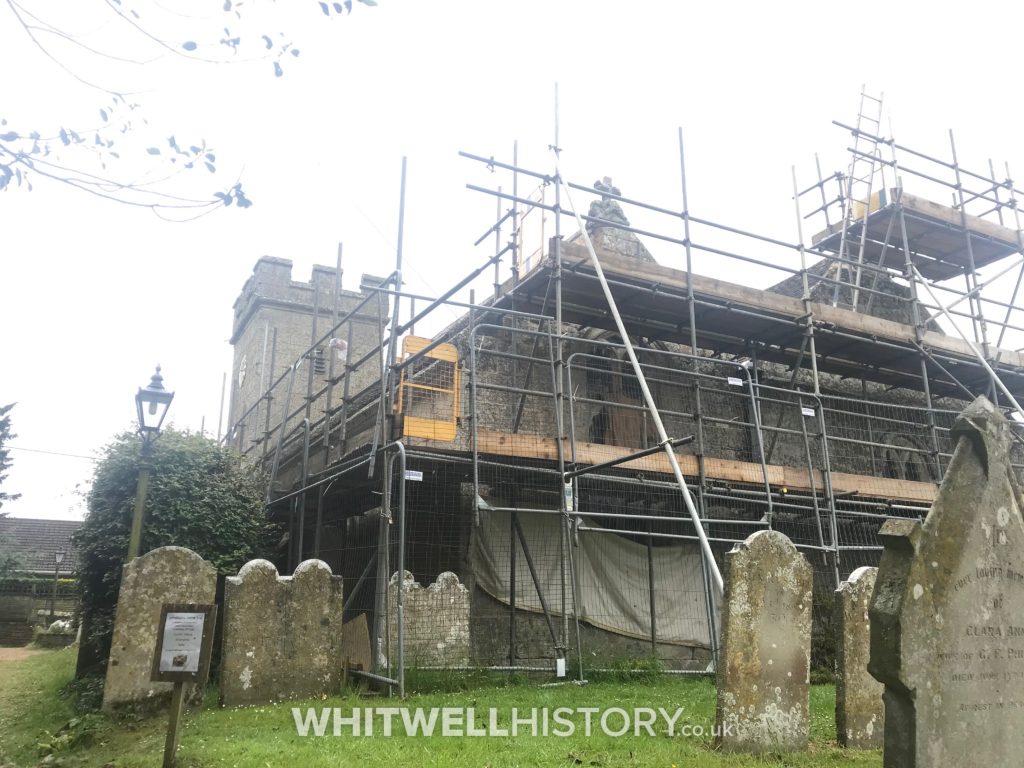
Whitwell Church Roof Repairs 2019
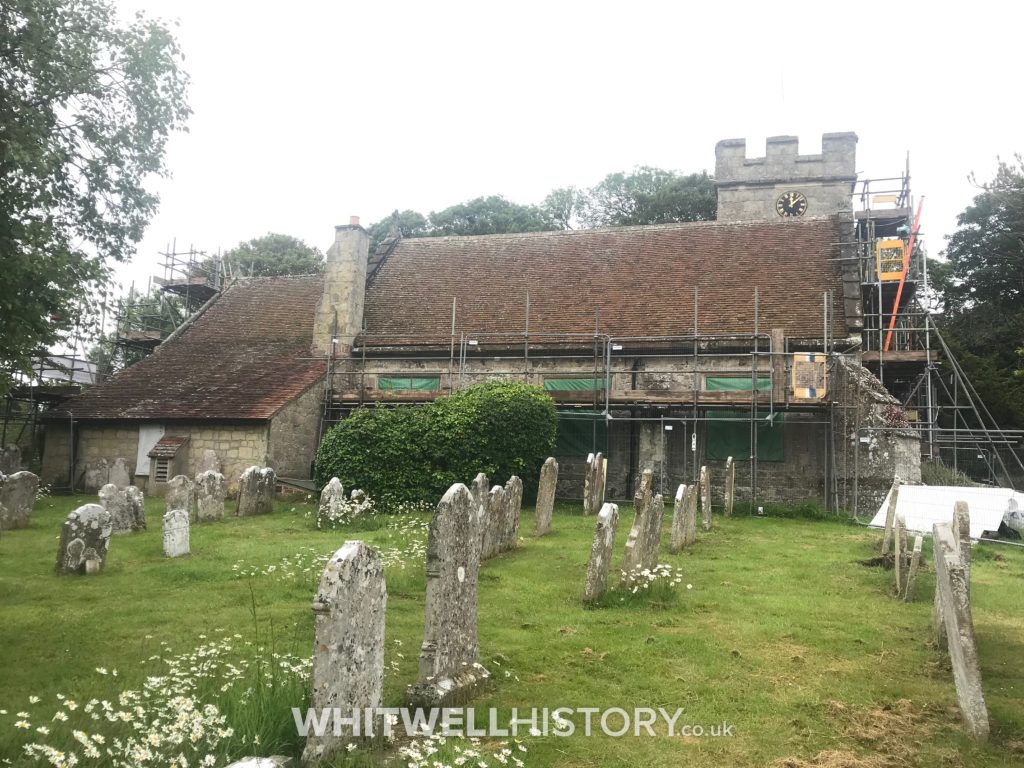
Whitwell Church Roof Repairs 2019
Out and About
Tithe Barn
This type of barn was used in much of northern Europe in the middle ages for storing the tithes.
A tithe was a tenth of a farm’s annual produce which had to be given to the church and clergy.
Situated at the corner of the High Street and Kemans (Kemming) Road.
The pipes were stacked ready for the new sewerage system.
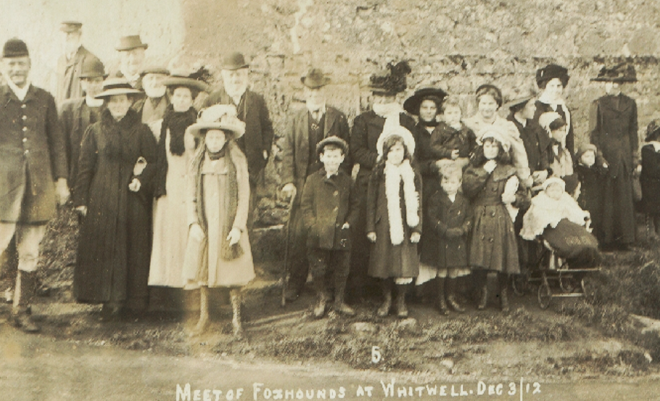 A group of foxhound followers standing in front of the tithe barn
A group of foxhound followers standing in front of the tithe barn
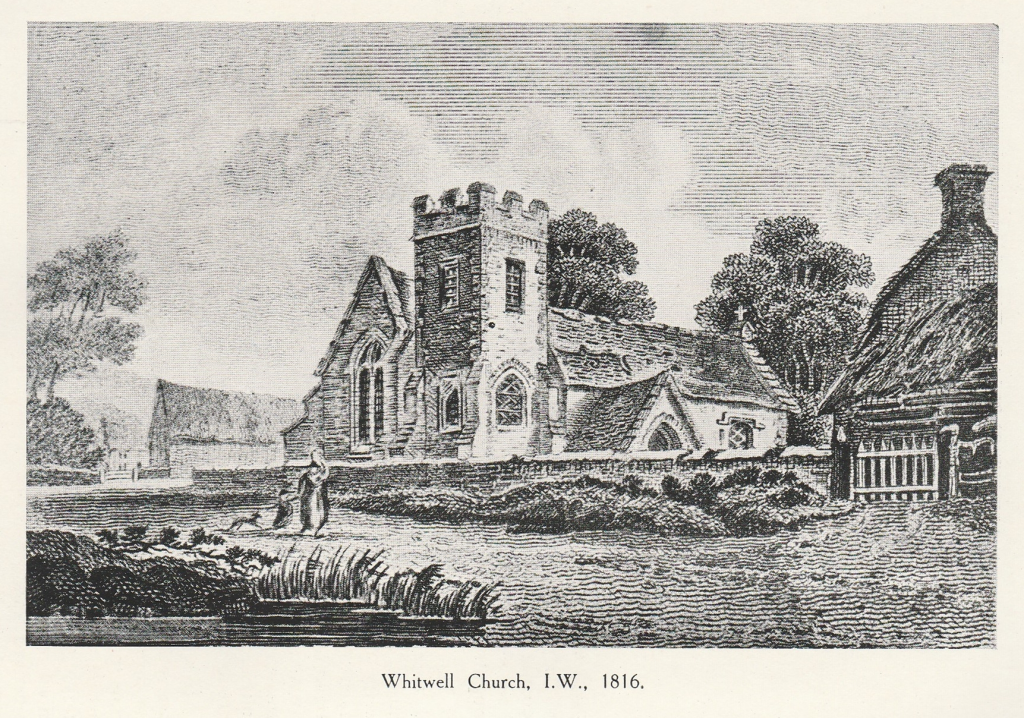 Tithe Barn, Rush Pond, Church, before restoration in 1868, Cottage of Betty Woodnut
Tithe Barn, Rush Pond, Church, before restoration in 1868, Cottage of Betty Woodnut
An early print drawing taken from Whitehead
Showing the tithe barn in Kemming Road, and the cottage to the right of the Church, occupied in 1836 by Betty Woodnut. In the foreground appears to be the village pond, although this is not shown on the Worsley survey of 1774. According to Whitehead, there was a plot of ground, now with cottages standing on it, called “Rush Butt” and formally held by the tenure of supplying rushes for Church purposes. In 1912 this was still in the possession of the Vicar. Until late in the 15th Century church floors had no pews and were covered with rushes. Pews were introduced for the womenfolk, but “once introduced, the churchwardens soon found out the advantages of being able to derive income from the seat or pew rents”
Benediction of the New Bells
A newspaper cutting of the installation of the new bells at Whitwell Parish Church.
Restoration of the Clock
Restoration of the clock was carried out in 2005.
The restored clock face in 2005
The ‘New Vicarage’
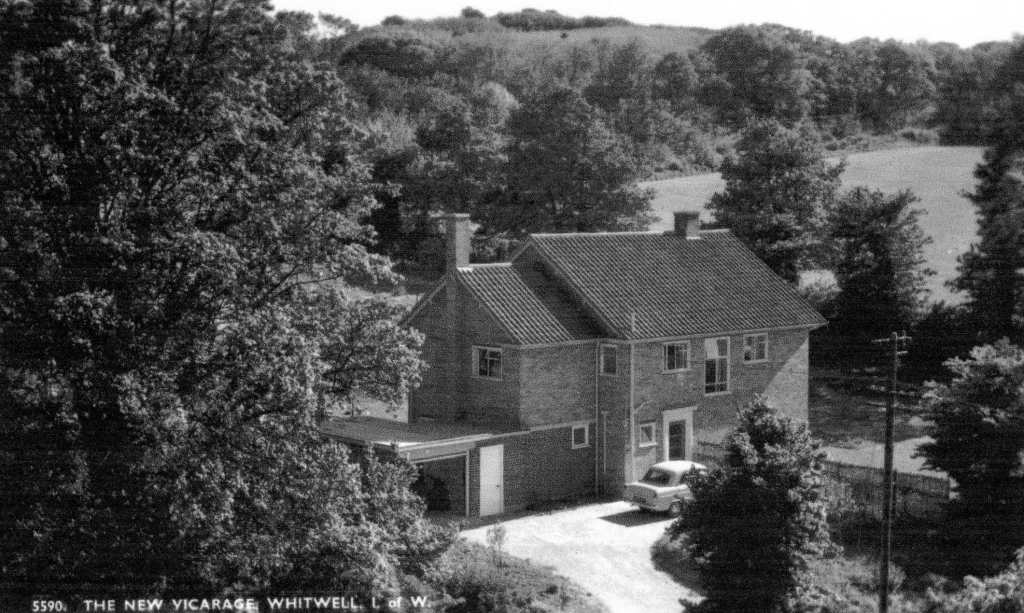 View of the “New Vicarage” taken from the church tower.
View of the “New Vicarage” taken from the church tower.
An Ancient Well
Water for washing and drinking purposes had to be drawn from nearby wells. This shows one of four cottages along Southford Lane that shared one well with Mrs. Newington, the daughter of Jacob Saunders. Here, she has just pulled up two pails-full using the 20 feet-long rope.
Frederick Patsy Orchard, 1907-1989, lived at Jolliffe’s Farm in Nettlecombe. In his memoirs, he tells us that the farm had a well just inside the gate from which they pumped water for the house and into tanks in the yard for the cattle. Like most houses, the toilet was outside, with the bucket emptied every few days (known as the bucket and chuck it method). It was too far for him to go home from school for lunch, so sandwiches were provided, and a drink of water was taken from the ‘Red Lion’ outside the school. (See picture of the school)
Village Water
A German industrial chemist, Theodor Julius William Spindler, decided to come to the Island for the benefit of his health, in 1873 and purchased an estate of 144 acres known as Old Park, in the Undercliff, in 1882.
Mr. William Spindler (see below) was a most generous subscriber to a fund required to lay on a supply of pure drinking water for the inhabitants, who had suffered in health through drinking contaminated water from the local wells and springs. Mr. Granville Ward, a local land-owner, made a free gift of land for the reservoir and granted also the water from springs on his estate at Bierley. Theodor Saunders carried out the work, and the cost, of over £600, was half paid by Spindler, half by the villagers.
The scheme covered the whole village including the nearby hamlet of Nettlecombe, with about sixteen cast-iron outlets known as ‘lions’ or ‘red boys’.
I suppose that ‘going down to the Red Lion’ for a drink was not quite the same?
They are of cast iron, with a lion’s head, a platform for the bucket, and a handle at the side that turned on the water, which flowed from the lion’s mouth. There was also a metal cup on a chain.
Extracts from the Parish Minute Book No. 11
Transcribed by Janette Gregson May June 2007
The minute book is handwritten in a hardback, lined book, kept in the reception area of Southern Water’s Offices in Newport, Isle of Wight.
“A Committee Meeting was held at the School Room, Whitwell, on Tuesday 2 November 1886, at 6.30 p.m.
Members present:- Rev.d Robert G. Oliver, Theodor R. Saunders, William Spindler
Albert Attrill, D. Morgan, W.H.C.Clarke, Colonel Currie
A. Hunt, S. Pain, W. Colenut, A. Hunt
S.Beeden (Hon. Sec.)
Mr. T.R.Saunders read [out] the Agreement
Proposed by Mr. W.H.C.Clarke, and seconded by Colonel Currie, that the Agreement be forwarded to the Rural Sanitary Authority to be signed and sealed on Thursday next 4 November 1886.”
Opening of the Jubilee Whitwell Water Works
The Opening of the Jubilee Whitwell Water Works was celebrated on the 13th July 1887, amidst great rejoicing.
The members of the Parochial Committee present were:-The Revd. R B Oliver, William Spindler Esq., W H C Clark Esq.
Theodor Saunders (Engineer), J Harvey (Contractor)
Daniel Morgan, A Hunt, W Colenut, Albert Attrill, F Harvey, T Pain, D Moses
S Beeden (Hon. Sec.)
The Vicar (Revd R B Oliver), presented the following Address to William Spindler, Esq, Old Park –
“We, the undersigned residents in the village of Whitwell, beg to convey our gratitude for the liberality in contributing so largely to the Whitwell Water Works, and our appreciation of his public spirit and efforts to the benefit of his poorer neighbours.
We trust we shall, for many years, retain him as a resident amongst us, and wish him Health, Happiness and Prosperity.”
Signed –
Revd R B Oliver (VicarWilliam Reynolds (Churchwarden)
S Beeden (Churchwarden)
Albert Attrill (Churchwarden)
Daniel Morgan (Overseer)
Edward Beeden (Assistant Overseer)
And quite 170 others
After replying Mr Spindler asked to be allowed to extend the supply of water, at his own expense, so as to include the Schools and Nettlecombe.
A ‘Reaper and Binder’ Machine at Southford Farm, Whitwell
Haymaking
Shoeing a Horse at the Forge
Southford Farm Transport
From One to Fifty…
From one horsepower to fifty horsepower
1933 Village Fete
1933 Village fete in the Old Vicarage garden, outside the library
Photographed are Margaret Russell and Brenda ).
1933 Whitwell Village Fete – younger children gathered on the Vicarage lawn
1933 Whitwell Village Fete – older children gathered on the Vicarage lawn
Whitwell Football Club(?)
1933 Whitwell Football Club?
Coronation Day 1937
Coronation Day Carnival 1937
Darby and Joan
By Legg and A. Plumbley
Coronation Day 1937
Harvey Family of Whitwell
1784
Birth of William Harvey
1823
7 Sep-Birth of Francis Harvey, son of William and Mary
1837
Death of William Harvey
1850
10 May-Francis Harvey married Anna Singleton
1856
1 April – birth of Francis Simeon Harvey in Whitwell
1861 Census
Francis and Anna Harvey, grocers shop, High Street, Whitwell
Francis Simeon Harvey, age 4, grocers shop, High Street, Whitwell
1871 Census
Francis and Anna Harvey, grocers shop, High Street, Whitwell
Walter Harvey, baker, Whitwell High Street
1881 Census
Francis and Anna Harvey, grocer, High Street, Whitwell.
1886
Francis Simeon married Emma Harriett Watts, at St. Georges, Hanover Square, London
1891 Census
Francis Simeon Harvey, age 34, Commercial Traveller, Park Lane, London
1892
Birth of Reginald Philip Francis Harvey, son of Francis Simeon Harvey
1895
Birth of Francis James Harvey, son of Francis Simeon Harvey, in Battersea
1901 Census
Francis Simeon Harvey, age 44, Commercial Traveller, in Battersea
Emma Harriet Harvey (Watts) age 37, dressmaker, born 1864, Exeter, Devon
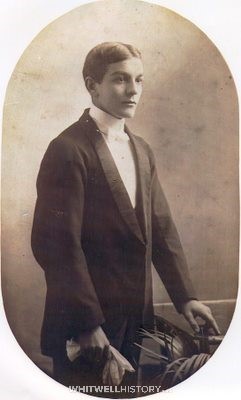
Reginald Harvey, who emigrated to Australia in 1914
Francis James Harvey with his wife Maude – Married 22 June 1918
Francis James Harvey served in the Great War
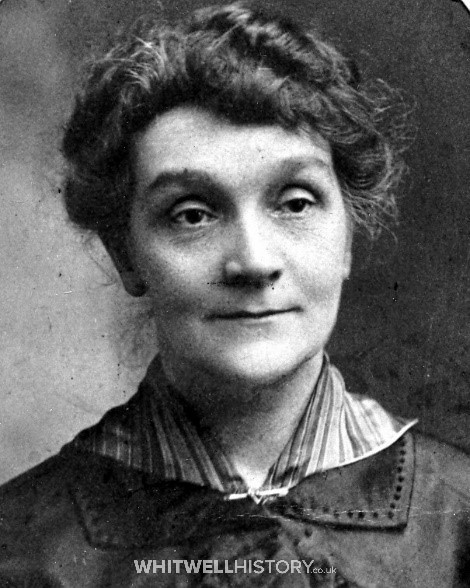
Emma Harvey nee Watts
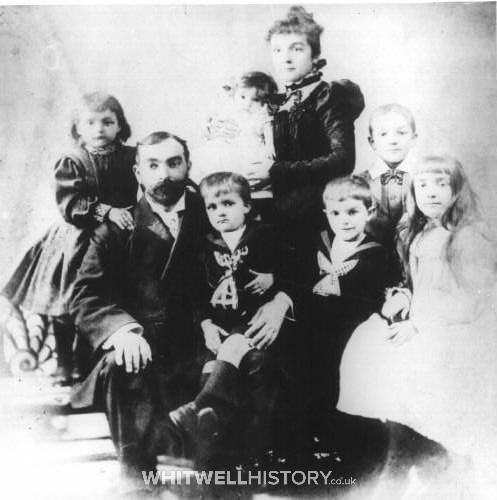
Francis Simeon and Emma, with their 6 children, London
Whitwell Farm
An early drawing of the original Whitwell Farm
Whitwell Farm viewed from Church tower, showing the railway track and Nettlecombe in the background.
Whitwell Farm from above
Description of Whitwell Farm in 1853:-
“A capital new homestead (on the “Scotch plan”), built of stone and slated, comprising yard with a raised paved path around, and cistern, nag stable with loose box, carthorse stable, chaff house, barn and granary, 2 fatting houses, carpenter’s shed, gig house, cart lodge and piggery and nearly 276 acres of land.”
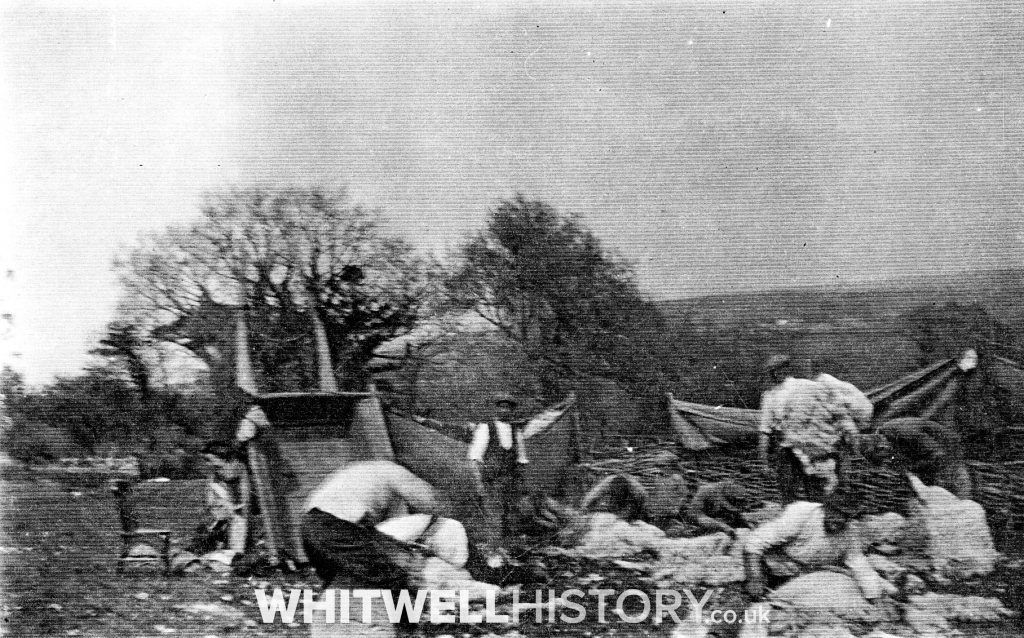 Sheep shearing at Whitwell Farm
Sheep shearing at Whitwell Farm
Sheepwash at Whitwell Farm
Peter Gatrill, Edward Simmonds, Fred Warne.
Geoff Russell standing on the wall.
A tributary of the River Yar runs through the farm.
A dam with a sluice gate enabled an area to be flooded for sheep dipping.
Boundary Stone
Whitwell & Godshill Boundary stone found on Whitwell Farm land.
Post-Medieval Lead Weight
Post-medieval lead weight of 5.5 oz found on the path going through Whitwell Farm to the Sheep Dip.
Photograph by Mr. Alan Crone
Ivy Cottage, Nettlecombe
Occupied by the Orchard family in 1918 after retiring from Jolliffs Farm, next door. Frederick Orchard lived here until he married in 1936
Whitwell Parish North Boundary Census 1891
Whitwell Parish North Boundary 1891 as returned by Edward Beeden of Kemming Road.
Whitwell Parish South Boundary Census 1891
Reuben Russell
Reuben Russell
Standing outside Whitwell Farm opposite Kemming Road
Blake & Orchard Family
1911
Edward Blake, age 15, born 1896 Ventnor, apprentice shipwright living at High Street, Whitwell.
1922
Edward Louis Blake married Daisey May Orchard on 19 October 1922 at Whitwell. Died March 1986
Frederick senior, born 1872, Chale, Platelayer
Mary Rose, born 1873, Netherbury, Dorset
Daisy May, born 1901, married Edward Louis Blake in 1922
Frederick Junior
Mary Rose Orchard married Frederick Orchard
Daisy May Blake, nee Orchard, born 1901, married 1922, died 1936
Alan Walter Blake born December 1923, died August 1996
Ronald Desmond Blake
Alan Walter Blake
Born 10 December 1923
Died 27 August 1996
George Lewis
1863-1957
Born at St. Lawrence, the son of Henry and Elizabeth Lewis of Ibeck Cottages, Godshill.
He started work, aged 9, and became a good ploughman and thatcher.
Retiring at the age of 75, he was given rent-free use of a house in Whitwell.
Strathwell House
The name was derived from ‘Strattle’ when occupied by the Oliver Family.
1809 The tithes of Strattle Farm paid by Mr. James Westmore.
1841 occupied by Charles Simmonds and his family.
1881 occupied by the Willett family.
In 1866, Lady Rachel Oliver of Millfield, Ryde, bought from the Rev. Phillip Hawkins the house, (Strattle) and ¾ acre of land and gave it to the living of Whitwell for a parsonage house. This Benefaction was met by a grant of £50 per year to augment the living of Whitwell. In 1868 the Rev. Robert Oliver exchanged the house formally called Strathwell for the new vicarage house, which was valued at £3000. The Ecclesiastical Commissioners met the increased Benefaction with an annual grant of an additional £43.
Lady Rachel Oliver
1805-1867
The land belonging to Sir Robert and Lady Rachel Oliver extended from ‘Strathwell’, south, as far as Ashknowle Lane and a portion was donated to the church for a new burial ground. She ended her days at ‘Strathwell’ Pellhurst Road, Ryde.
We know from the memoirs of Frederick Orchard that he was born 12 September 1907 in the largest of the terrace cottages in Kemming Road, which was rented for 1/6 per week (9p). The two smaller cottages were 1/- per week, one occupied by Mr. & Mrs. Coleman, the other by Mr. Moses.
The whole terrace was owned by the Olivers.
The image shown above is a memorial to Lady Rachel within the cemetery in Ashknowle Lane
Whitwell Map 1860
Ebenezer Methodist Chapel
Nettlecombe Lane
Smithy
Ancient Church House
Old Post Office
White Horse Inn
Village Pound now Whitwell Garage
Tor Bank
Whitwell Farm
Hill Cross
Myrtle Cottage off Kemming Road
St. Rhadagund and St. Mary’s Church
Village Well
Lower Ash Farm now Old Rectory
Upper Ash Farm
The ‘New’ Vicarage
The new Vicarage was built in 1868 on the site of the old Ash Farm.
The architect is unknown, but the style is that of John Ruskin. It is built of local green sandstone with red clay tiles for the roof.
Built by the Rev. Robert Oliver, who remained in residence until he retired in the year 1907.
Vicarage foundation stone laid by Lady Agnes Cheape of Old Park in 1868
Reverend R. B. Oliver
Born 1838 at Dover, Kent the son of Sir Robert and Rachel Oliver
Formerly a curate of Whitwell from February 1863 – 1865. Curate of Newchurch 15th October 1865 – 5th May 1867
Instituted to the Living of Whitwell 8th September 1867.
On 7th April 1875, he married Agnes Elizabeth Baillie, born 23rd April 1846, the daughter of William Hunter Baillie and Henrietta. Died 22nd February 1925
On retirement in 1907, he lived at Strathwell, until he died on 21st October 1912. M.I. Whitwell Churchyard.
The Rev. J. C. Orr succeeded him.
Reverend J.C.Orr
He became Vicar of Whitwell (1907-1931) at the end of an era, Robert Oliver having been the incumbent for 39 years. He was educated at Clifton College and Trinity College Cambridge, where he gained a ‘rugby blue’.
He started a Parish Magazine and a team of bell ringers. He is probably remembered for bringing High Church practices to the church, with the use of incense and place candles on both altars and the creation of a team of servers.
Keen on sport, he encouraged football, taught the boys boxing, and played bowls on the vicarage lawn with many local notables. His wife was responsible for the erection of a village hall on the north lawn where dances and socials were held. This was later removed.
Keen also on education he, together with Mr. Opie, the headmaster, and later Miss Pedley, raised the standards at the school.
However, after serving 24 years as vicar he made a sudden departure.
Whitwell School
In 1862 a parcel of land was conveyed from John Braithwaite of St. Edmund Hall in the University of Oxford for a school to be built for the “poorer classes” A National School was built by the Church of England and was one large room measuring 33 feet by 17 feet.
At a later date, a second room was added principally for infants.
Later between 1930 and 1933, a porch and lavatory was added.
The official maximum accommodation was for 99 children, but at the beginning of the 20th Century, there were 118 pupils, although 30 years later there remained only 60.
It is recorded that in 1935 the sum of £40 was allocated for renovation, and after completion, Whitwell was one of the finest schools on the Island.
Past Headteachers have been Messrs. Barrow, Lloyd Lidall, Allan Harrison, Hollingshead, Petchie and Opie.
Note the Spindler drinking “Red Boy” outside the entrance.
Harvest Thanksgiving
Harvest Thanksgiving 6 October 1935 Procession from the Vicarage to the Church
St. Mary’s House
Situated at the end of the village, on the Niton Road, stood a row of three cottages, faced in about 1840 in an attractive chequered red and grey brick design. Miss Gertrude Mallet, who had them knocked into one, purchased these cottages, together with an acre of land. The house was blessed and dedicated on 22nd July 1915, the Feast of Mary Magdalene. Miss Mallet resided in the house until she died, aged 86, on 15th August 1953.
The heart of the house was the Oratory, which contained a beautiful old Italian crucifix, thought to date back to the time of Catherine of Siena, where prayers were said every day, and in the garden, a ‘Walk of Silence’ led to a rustic crucifix. There was also a Shrine of Our Lady Star of the Sea, with a statue of Our Lady set under the prow of an upturned boat.
In 1915 two remarkable women came to Whitwell, Mother Ivy and Sister Rosanna, both having been blessed as anchoresses by the Bishop of London, Dr. Winnington Ingram. Both ladies worked at first in a home for inebriates at Droxford. In 1915, for reasons of health, the two anchoresses took up residence in a little dwelling called St. Michaels, a red-brick, semi-detached house in the High Street. They lived there under a strict rule of silence and prayer. They both wore a black habit, with a white cap indoors, and a black hood for outdoors. They both gave confirmation instructions to the village children.
In 1926, Mother Teresa, whose spiritual development owed much to Mother Ivy’s teachings, founded the Community of Franciscan Servants of Jesus and Mary, in a house in Kemming Road called St. Francis. After four years the community moved to Posbury in Devon, wherein in 1945 the two anchoresses were taken to end their days. Mother Ivy died in April 1945 and Sister Rosanna in June 1946.
Kingsmead, Kemming Road
In 1841 the house was occupied by George and Maria Wilkie with Harriet Cotterel living next door
In 1861 the house was occupied by Hariet Cottrell with George and Maria Cottrell next door. Martha Birkett schoolmistress from Keswick.
Although not mentioned in the deeds, which extend back before 1868, there is every reason to believe that this was the school of Dame Birkett, and was later used as a hall for meetings. The building on the left has clearly got sash windows extending to both floors, and that it has a separate porch entrance. It is believed that it became a private residence in about 1922. Further proof for it being a school was the discovery, in 1885, of a book hidden behind a panel bearing a message by Captain John Smith. The book came from Knight’s Library and has the words “Kemming School” inside the front cover. The left-hand chimney on the central stack was removed when the staircase was built to make the hall two stories.
From the deeds, we see that on 2 November 1868 Harriet Cottrell left the cottage to George and Marie Wilkie who died 4 March 1876. The premises then went to Ellen Smith, wife of Captain John Smith, a retired master mariner. The headmistress of the school was Thomasine James.
The House of St. Francis
In 1926, Mother Teresa, whose spiritual development owed much to Mother Ivy’s teachings, founded the Community of Franciscan Servants of Jesus and Mary, in a house in Kemming Road called St.Francis. After four years the community moved to Posbury in Devon,
After four years the community moved to Posbury in Devon, wherein in 1945 the two anchoresses were taken to end their days. Mother Ivy died in April 1945 and Sister Rosanna in June 1946.
The Methodist Church
Image: Ebenezer Chapel and War Memorial
When Methodism first came to the village in 1825, they first met in an old barn. The first Chapel was built in 1840 on land donated by Earl Yarborough, (Charles Pelham).
Many years before Bible Christians met in the loft of Redhill Farm Indenture of lease dated 1789 between Richard Worsley, Bart. and George King, deceased, his daughter Sarah King, hereditaments demised for a term of 99 years from 10th August 1793 between Richard Worsley and Fanny King, widow, now deceased and her daughters Hannah King and Sarah King for a yearly payment of 10 shillings and 6 pence.
Indenture of 24th June 1841 between Ralph Stone of Whitwell, stonemason, and The Rt. Hon. Charles, Earl of Yarborough and The Hon. Charles Anderson Worsley Pelham. Henry Hayden, of Brading, baker. William Taylor of Arreton, yeoman. Robert Moses of Whitwell, mason. James Moorman of Carisbrooke, labourer. Levi Morris of Carisbrooke, labourer. Jonathan Punch of Carisbrooke, cordwainer.
And whereas several persons being desirous of erecting and building a chapel for the use of people called Bible Christians leased for the rent of ONE PEPPERCORN for 300 years. Persons appointed by the annual conference of Bible Christians specified by name in a deed enrolled in Her Majesty’s High Court of Chancery under the seals of James Thorne Read, the younger, bearing the date 8th. August 1831.
Indenture made 25th March 1885 between Jonathan Punch and James Chiverton, gardener. Walter Deakin Caws, carpenter. George Chick. Henry Corney. Joseph Stallard. Roger Hayward. Leonard Warne. Henry Hendy labourers all of Whitwell. Thomas Reynolds, Martin Reynolds, Frank Reynolds, dairymen, John George labourer of Godshill, and Robert Harvey, fisherman of Ventnor, and Samuel Allin of Sandown, Pastor.
Methodist Church Outing
From the top left: Eva Dunning, <name unknown>, Minnie Dunning, Maud Allen, Mollie Draper, Bertha Sheath,
From the bottom left: Rose Widger, Florence Srallard, Harriet Mew, Fanny Reynolds, Rose Sheath.
War Memorial Unveiling
War Memorial Unveiling Programme
Dedication of the War Memorial, Whitwell. 11th. December 1920
Gentlemen of Whitwell gather in honour of those who made the sacrifice during the war.
December 11th. 1920
Harry Morris, Herbert Lewis, Joe Orchard, <name unknown>, Capt. Henry Linington, <name unknown>, Albert Sheath, Kenneth Allen, Harry Russell, <name unknown>, Austin Chick.
Can anyone name the three missing names and advise on any errors?
Ancient Church House
Every parish had a house of this kind, where meetings could be held, equipped with cooking facilities and crockery. It was owned by the churchwardens and kept for parishioners to hold their feasts. Before tea and coffee were introduced into Britain, a home-brewed beer was a necessity.
Often when a Bishop paid a visit to the parish, “a gallon of beer for the Bishop” was provided, but whether he drank it on the spot or took it home was up to the Bishop, but no doubt it helped the inspection.
At one time, 1574, the house was leased to John Brode with the following proviso “that always, if a quarter shall need at any time to make a quarter-ale or church-ale, for the maintenance of the chapel, then it will be lawful for them to have the use of the said house, with all the rooms, both above and beneath, during their ale”.
In 1851 it was occupied by Daniel Callaway, age 3,2 farm labourer
The Church Festivals, Patron Saints’ days and village merry-makings brought many holidays when the whole parish met and had good cheer, whilst the proceeds went to the common chest to brighten the church, or repair the church fabric or to the relief of the poor.
Before the day when the White Horse Inn was opened, the beer brewed was strong enough to loosen the purse strings.
White Horse Inn
The origins of ‘our pub’ are not yet known, but we know that in 1763, James Coleman, returning home on horseback, to Wrongs Farm in the Undercliff, took a wrong route towards the cliff. The horse stopped, but James fell from the saddle and over the edge. He died of his wounds a few days later.
1841
Robert Harvey, age 55, Publican, and Elizabeth, age 50, his wife, and his family.
1851
Moses Hibberd, age 32, Inn Keeper, and wife Sarah
1861
Charles Morris, age 58, Inn Keeper and wife Louisa, age 64, and family
1871
Louisa Morris, widow, age 75, born in St. Lawrence.
1881
Ephraim Morris age 40, Inn Keeper, and Eliza, age 33, and family
1891
Ephraim Morris, age 50, Inn Keeper, born in Whitwell
1901
Elizabeth Morris age 53, widow, Inn Keeper, and family
High Street South
The High Street, looking south, showing the Village Shop and Post Office on the right.
The canopy on the first building on the left is the Baker’s shop.
Note that Allinson’s bread is still available
Also showing the High Street, looking south, with the Village Shop and Post Office on the right.
1861
Occupied by Hannah Joliffe, age 60, postmistress.
1911
Occupied by George Phillips and Clara Ann Phillips, nee Harvey
You can just see the thatched roof of the White Horse Inn next door to the Post Office.
High Street North
Looking north, with the Post Office now on your left and the Methodist Chapel in the background.
Baker’s transport now modernised.
Quintons, Southford
Situated at the junction of Southford Lane and the Main Road to Godshill, the property is now called Quintons.
In 1911, it was called Quint Cottage and was occupied by Robert Coller, a retired policeman.
Dyers Grocers Shop
Situated opposite the White Horse
Thorn Place
The lowest part was Thorn Place and was occupied in 1841 by David Russell, stonemason, wife Hannah, and family.
Next door was William King, an agricultural worker.
Madeira Cottage
Thorn Place, west side, in the 1930s, with the main road running through, and Slay (Sleigh) Lane leading off to the left.
The building in the centre of the image is Madeira Cottage, which has retained the name today.
Aerial view of Slay Lane, showing Madeira Cottage and allotment in 1986.
Now called Bannock Road, it leads through the housing estate and into Kemming Road.
Whitwell Landowner Farm Acreage 1809
Ashknowle House
Built for the Curate, Robert Oliver’s son-in-law, Campbell Locke, it has many features similar to the Vicarage, with the addition of a stable block, now a dwelling known as”Cinxia”.
In 1926, Ashknowle was purchased by the Bagwell family, who converted it into a guest house, specialising in German visitors. Together with Mr. Bagwell being a Conscientious Objector, this fact led him to be imprisoned during the First World War. He later became a councillor for his area on the Isle of Wight. After the war, he ran a newsagent’s shop in Ventnor High Street.
Mrs Wakeley of Knowle Farm, Niton
Haymaking at Southford Farm
Collecting bracken at Old Park, Whitwell
Note the cliffs in the background.
Unknown lady and boy hay stacking
Funeral at Whitwell Church
More information required, this was probably the funeral of Robert Oliver.
Procession Leaving the Church
Procession leaving the church with Ted Blake left and Fred Orchard on the right.
Fred Orchard and procession passing the graveyard.
Leading men not known.
1927.
Church procession passing Whitwell Farm and churchyard.
Fred Orchard, 1907-1989, on the right, second row, with Ted Blake carrying the cross.
The Woman’s Institute Hall, Kemming Road
The W.I. in Whitwell was formed on 15 March 1932, by Mrs White of Medham House, Cowes.
Seventeen people attended the meeting and Mrs Raymond was elected President.
She was followed by Mrs K. Allen who remained President for 24 years, retiring in 1956.
In 1987 due to the high costs of maintaining the building was sold.
Group of ladies and one (lucky?) man outside the Institute Hall, Kemming Road.
Berta Phillips, Audrey Hunt, <unknown male>, Violet Morris, Mary Allen, C.E.Lander
Hilda Hayles, Mabel Colenut, <unknown> Whittington, Annie Brading, Hilda Evans.
Yarborough Arms Hotel, Nettlecombe Lane
Yarborough Arms Hotel, Nettlecombe Lane, Whitwell
Sometimes called Station Hotel, note signal box, right background.
RWT knew this hotel when occupied by Ted and Margaret Andrews.
Meeting of the Isle of Wight Foxhounds at the Yarborough Arms Hotel, Nettlecombe Lane, 1908
Haymaking at Nettlecombe with the “Yarborough Arms” in the background.
Land Sale of the ‘Vetch Barn’
Plan of land sold 31 March 1930
Showing the site of the “Vetch Barn”
Plan for the ‘New’ Post Office
Plan of land area sold for the “New” Post Office situated in Kemming Road opposite Pope’s Lane.
Whitwell Post Office and Stores
In 1894, upon the death of William Reynolds, his house, garden and premises, known as Kenmans, and the tithe barn, were left to his relatives. In 1930, it was sold to Mr William Sheath of Alban Cottage, who then constructed the present buildings. Part of the land was sold for the Parish Room (W.I. Hall?)
Note the white telephone box with the coronet on top.
In the photograph is Mr. “Butch” Thomson, with the dog.
Whitwell Village Store and Post Office History
1892
By the will of William Reynolds, his house, garden and premises called Kenmans or Bromans and field No. 294 on the tithe map and a vetch Barn, lying at the side of Myrtle Cottage
2 September 1935
George Frederick Phillips took out a £500 mortgage to buy the Post Office & Shop from W. Sheath of Alban Cottage
29 April 1944
G.F.Philips sold out to Arthur William Jackson
9 July 1949
Arthur William Jackson sold out to Leslie Brind
7 November 1968
Leslie Brind and his wife Gertrude sold out to Roy Fletcher and his wife Myra
2006
The post office was subsequently closed and turned into a private residence.
2007
The post office was relocated onto a new premise inside the church, which was the first of its kind to be located inside the church.
Entrance to the “New Vicarage”
Ashknowle Lane on the left led from Ash Farm, Whitwell to Knowle Farm, Niton.
Before Rectory Road was made the alternative to Niton was via Kingates Lane.
Built on the site of Lower Ash Farm in 1868, which in 1809 was purchased from the Worsley Estate by Michael Hoy of the Hermitage.
His nephew Robert Barlow sold it to Henry Morris in 1848 who remained there until 1859, when it was transferred to Mark Attrill.
In July 1867 it was purchased by the Reverend Robert Oliver who built the present house and sold the whole to the Governors of the Queen Anne Bounty in 1872.
The Reverend John Ford sold the property to the Youth Hostels Trust who operated it as a Youth Hostel until 1992.
In 1911, it was occupied by John Cecil Orr and his wife, Marion Porthouse Thompson, and Mary Ann Thompson, Mother- in – Law.
Village fetes and carnivals are usually held at the Vicarage.
Coronation procession moves off from the Old Vicarage.
1937 Coronation outside the Old Vicarage.
1937 Coronation Procession passing the old Post Office.
Coronation 1937 – a more modern form of transport passing the old Post Office
More History is on its way!
Please sit back and wait as we add more content to the website
Information was added to this page on:
July 2018
August 2019
a new page was created called Ford Farm & Ford Mill
THANK-YOU!
If you have any more or other information that I may have missed, then please do not hesitate and drop me an email – or give me a call on 01983 840048.
Also, if you have any photos relating to the history of Whitwell, we would love to see them!
Robin Thornton
Ford Farm House, Whitwell, Isle of Wight PO38 2NZ
